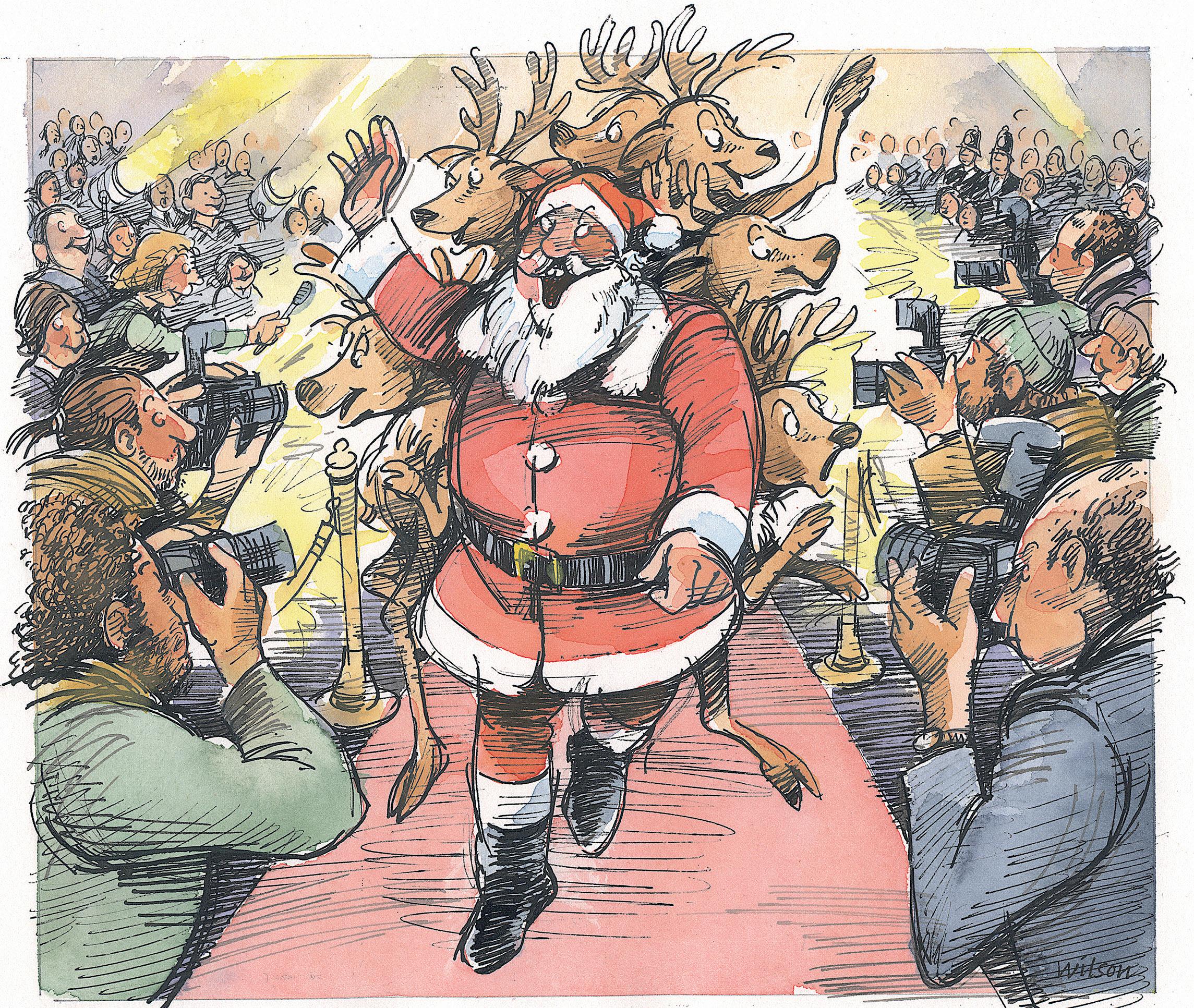

9



9
12 Olden Life: What were community-service orders? John Harding 12 Modern Life: What is grey rocking? Richard Godwin 29 Mary Killen’s Fashion Tips 39 Topple my statue! Dame Edna Everage 42 Town Mouse Tom Hodgkinson



43
45
47
47
48
48

49
50
52
52
65 Commonplace Corner 65 Rant:
10
Regulars
66 History David
67 Media Matters Stephen Glover
57
69
69
70
71
72
Golden Oldies Rachel Johnson
Exhibitions Huon Mallalieu
74
Kitchen Garden Simon Courtauld
Restaurants James Pembroke
Drink Bill Knott
Sport
Motoring Alan Judd
Travel
footsteps
84
Lucinda
87 On the
Hugh Bonneville
Moray House, 23/31 Great Titchfield Street, London W1W 7PA www.theoldie.co.uk Editor Harry Mount Sub-editor Penny Phillips Art editor Jonathan Anstee Supplements editor Liz Anderson Editorial assistant Amelia Milne Publisher James Pembroke Patron saints Jeremy Lewis, Barry Cryer At large Richard Beatty Our Old Master David Kowitz Oldie subscriptions ● To place a new order, please visit our website subscribe.theoldie.co.uk ● To renew a subscription, please visit myaccount.theoldie.co.uk ● If you have any queries, please email help@subscribe.theoldie.co.uk, or phone 0330 333 0195, or write to Oldie Subscriptions, Rockwood House, 9-16 Perrymount Road, Haywards
Advertising For display, contact : Paul Pryde on 020 3859 7095 or Rafe Thornhill on 020 3859 7093
For classified: Jasper Gibbons 020 3859 7096
Wilson
Front cover Bob



Many congratulations to the dazzling winners of the Oldie of the Year 2022.

The Champion of Champions was the great Paddington Bear. Our star guest from Darkest Peru brought with him Karen Jankel, daughter of Michael Bond, Paddington’s creator. The Paddington in the picture was the actual one made for Karen when she was a little girl.
Presenting the prize to Paddington was his landlord, Mr Brown, in the guise of Hugh Bonneville.
Hugh is interviewed on page 87 of this issue. He confirms that Paddington was a joy to work with, except on the odd occasion when he was suffering from a marmalade hangover.
Martin Jarvis (p26) is the world master at recording P G Wodehouse and the Just William stories on the radio and on audiobooks. He appeared in The Forsyte Saga and Titanic.

Bruce Beresford (p30) directed Breaker Morant, Don’s Party and the Oscarwinning Driving Miss Daisy. His film The Adventures of Barry McKenzie stars Oldie columnist Barry Humphries (p39)

Anna Pasternak (p54), a great-niece of Boris Pasternak, wrote Lara: The Untold Love Story That Inspired Doctor Zhivago She is author of Princess in Love, about Princess Diana’s affair with James Hewitt.

Mark Ellen (p57) edited Smash Hits and The Word. He presented The Old Grey Whistle Test and co-presented Live Aid. At Oxford, he played bass alongside Tony Blair in the band Ugly Rumours.

The other worthy Oldie of the Year winners this year are: the Duke of Kent, First-Time Author of the Year; Siân Phillips and Edward Fox, Oldie Stagers of the Year; Dr Henry Marsh, Oldie Brainbox of the Year; Jeremy Paxman, Cuddly Oldie Rottweiler of the Year; Jane Goodall, our Oldie Queen of the Jungle; and Alan Garner, our Wise Oldie Man of the Year.

Many congratulations to all of them. Their profiles appear on pages 14 to 17 of this issue.
Jane Goodall brought a special guest (pictured) – Mr H, her toy monkey of over 30 years’ standing.

Mr H was introduced to Paddington and they got on like a house on fire. What impeccable manners oldie animals have!

Teacher drove over wedding dress in bizarre Boxing Day row Dunfermline Press
Colindale pub wins big at the Loo of the Year Awards 2022 Edgware & Mill Hill Times
Customer wielded Nutella jar at staff Dundee Courier
£15 for published contributions
NEXT ISSUE
The February issue is on sale on 11th January 2023.
GET THE OLDIE APP Go to App Store or Google Play Store. Search for Oldie Magazine and then pay for app.
The Very Best of The Oldie Cartoons, The Oldie Annual 2023 and other Oldie books are available at: www.theoldie.co.uk/ readers-corner/shop Free p&p.

OLDIE NEWSLETTER
Go to the Oldie website; put your email address in the red SIGN UP box.
HOLIDAY WITH THE OLDIE Go to www.theoldie.co. uk/courses-tours
Left:
Below left:
Below right: Mary Kenny, Oldie columnist






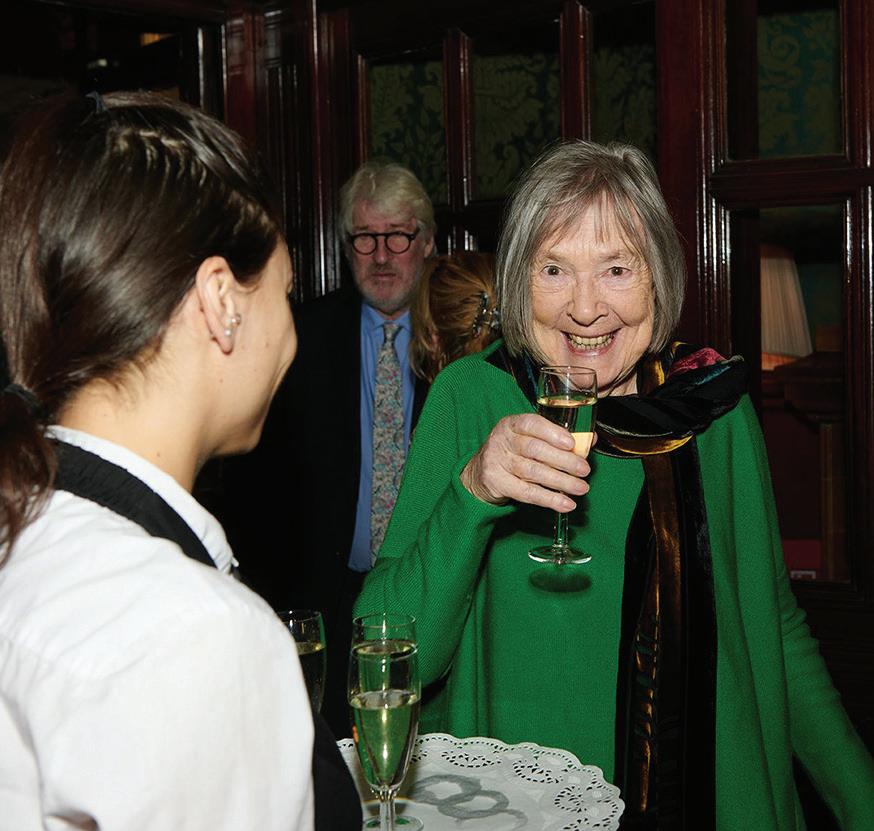
We were delighted, too, that our Oldie of the Year from last year, the great Leslie Caron, was at the party, held at the National Liberal Club.
She was prevented by illness from collecting her award from the Queen Consort (then the Duchess of Cornwall) last year. Thank ’eaven to see her back on cracking form!
How daring to hold a party in the Houses of Parliament on Bonfire Night.
The host was Maurice Saatchi, co-founder of the eponymous advertising company. He was launching his new book, Do Not Resuscitate: The Life and Afterlife of Maurice Saatchi Lord Saatchi’s guests underwent Heathrow-style security searches inside Cromwell Gate. Would Guy Fawkes have got past them?
In the Peers’ Dining Room, guests found their beaming host, in an outsize cream suit, beside a pile of his slim volumes.
In the 11 years since the death of his wife, Josephine Hart, Saatchi has demonstrated his grief and devotion to her on an admirable scale.
He held a Westminster Abbey celebration of Josephine’s poetry recitals. He got John Major to unveil a vast statue of Josephine and a memorial library in the park of their Sussex house. For seven years, he breakfasted with the statue every morning.
In his diverting book, Saatchi imagines himself dead, and put on trial. Is he, a rich, self-indulgent, self-obsessed narcissist (Josephine’s words), worthy to join his wife in heaven?
Guests included David Hare and Simon Schama, Saatchi’s friend since their north-London youth. Also there was our new Oldie of the Year Edward Fox, the first actor to read T S Eliot for Josephine Hart.
Fox suggested that Saatchi’s self-flagellatory candour – admitting that he has never in his life cooked a meal, made a bed or entered a supermarket – may ensure Saatchi will make it through the pearly gates.
Any oldies who hate the phone wouldn’t like a new burial practice in America.
In Oakwood Cemetery, Raleigh, North Carolina, the authorities have installed a phone booth for people to chat away to the recently departed. They sadly don’t answer back, but the idea is you get the sensation of still being in touch with them.
It was dreamt up by a Japanese garden-designer, Itaru Sasaki, keen to stay in touch with his departed cousin. The wooden booth in Raleigh is made by Ian Dunn, a local photographer and artist.
The phone is a great comfort to many. And no one has heard an alarming incoming call – yet.


The Old Un was deeply sad to hear of the death of the fine journalist Ian Jack, at the age of 77.
Jack wrote wonderful pieces for the Guardian, the Sunday Times and The Oldie.
He was also invaluable in 2016-17 in standing in for the late, great Alexander Chancellor when our muchmissed editor wasn’t well.
Jack wrote often and brilliantly about his native Scotland. Alexander once said to him, after reading another evocation of the West Fife coalfield in 1955, ‘One of the good things about your stuff is that there’s never any danger of coming across the Mitfords.’ RIP a great friend of The Oldie
Forget the World Cup!
This year’s biggest team in world football is Corfe Castle Veterans, from Dorset. Their new multi-billiondollar sponsor is none other than The Oldie.

Proudly bearing our logo on their shirts, Corfe, at the time of writing, are riding high in the Dorset Veterans’ League (East).
In the three games played so far, they’ve won two and lost one and they’re second in the league.
In fact, by Oldie standards, they’re spring chickens. The oldest player is 63 and the qualifying minimum age is only 35.
Calling Cristiano Ronaldo (age 37) of Portugal – and formerly of Manchester United. Corfe FC would be delighted to give you a trial.
Best of luck for the rest of the season, lads, and a very merry Christmas to you and all readers!
Many congratulations to David Nash from Gloucestershire for winning our Christmas Gift Guide Quiz by Marcus Berkmann. The answers can be found on the Oldie website.
‘Can you get a woolly mammoth? I want to take up knitting’

Flagellation has never really been a big thing with me.
In fact, it’s never been ‘a thing’ at all. I did go to a boys’ boarding school back in the early 1960s, but my kindly parents chose it specifically because the headmaster did not believe in beatings.
In the 2010s, when Fifty Shades of Grey appeared and became the fastestselling paperback of all time, I heard it was about BDSM (bondage/discipline, dominance/submission) and thought I had better read it.
I did. It’s not very well written and, as far as I’m concerned, not much of a turn-on either.
But what do I know? Nothing, it seems. The lucky author, E L James, has sold more than 150 million copies of her spanking bestsellers. They have been translated into 52 languages and turned into a nicely profitable series of films.
Thinking it would be more my cup of tea, for my Christmas reading I have embarked on Simon Heffer’s hefty yet meticulously edited three-volume edition of the diaries of ‘Chips’ Channon.
For 23 years, from 1935 to 1958, Chips was the Conservative MP for Southend. He was the father of Paul Channon MP, who became a good friend as well as a colleague when I joined the House of Commons in the 1990s.
I have reached only page 350 of Channon Senior’s diaries to date. To my surprise, there hasn’t been much high politics so far, but there has been a good deal of sex and violence.
Flagellation ‘has always exerted a strange fascination over me’, Chips confides to his diary on Valentine’s Day, 1928. He is 30 at the time. ‘I should love to be beaten by a priest or schoolmaster,’ he writes, ‘and never have.’

Me neither, and I am 75 next birthday. And while I am looking forward to the New Year and to doing things in 2023 I have never done before, there are limits.
Is this a mistake on my part? Am
I missing out? The ever-adventurous Mae West told us, ‘You only live once,’ adding significantly, ‘Do it right and once is enough.’
When it comes to the pleasures of the flesh, Chips Channon was a good deal bolder than I have ever dared to be.
Not only did he manage to find ‘a lecherous old priest’ to give him a good thrashing, he seems to have had a string of amiable and obliging prostitutes on call. He wines and dines and beds them and gives the impression of a good time being had by all.
I have had friends (members of both Houses of Parliament among them) who have visited prostitutes and, naturally, I don’t approve because prostitution is exploitation and wrong in my book – but ignore me taking the moral high ground.
The real reason I’ve never knowingly been inside a brothel is that I wouldn’t even dare ring the doorbell.
When it comes to concupiscence, I’m a coward. Years ago, sitting in a hotel bar after recording an episode of Just a Minute somewhere in East Anglia, I was approached by a friend who said he had booked a room upstairs for an orgy.
His wife was up for it – was I? Casually, I murmured that it was ‘a charming idea, of course’ but, sadly, I couldn’t because I was committed to having dinner with Nicholas Parsons.

‘Oh, bring him along, too,’ said my friend excitedly. ‘He’ll love it.’
‘Nicholas has a heart condition,’ I lied, suddenly sensing I was off the hook, ‘and I’m afraid he hasn’t brought his defibrillator.’
I am planning new adventures for the New Year, but they are pathetically predictable and safe. I am taking up painting (landscapes, not life drawing – rest assured) and I have engaged the services of a physiotherapist who is going to improve my posture and my gait. I
have fallen over three times in the past three years, because my balance isn’t as good as it ought to be and I am shuffling when I should be striding and looking at the ground when I should be keeping my eyes on the horizon. My physio is keeping me on my toes – literally. Eventually, my balance restored, I will be on my toes on just one leg with my eyes shut.
As far as the lurid lust-filled Channon diaries go, I have started – so I’ll finish. And he does write beguilingly well.
I have another book on my bedside table as well, and I am dipping into it between chapters of Chips to cleanse the palate, lift the spirit and nourish the soul.
This is a fun volume of Latin wisdom, Et Tu, Brute?, brought together by our Oldie editor Harry Mount with his friend John Davie. The book is there to remind me of the Roman poet Juvenal’s famous exhortation ‘Orandum est ut sit mens sana in corpore sano’ – ‘You should pray for a healthy mind in a healthy body.’
Do that, because, as Juvenal also says, ‘Semita certe tranquillae per virtutem patet unica vitae’ – ‘Certainly, the only path to a tranquil life is through virtue’.
Gyles Brandreth’s biography of the Queen, Elizabeth: An Intimate Portrait, is out now (Penguin, £25)
It came as a shock recently to discover, in some long-abandoned cranny of this ravaged psyche, a residue of what felt like self-respect.
Any epsilon male sunk deep into middle age, and deeper into irrelevance, has no business caring what others think of him.

He simply assumes that, in so far as they think of him at all, they think of him with either contemptuous indifference or mild loathing. In this, they precisely mirror his feelings about himself.
Yet a fragment from an ultra-rare party invitation – the previous one, from memory, was in celebration of Edward VIII’s abdication – unleashed a torrent of appearance-related concern.
Beneath the date, time, venue and reason (anniversary) came the scariest phrase in the language: ‘Black tie’, it read.
Now there must be those, I suppose, who are not utterly petrified of those two words.
To the borderline dyspraxic Jew, however, it would be less distressing to see in their place ‘Iodine pills provided, but please bring your own Geiger counter’. Or even, scrawled in the host’s hand, ‘We’ve put you next to Ann Widdecombe. She’ll be needing a dance partner after dinner.’
For the record, it isn’t the matter of tying the garment that induces the panic. A man’s gotta know his limitations, as Dirty Harry counselled a soon-to-be corpse, and I know mine well enough never to have attempted such a feat.
There is a higher chance of my winning Winter Olympics bronze in the two-person bobsleigh, partnered by Ms Widdecombe, than of my tying a tie of any colour into a shape capable of being mistaken by an averagely observant Basset Hound for a bow.
What induced the panic was that I have always struggled, and seldom victoriously, with a clip-on. Putting it
round the neck is manageable. Clipping the clippy bit into the invisible receptacle is less so.
Before the dinner, the hostess assured me, with typical sweetness, that it was not obligatory. ‘Many of my friends are far from certain to wear any sort of tie,’ she said. ‘Trousers would be nice,’ she went on, ‘and even some clothing above the waist. But the black tie couldn’t matter less.’
Yet somehow it did matter. What if someone of whom I stood in awe should see me black-tieless, and mistake manual incompetence for arrogant disdain for convention?
It’s like being offered an honour. As someone of the Left once explained when attacked for taking an MBE, he lacked the vanity to refuse it.
But which awe-inspiring character could you expect to see, wondered the hostess, on this night? ‘I dunno,’ I said. Marcus Rashford? Jessica Chastain? The President of the United States?
Her reassurance that none of the above was likely to be present didn’t cut it. It had become a matter of honour.
I confess to moments when I came close to breaking. After 47 futile minutes spent fiddling with the invisible clasp, tears pricked the eyeballs as they invariably do at that point in the duvetchanging process when one finds oneself wholly encased within the cover.
In the Uber, with the bow sloping at a fetching 43-degree angle, I confided the problem to the driver, and sought his permission to go tieless.
Quite the stickler, Abdul wouldn’t have
it. He was adept at such tasks, he said, and would clip it firmly in place on our arrival.
He kept his word, accepted a lavish tip and drove off. The bow stayed rigidly level for almost 15 seconds before slipping the clasp and resuming its diagonal.
So it was that I found myself doing something that might once have earned an appointment in Bow Street. Whether importuning strangers and for help with a bow tie in a public lavatory would have seen me banged up is hard to call. That would have depended on the individual beak.
Eventually, the tie was clipped into place by a bemused but kindly fellow guest, and so it miraculously remained for some hours.
I would have stayed later but left shortly after midnight, when the tie resumed its diagonal stance. Energised by a magnificent evening, I started walking home. The booze having ravaged my meagre store of motor control, I was zigzagging along Park Lane, eyes rooted to the pavement and muttering dementedly, when the sound of approaching steps made me glance up.
Walking towards me, some four feet away, a phalanx of gigantic young men formed a protective hemisphere around a smaller, older one.
‘Good grief,’ I instinctively yelled. ‘Mr President!’
‘Hello,’ said Bill Clinton, a dead ringer in his skinny dotage for Dick Van Dyke, with no hint of the genuine warmth he’s so fabled for synthesising.
I offered a cheery ‘Not so bad’, preparatory to engaging him in geopolitical chat. But the Secret Service detail seemed unkeen, and moved him briskly along.
‘Weirdo,’ I heard one say as they accelerated towards Hyde Park Corner.
‘Yeah,’ said someone else, possibly an erstwhile leader of the free world. ‘And what a terrible f****** tie!’
A friend’s party meant the ultimate torture – ordeal by bow tie
I spent 47 futile minutes fiddling with the invisible clasp

Fifty years ago, on 2nd January 1973, Mr Justice James, who’d been the judge at the Great Train Robbery trial, made the first community-service order in the world, at Nottingham Crown Court.
These orders are still issued today.
That first order – 120 hours of service – was given to Peter, a university student and cannabis-supplier.
I was the senior probation officer responsible for setting up community service in Nottinghamshire. It was a Home Office pilot scheme to test the viability of the sanction as an alternative to a shorter period of prison.
Community service was the brainchild of a Home Office Advisory Council Committee, chaired by Baroness Wootton. She believed community service offered an offender the opportunity to undertake constructive activity in the community, gain new skills and make amends.
It was made available in both Magistrates’ Courts and Crown Courts. The range of service hours was between 40 and 240 – later expanded to 300.
In the months leading up to 1973, senior probation officers in the six pilot areas were charged with securing tasks from the public and voluntary sector.
Peter, the first community-service offender, confirmed that his communityservice experience in old people’s homes had had a positive impact on him. He spent most of his later career working with emotionally disturbed adolescents.
Jim, a gas fitter, was driving with his fiancée when he hit a telegraph pole. She was killed outright. He wanted to go to prison. Instead, he was given a communityservice order of 240 hours. He spent his time as a nursing assistant in the A&E of a Nottingham hospital. He later applied for nursing training and was accepted.
The government, encouraged by Mark Carlisle, the Minister of State at the Home Office, said community service was viable. Orders were made and completed and the scheme was taken across the country in England and Wales from 1975.
Replication of community-service legislation spread across Europe, America and Australasia within ten years.
In a retributive age, community service has been rebranded to catch the mood of tougher penalties. Offenders now wear
fluorescent tabards over their overalls to be recognised by members of the public.
The popular imagination of community service has been fuelled by notable cases such as the footballer Eric Cantona. In 1996 he received an order of 150 hours for kicking a football fan who ridiculed his play.
Support has come from Lord Phillips, the former Lord Chief Justice. In 2006, he spent a day working anonymously with a group of offenders clearing graffiti on a poor housing estate in Milton Keynes. The experience reconfirmed his belief in community service as a viable alternative to prison.
Over the past 50 years, community service has survived the pandemic and a brief but disastrous period of privatisation under Chris Grayling. It has emerged as a tested community penalty that brings benefits to communities and offers offenders a chance to gain new skills and restore their self-image.
John HardingJohn Harding was Chief Probation Officer for inner London, 1992 to 2001. He ran the Home Office pilot scheme on community-service orders in Nottinghamshire, 1972-1974
Grey rocking may sound like the kind of thing Neil Young does when he gets really into a guitar solo – but I’m afraid it isn’t as exciting as that.
It is, rather, a strategy for dealing with narcissists, attention-seekers and emotional abusers. Whatever they throw at you, you remain as calm as a grey rock – and soon they will crumble.
Let’s say the difficult person in your life announces over the phone that you are a terrible human being – and you ruined their life – and yes, they do intend to make a scene about it at Mark and Linda’s wedding – and no, they will not let this drop.
In response, you behave like an impassive grey rock. You don’t cry, shout, placate or reason. You are pleasant and polite. You say, ‘OK’, ‘Yup’ and ‘Could you put that in an email, please?’
The idea, one American therapist
explains, is to deprive the narcissist of the one thing they crave, which is drama. ‘You’re this immovable, impenetrable force who is uninterested.’
The narcissist becomes confused, agitated and finally bored. You are then, hopefully, free to get on with your life. A friend of mine grey rocked her impossible ex-husband – and it can be used on all kinds of difficult people, from toxic bosses to maddening siblings to rotten, ungrateful children.
Grey rocking is part of an everwidening lexicon of 21st-century interpersonal relations, usually dealing with ‘narcissistic abuse’. ‘Red flags’ that you should watch out for include ‘breadcrumbing’. That’s when someone leads you on with manipulative intent by giving you tiny crumbs of affection before suddenly ‘love bombing’ you with extravagant, disorienting promises of undying dedication.
This is often followed up by ‘ghosting’
(the sudden withdrawal of communication) or ‘gaslighting’ – when someone convinces you that you are going mad. The term ‘gaslighting’ originated in the 1938 psychological thriller Gaslight (pictured) by Patrick Hamilton and is now common currency among under-40s.

It shouldn’t be so surprising that these terms are proliferating. We live in a Golden Age of the Narcissist. Such people were previously confined to families and workplaces. Now they have dating apps and social media to prey on.
Grey rocking gives the non-narcissist a means to hit back and a rationale for doing so. It’s the non-digital equivalent of the ‘mute’ button. But it too is prone to abuse. Is someone in your life repeatedly averting conflict with ‘Mmm,’ ‘Yes’ and ‘That’s nice, dear!’?
Watch out – you’ve been grey-rocked! Richard Godwin
what is grey rocking?
what were community-service orders?

By royal appointment, this is Paddington’s year.
We had the judges’ lunch to choose the 2022 Oldies of the Year in late September, just a week after the funeral of Queen Elizabeth II. Even before we had chosen our starters, we had agreed that this would be a year when a salute to someone associated with Her Majesty might be appropriate.
One of us (me) suggested honouring all the Queen’s living ladies-in-waiting with a group award. But, according to our unwritten rules, we don’t do group awards. (A TOOTY is not the George Cross; it’s more the OM.)
Someone else suggested honouring Terry Pendry, the late Queen’s groom, but, looking him up, we found that he is only 72, which these days seems a bit young for an Oldie award. Eventually, unanimously, we settled on Paddington Bear as our Oldie of the Year.
For most people, the highlight of the Queen’s Platinum Jubilee celebrations in June was the film of Her Majesty taking tea with Paddington at Buckingham Palace. Our ursine hero offers the sovereign a marmalade sandwich, and the Queen reveals she doesn’t need it because she’s got one in her handbag.
We loved the moment because we loved the Queen (and she played her part so well: truly, neither Olivia Colman nor Imelda Staunton could have done it better) and we love Paddington. He may have come from darkest Peru, but he is now an undisputed National Treasure.
Paddington made his first appearance in a children’s book by Michael Bond, A Bear Called Paddington, originally published in October 1958. His daughter, Karen Jankel, accepted Paddington’s award from Mr Brown (aka Hugh Bonneville) with her original Paddington tucked under her arm (pictured).

Twenty books by Bond followed and the bespectacled bear – with his hat and duffel coat, battered suitcase, endearing
courtesy and equally endearing ability to get into all sorts of scrapes while trying so hard ‘to get things right’ – found his way into the hearts of children and parents across the globe.
Paddington books, translated into 30 languages, have sold more than 30 million copies worldwide.
The first Paddington toy was created in 1972 by Gabrielle Designs, a family business run by Shirley and Eddie Clarkson, who gave their prototype bear as a Christmas present that year to their children, Joanna and Jeremy Clarkson. (Yes, that Jeremy Clarkson.)
It was Shirley Clarkson who made Wellington boots a standard part of Paddington’s wardrobe. She needed boots to help the bear stand upright.
I first met Mrs Clarkson in the 1980s when my wife and I opened our Teddy Bear Museum in Stratford-upon-Avon. I first met Michael Bond in the 1970s when he was making the Paddington television series in which the bear was a six-inchhigh articulated figure whose limbs were painstakingly adjusted between each frame to enable him to move.
Michael Bond wrote the words and Michael Hordern delivered them. When they finished the series in 1980, Bond generously gave me the little Paddington and props from the sets – his bed, stove and armchair – now at the Teddy Bear Museum, Newby Hall, North Yorkshire.
‘Things are always happening to me,’ says Paddington in one of Michael Bond’s first books, ‘I’m that sort of bear.’
In 1994, the British Channel Tunnel team chose Paddington as the first item to pass to their French counterparts when the two sides of the tunnel were linked. In 2014 and 2017, Paddington and its even better sequel, Paddington 2, were international cinematic hits.
For the first film, Colin Firth was cast to voice the bear, but Bond’s family (who were given a say in the matter) thought Firth didn’t sound quite right. So Ben Whishaw was brought in and is now the accepted voice of Paddington.
The Queen was born in the same year as Michael Bond – 1926. So was Sir David Attenborough OM. For the service of thanksgiving at St Paul’s Cathedral to mark the Queen’s 90th birthday, Michael Bond wrote a piece celebrating their shared vintage, read by Sir David.
1926 was also the year Winnie-thePooh made his first appearance in print. The Queen was fond of Pooh as well as Paddington. She also, she once told me, had a soft spot for Rupert Bear. Today we are saluting Paddington, a right royal bear for all seasons and our undoubted Oldie of the Year.
PS Michael Bond found the original Paddington in a shop near Paddington Station on Christmas Eve in 1956. He meets our TOOTY age requirement because Paddington, like the Queen, has two birthdays every year, one on 25th June and the second on 25th December, which makes him twice his human age.
So he is a venerable 132 years old – a new record for our Oldie of the Year!
By Gyles BrandrethThe Duke of Kent became a first-time author in April, aged 86. His book, A Royal Life, has been reprinted twice and there are 12,000 copies out in the world.

I had the privilege of collaborating with him on this, and it is the first time that a book of oral history has been published with the Royal Family copiously quoted, somewhat on the lines of George Plimpton’s books on Edie Sedgwick and Truman Capote. Different voices move the story forward. The Duke’s voice is predominant; we also hear from the Duchess, Princess Alexandra, Prince Michael, his three children and his three maternal cousins.
This year also saw the Duke take part in his first podcast, released on Remembrance Sunday. This was part of the Commonwealth Poetry Podcast of Gyles and Aphra Brandreth, and celebrates the work of the Commonwealth War Graves Commission, of which the Duke has been President since 1970.
The Duke joined the Queen on the balcony of Buckingham Palace in June, as the columns marched back up the Mall after the Birthday Parade. When they came out, she asked him if he was going to salute. He said he was. ‘Well, don’t knock my hat off,’ said the Queen.
Having walked in the funeral procession of King George VI in February 1952, the Duke and his brother Prince Michael were on parade walking behind the Queen’s coffin in Westminster Abbey and at the Committal Service in St George’s Chapel in September.
His has been a remarkable life of service. He has been a duke for a record 80 years, since his father was killed in a plane crash in RAF service in 1942. Never seeking the limelight, he defined his role as supporting the Queen in whatever way he could. He undertook many independence ceremonies in the 1960s, and was sometimes called home from his tank in Germany to greet a state visitor.
He was the mainstay of Wimbledon for many years and, having in 1969 succeeded his mother, Princess Marina, as President of the Royal National Lifeboat Institution, has made it his business to visit as many of the lifeboat stations as possible. He still has a few to tick off the list.
He still has plenty of ‘snap in his celery’ and looks forward to continuing
ByWho can forget Dame Siân Phillips poisoning Brian Blessed’s figs, in I, Claudius? Or the way she broke Alec Guinness’s heart, as Lady Ann in Tinker, Tailor, Soldier, Spy?
Siân always had enormous ice-queen poise – but was saved from caricature by a Welsh twinkle, as if ironic laughter was never far off.
Born 89 years ago in Glamorganshire, she grew up speaking Welsh. I once saw Anthony Burgess trying to speak Welsh to her. She reacted as if he was spouting Double Dutch – which, as this was Burgess, he possibly was.
Siân learned English by listening to the radio, in the days of Alvar Lidell. This accounts for her beautiful enunciation.
I could listen to her voice all day. There’s a brittle sort of melancholy to it – Welsh people are uniquely euphonious: Richard Burton, Mavis Nicholson, Anthony Hopkins, Michael Sheen.
Siân started out, indeed, as a newsreader for BBC Wales. Moving to London she was an immediate hit on stage in Ibsen and Shaw, and latterly Sondheim. She played Marlene Dietrich to acclaim, and it’s a tribute to her skills and gusto that she was never eclipsed by her marriage to the tempestuous Peter O’Toole.
Bouncers were required recently to keep her out of Actors’ Benevolent Fund meetings – that’s how formidable she is. Nearly 90, she has been on stage in Windsor in The Chalk Garden, playing a leading role which in the past has attracted the likes of Edith Evans and Sybil Thorndike. Siân is in their league.

Also in The Chalk Garden, opposite Siân, was the fantastic Mr Edward Fox, a mere 85. The Day of the Jackal (1973) can be watched time and again. Edward gives a more or less silent performance, as the assassin putting together his master plan. In everything he does, Edward exudes huge confidence, without needing to be flamboyant or making a meal of things.
As the Prince of Wales in the classic series Edward and Mrs Simpson (1978), I dare say he was more impressive and regal than the man he was impersonating. The real Edward VIII was a spoilt idiot; Edward Fox gave him tragic depth.
He is reliably perfect as a military man. Edward must have been cast as a thousand lieutenant colonels; he’s also good at butlers – the same sort of role, requiring impeccable manners and attention to protocol.
My favourite performance of his is as the forlorn clown, a supporting role in The Dresser (2015). Edward Fox quite steals the show from Anthony Hopkins and Ian McKellen, who seemed unaware of what was happening.
 By
By
Roger Lewis, author of Erotic Vagrancy: Everything about Richard Burton and Elizabeth Taylor, out in 2023
to serve the new King, his cousin, in whatever way he can.
Hugo Vickers, co-author with the Duke of Kent of A Royal LifeNew boy: the Duke of Kent The oldie troupers: Siân Phillips and Edward Fox
Henry Marsh, now an oldie at 72, practised neurosurgery, the most prestigious and probably the most nerve-wracking of all medical specialties, for many years.
Neurosurgery entails the bearing of what for most of us would be an intolerable burden of risk and responsibility; of no type of surgery is it more true that the surgeon should have the eye of a hawk, the heart of a lion and the hand of a lady.
In addition to his work in the National Health Service, Henry Marsh undertook teaching and operative work in far less favourable conditions in Ukraine and Nepal, where countless people, both doctors and patients, now owe so much to him.
All this would have been more than enough to fill any average human life with achievement, yet Henry Marsh has written a trilogy that inscribes him also in the roll of foremost authors of his day, all three books deservedly having been bestsellers.
In First Do No Harm, published to universal acclaim in 2014 and translated into many languages, he conveys to the reader, possibly better than any surgeon has ever done, the prolonged drama, tension and anxiety of his work. It is as if we were making the life-and-death decisions with him and accompanying him into the very lion’s den of the operating theatre.
He continues the story in Admissions, published in 2017 – the patients being admitted to hospital, and the surgeon admitting to his failures and failings. No doctor has ever been franker in public about his mistakes, mistakes in neurosurgery having the direst possible consequences. This bespeaks Henry Marsh’s great courage, for it is tempting for those with great responsibilities to hide behind a mask of infallibility.
In his last book, And Finally, Henry Marsh confronts with his hallmark honesty a reminder of what must eventually confront us all: his own mortality. Diagnosed with advanced cancer of the prostate, whose symptoms he chose to ignore (doctors always being tempted to believe that illness is something that happens to others), he learns at the end of a long and active life what it is to be on the other side of the medical encounter, and wishes, for the sake of his own practice, that he had learned earlier in his career the lessons that it taught. By acknowledging it publicly, he helps others to learn.
No man deserves recognition more than Henry Marsh, surgeon, humanitarian and author.
 By Dr Theodore Dalrymple, The Oldie’s resident doctor
By Dr Theodore Dalrymple, The Oldie’s resident doctor
Paxo – not stuffed by Parkinson’s
veteran Times foreign correspondent Louis Heren.
Leaving the programme in 2014, Britain’s favourite rottweiler looked forward to going ‘to bed at much the same time as most people’. In his spare time, he wrote a dozen books (including several bestsellers), wrote and presented two admired documentary series (on the Victorians and the British Empire), played himself in Who Do You Think You Are? and The Thick of It, and has been the longest-serving host of University Challenge, a role he has thoroughly relished.
Jeremy Paxman, known for his roasting skills as ‘Paxo’, cruised the British airwaves for 50 years, taking off at Radio Brighton in 1972, and landing this year in a brave and poignant film, Paxman: Putting Up with Parkinson’s

He worked on Tonight, Panorama, Breakfast Time, Start the Week, Did You See…? and the Six O’Clock News, reported on the Troubles from Belfast and, for a quarter of a century, gripped the nation as the dyspeptic star of Newsnight.
In that guise, he famously asked Michael Howard the same question 12 times in a row. This was later revealed to be merely a response to the producer’s frantic request in his ear to play for time because the next item wasn’t ready.
Jon Snow said Paxo’s greatest strength was that he was ‘not very political’. He himself disavowed his supposed watchword, ‘Why is this lying bastard lying to me?’, attributing it to the
He has been garlanded with prizes: two BAFTAs and two university fellowships, three honorary degrees and five RTS Awards. In 2000, he made the headlines when he inexplicably received in the post a German Enigma machine, stolen from Bletchley Park Museum.
Jeremy and I belong to a tiny, secretive, four-man organisation which meets monthly in a Notting Hill hostelry in a futile attempt to set the world to rights. There, a year before he was diagnosed, Jeremy complained of stiffness and shyly asked if I could recommend him a yoga teacher –something he had thitherto caustically disparaged. I put him in touch with my friend Kathy, with whom he grumpily consented to adopt the downward dog once a week.
If Paxo is sometimes criticised for treating people worse than a dog, you should see him contentedly downing a pint with his faithful rescue pup, Derek, whom he treats with benign respect and never attempts to stuff.
ByJohn Lloyd, producer of Spitting Image, Blackadder and QI
Jeremy Paxman
cuddly oldie rottweiler of the year
In 1957, a 23-year-old Englishwoman called Jane Goodall boarded a ship bound for Kenya, to visit a friend who lived on a farm near Nairobi. It was her first trip to Africa; it was a journey that would change her life.
In Kenya, Jane met the renowned paleoanthropologist Dr Louis Leakey. Impressed by her strength of character and her passion for wildlife, Leakey sent her to Tanzania to study chimpanzees. The pioneering research she did there transformed our understanding of those noble animals – and of ourselves.
Living in close proximity to these extraordinary creatures, in a remote part of Tanzania, Goodall discovered that chimpanzees aren’t vegetarians – they’re omnivorous and hunt for meat. She found out, too, that they make and use tools. Above all, she established that they’re unique individuals, with complex personalities and a wide range of emotions comparable to our own.
Her research bridged the gap between popular science and academia. She wrote a bestselling book, My Friends the Wild Chimpanzees, and earned a doctorate at Cambridge University – one of only a few students to be awarded a PhD without first having studied for a BA or BSc. Yet rather than resting on her laurels, she returned to Tanzania, where she spent the next 20 years studying chimpanzees in the Gombe Stream National Park.
She was born Valerie Jane MorrisGoodall in 1934, in London, and grew up in Bournemouth. Her mother was an author, her father an engineer. Throughout her childhood, she dreamed of going to Africa to study wildlife – as a toddler, her favourite companion was a toy chimpanzee called Jubilee.
Through her long and restless life, she’s remained a tireless innovator. In 1977, she established the Jane Goodall Institute, a worldwide conservation programme. In 1991, she set up Roots & Shoots, an organisation helping young people to participate in projects that protect the environment. Flying over her beloved Gombe, she witnessed the dramatic deforestation of the region. She realised that working with local communities to preserve the native flora was just as vital as supporting the chimpanzees themselves.

Aged 88, she still travels the world, giving lectures about her groundbreaking work and the importance of ecology. Her remarkable, inspirational career is a triumphant vindication of the sound advice her mother gave her as a child: ‘Jane, if you really want something and if you work hard, take advantage of the opportunities and never give up. You will somehow find a way.’
By William Cook, the theatre critic for The OldieAt the age of 87, Alan Garner this year became the oldest writer ever to have a novel shortlisted for the Booker Prize.

Treacle Walker, at only 15,000 words, is an Alan Garner classic, full of magic and strangeness and fairy tale. Though Garner tells stories that draw from a deep collective well of myth and legend, no one tells them quite like he does.
He has created, as Sam Leith put it in the Telegraph, ‘a small universe charged with meaning. A glimpse of a world suffused with magic, of which our own day-to-day existence seems to be a flickering instantiation’.
This is the small universe Garner has been creating since the 1950s, in novels inspired by a vast reading in folklore and myth and by the landscape of rural
Cheshire. That’s where he was born in 1934 and where Garners have lived since 1592. A particular influence is the eerie sandstone escarpment known as Alderley Edge. The Edge, under whose shadow he spent his childhood, has featured in many of Garner’s novels. In an interview in the Guardian in 2019, he wrote that the Edge was ‘my playground, school and world. It was where I learned to see, hear and feel; the grassness of grass, the rockness of rock, the skyness of sky.’
Garner’s first novel, The Weirdstone of Brisingamen, based on stories told to the young Garner by his grandfather about a king and his knights for ever sleeping under the Edge, was published in 1960. It was followed by a sequel, The Moon of Gomrath, in 1963, and the third in the trilogy, Boneland, nearly half a century later in 2012.
The Owl Service, published in 1967, is rightly hailed as one of the greatest children’s books of the 20th century. It was made into a popular television series in 1969.
Alan Garner’s output is slow but steady. ‘Given that it takes me between five and nine years to write a novel,’ he wrote, ‘the joke runs a bit sour when you’re in your early 80s.’
Thankfully, he has no plans to give up and despite the influx of footballers and their mansions to Alderley Edge, Alan still lives in rural Cheshire and continues to remind his readers that below the surface of modern life lurk older, wiser enchantments.
By Lucy Lethbridge, author of Tourists and ServantsChristmas, as portrayed in the Beano – oh, wonder of wonders!


During its heyday in the 1950s and 1960s, when it was selling way over a million copies a week, I gorged upon this fabulous comic.
The Beano and the Dandy – they came to form the twin pillars of this only child’s schoolboy existence. That might sound just a tad sad, but actually it was quite endlessly joyous.
These regular entrées into a world just crammed with so colourful an array of such attractive imps and chancers were a lifeline for me.
It’s rather amazing because the most memorable characters should have seemed merely alien and absurd to a prep-school boy in Hampstead: Dennis the Menace, Roger the Dodger, Minnie the Minx (the token girl – though what a girl!), the cowboy strongman Desperate Dan (fuelled by Aunt Aggie’s Cow Pie, replete with dangling tail, and whose pipe was fashioned from a drainpipe and a dustbin).
Yet I was sucked into the sheer exuberance of it all, poring over the wonderful drawings, and hanging on every bubble of dialogue.
Little Plum, ‘Your Red Indian Chum’, really was my chum. They all were. At Christmas, having lived the whole year with one another, we could all come together to celebrate! Or, at least, that’s how I yearned for it to be.
I wanted to live in Beanoland and Dandyland – they were just so much better than where I lived. Even the considerable perils failed to put me off – it could be a pretty dangerous place. Tough guys and bullies were everywhere – black eyes, bandaged heads and cauliflower ears being regular sights.
Even the solitary aristocrat, Lord
Right: Desperate Dan, Korky the Cat and his Dandy chums
Snooty, and his merry band at Bunkerton Castle were not safe from the horrible Gasworks Gang – though Snooty’s gleaming, black silk topper always managed to remain in place. There was other violence – and all at the hands of adults: the swishing cane of Teacher in the Bash Street Kids (my favourite of all the strips) and the slippers wielded in the final frame by the furious fathers of Dennis, Roger – and even Minnie.
They all gave as good as they got –with their trusty catapults and peashooters (no bobby’s helmet was ever safe). The vehicle of choice, the cartie, was a weapon in itself – very useful for sending people flying head over heels.
It was fashioned from a wooden soapbox and old pram wheels, for which the local rubbish dump could always be relied upon. The mattress springs at the dump were ideal for attaching to your shoes, making you leap skywards and into the grumpy neighbour’s orchard to snaffle apples.
There were quite a lot of treats over the Beano and Dandy year – fish suppers at Toni’s, a mound of mashed potato with mandatory protruding sausages, a bag of sweets filched from Walter the Softy, and even the occasional slap-up meal at the Hôtel de Posh.
But all these were nothing compared with the promised delights of the December festive issue – the masthead draped in snow, bearing the warming tagline ‘A MERRY CHRISTMAS TO ALL OUR READERS’.
At home, we had very little in the way of decoration: paper chains which would come ungummed owing to insufficient application of saliva; balloons which would shrivel; and a small, artificial tree.
Each year, there were fewer glass baubles on the tree, because of breakage,
despite each of them having been lavishly swaddled in copious sheets of Bronco.
Ah – but in my comics on Christmas Day was everything I desired. Beanoland and Dandyland would be covered in thick, virgin snow and, later, snowballs would whizz between grinning children in fringed check scarves (with another jauntily wrapped about the neck of a mighty snowman, with his pipe and trilby).
There were bulging stockings at dawn (sometimes you’d even get a glimpse of Santa delivering them!). At the foot of the huge, brilliantly bedecked tree, there were excitingly wrapped mounds of presents, each with an extravagant bow.
But it was the midday feast that was the true crowning delight in the comics: here was Yuletide heaven on earth.
Everyone sat around a vast dining table with a glistening roast turkey the size of an ostrich, flanked by crenellated jellies, a globular Christmas pudding and endless fizzy pop.
All my lifelong chums would be pulling crackers. These would snap at the centre with a jagged red and yellow star. And, oh, I so much wanted to be there.
A Merry Christmas to Beano readers who loved those golden days, too.





My wife used to persuade me, when I was applying for a passport, to put ‘Fruit farmer’ rather than ‘Investment manager’ in the space for ‘Occupation’, though I was nothing of the sort. She didn’t like the flavour of ‘Investment manager’.
Next time I renew, I can with a clear conscience put ‘Working grandfather’ in there. And golly, it sure is work. I am delighted to see that Liz Truss is thinking of shelling out a modest fee to childcaring grandparents.
Young mothers who look after children are far too busy to write articles about what hard work it is, and when they get older, they forget. So the subject doesn’t get as much airing as it deserves.
But circumstances have plunged me into the job. It’s only part-time, because there is a partnership between me and the other grandparents – who do more than I do.
The other grandfather and I did think of formalising the partnership, advertising our services as Granddads Inc, until we fell out in the kitchen at about two o’clock one morning, scrabbling around urgently for a clean nappy and a bottle for milk to deal with the current emergency.

He accused me of wearing ‘green prep-school pyjamas’ – what are ‘prepschool pyjamas’, for heaven’s sake? How do they differ from pyjamas? And I was perhaps too loquacious about the hideousness of his early-hours appearance in boxer shorts. Prep-school boxer shorts, I might have called them.
Part-time it may be but, with two children under three, it is intense.
First thing in the morning, there are the bottles of milk to produce (not too hot, not too cold, exactly the right number of spoonfuls of that rather delicious powder); the nappies to change; the lost unicorn dress to find because only the unicorn dress will do with the pink sparkling shoes; breakfast; the
bundling into a pushchair and wheeling through Streatham to the nursery with the mad mongrel dog.
There is usually a drama because even if ballerina bunny can be found, pink bunny or little white bunny or tiger has usually gone AWOL and they are essential to the journey.
In the afternoon, the routine is reversed: collect from the nursery; push back home with chat about the leaves and the trees and the pink house (pink is a big theme) and the cats and dogs and birdies en route; and check that ballerina bunny and little white bunny and tiger and pink bunny all are present and correct. If not, bunnies are a subject better avoided.
I have become an expert on the amount of sugar in cereals. Weetabix has by far the lowest sugar count. But the 1½-year-old behaves like an out-ofcontrol cement-mixer, hurling the stuff round the kitchen with shouts of ‘Oh no! Oh no!’
When I get back from nursery and clear up, the little splodges of Weetabix have hardened so much that they have to be chiselled off the floor and high-chair. I
wonder if there is some chemical reaction once Weetabix is air bound.
So we avoid Weetabix, and sugar up. We go as far up the scale as Cheerios, which have nearly ten times as much sugar in them as Weetabix. Scattered Cheerios are a doddle to retrieve.
Then there all the ancillary details of childcare. In my day, pushchairs were quite straightforward. Now there are triggers, buttons and levers all over the place, which have to be activated to operate the thing successfully.
Folding or unfolding reminds me of W1A and Hugh Bonneville’s fingerslicing adventures every morning when he arrived on his Brompton at the BBC.
The seat belts are of bewildering complexity – straps everywhere like an octopus’s tentacles – and bits that have to be fitted to one another like a Jenga puzzle. Slings – the things you have on your back with a child inside – are worse.
Why aren’t there courses in pushchair and sling management so that the hapless (grand)parent can discover more easily which is the right way up and the right way round, and which cavity the child should be slotted into?
The mad mongrel provides her own challenges. The dog-poo bags are helpfully marked ‘Open here’ but are just as intractably unopenable here as there, like black binbags. It’s ‘intuitive’ but I know what intuitive means: it means impossible for the over-50s.
There are advantages in grandpa status. There are opportunities for conspiracy.
‘I want chocolate,’ the infants say.
‘What about this delicious apple?’ I answer.
‘I want chocolate.’
‘Well, I suppose a little bit of chocolate if you say, “Please, grandpa,” but better not tell Mummy.’
‘Please, Grandpa.’
A done deal.
Christmas is a time for families.
Yet families can come with complications – if they come at all. Children have to go to their in-laws, or prefer to celebrate their new babies in their own little nuclear families. Fused families often don’t fuse because they have different traditions and resent the loss of their own. In-laws might not get on.
But Christmas is most difficult for single people. As you grow older, you find yourself wondering whether it really was the right decision not to have children – as that also means no grandchildren.
A friend of mine, though, says the sight of other people’s grandchildren running riot, high on Christmas pudding, is enough to remind her precisely why she prefers being on her own. Her answer to Christmas is to stay at home with a pile of books and switch her phone off. She says, ‘I don’t want to know nobody is phoning me because I might start feeling sorry for myself.’ For her, lockdown was almost a relief, with everyone isolated.
Nor does she want others feeling sorry for her. ‘I daren’t go for a walk on my own on Christmas Day in case I meet anybody and they think, “What a sad old bag.” ’

She’s right. I remember in my twenties driving past a café where a woman was eating on her own. I cried all the way to my Christmas lunch with friends, not only because I was sorry for her, but because I had a vision of that being me in 50 years.
Instead of recognising that some families like to have a few outsiders around the table – to widen the conversation, or to justify all the cooking – I find myself asking whether I could be the equivalent of the old aunt, brought out with the Christmas decorations, whom the young dread sitting next to.
I’ve had some wonderful, relaxed
Christmases around other people’s tables. They were free of the accrued emotional baggage and simmering sibling tensons that can go with your own family gatherings.
I am certainly not saying you shouldn’t ask your single friends to join you; just recognise that they may have their own reasons for declining.
Each family has its own way of doing things. I once found myself standing up for grace, without realising that everybody thought I wasn’t happy with the seating plan.
Family rows, with origins in Christmases past, can be part of the rich fabric of a traditional Christmas but, to an outsider, they can be mystifying.
Don’t, whatever happens, allow yourself to be a buttress between warring in-laws. And avoid asking young grown-ups what happened to that nice person they brought last year. That can end in tears.
The big dividing line is whether they play games. These are anathema to me.
My own brother, having acquired an extended family late in life, loves competitive singing and the kind of games that involve transferring balloons between intimate parts of the body.
I can see they are good for bringing the generations together, but they are not my thing. I know I must seem very curmudgeonly when I decline his invitation. But there is only so long you can spend in the loo.
An alternative to going to friends is to help with a lunch for the less fortunate. But in some places, such events have been so overrun with helpers, reluctant to admit that most antisocial of conditions – loneliness – that they’ve practically had to go out into the streets to track down people to serve lunch to.
This year, though, there may be far more takers as families struggle with the costs of Christmas.
Beware of what you ask for: a friend rang up St Martin-in-the-Fields to offer to help. He was told to turn up at 2.30 in the morning to peel spuds.
The next year, he invited half a dozen Chinese students to Christmas lunch.
‘They loved the food but couldn’t understand a word I said, however loud I spoke,’ he said.
This year, he’s inviting Ukrainians.
There are specially designed Christmas breaks abroad for older single travellers. These are not matchmaking holidays but opportunities to do things with other people if you want, without paying a single-room premium.
Riviera Travel offers Kraków, among other cities. And there’s Friendship Travel for Turkish holidays. Google ‘Christmas holidays singles’ and you’ll find lots. Read carefully and you can avoid any seasonal bonking fests –unless that’s what you want.
One year, I went to a lovely hotel in the mountains of Morocco with a colleague who loathed the whole idea of Christmas. But when the day came, the hotel had gone to great lengths to prepare a traditional English Christmas lunch, complete with piped carol music. She was furious, and demanded a tagine.
Happy Christmas!
The author and friends have requested that she use a pseudonym in case she’s never asked out again



As a show of drinking pictures opens, Hugh Thompson staggers around London pubs in the footsteps of artist Edward Ardizzone
In 1939, the illustrator Edward Ardizzone (1900-79) combined with his friend Maurice Gorham, a journalist (1902-75), to produce The Local. In 1947, there was a sequel, Back to the Local Beginning at their base in Maida Vale, it was a guide to pubs, their customs and culture.
There are chapters on the regulars, barmaids, saloon and public bars, outside and inside eating, drunks, musicians and after-hours drinking.
The Christmas show at the Christ Beetles Gallery in London includes a marvellous picture of a barmaid by Ardizzone. The artist Paul Cox has, like me, done a pilgrimage around the same pubs and painted them – those pictures are also in the show.


I was at the same school as Ardizzone, Clayesmore in Dorset. He was there from 1914 to 1919. My old schoolfriend Stephen Dover and I (both class of 1964) thought it might be fun to check up on the differences between then and now.
First, the Prince Alfred near Warwick Avenue tube (pictured, by Paul Cox). Ardizzone would have been delighted that the architecture, windows and bars and the way they have been divided are very much as he would have seen them.
Today, there are no public or saloon bars, though the ‘cavernous architectural saloons’ are still very much there, complete with frosted windows, carved partitions and ‘crouch-down’ connecting doorways.
Games have long since gone, with darts and cribbage a distant memory. Board games were played before COVID but haven’t come back. The area once reserved for darts-playing is no more.
And the men in flat caps have gone the same way. Funnily enough, in 1939, The Local despaired of the craze for darts changing the character of pubs,
‘but the worst dangers seemed to have passed away’.
The barmaids of Ardizzone’s day have been replaced by a charming Greek chap, Ilias, who has been there two years. He reported that the pub’s business is mainly locals and mostly at weekends, especially at Sunday lunchtime, when the place is heaving.
On the Wednesday lunchtime we visited, there were only a dozen people in a pub designed for ten times that number. We gave the food, in terms of quality and value, 7/10. And a higher mark for the ale.
Next we went to the Spread Eagle, just off Oxford Street. Eighty years ago, the pub was famous for its barmaids: they were ‘there to attract men and anxious to please … at the Spread Eagle, two dizzy blondes both sprang forward as soon as you opened the door’.
In the book, as a West End pub, it was likely to suffer from Bright Young
People, the Flash Trade chasing out the Regulars and then deserting and leaving behind a wreck – ‘an awful warning for the licensed trade’.
The Spread Eagle’s dining room was then representative of ‘smaller restaurants that are truly part of the pub but they are discreetly segregated from the bars’.
Architecturally, little has changed at the Spread Eagle. For 22 years, this Greene King pub has been run by the totally charming Liverpudlians Paul and Elaine. There was banter about when the dizzy blondes would appear. They didn’t.
Typically, the pub gets its regulars from the tourists and shoppers who flow up and down Oxford Street. Neither were very apparent. But that Friday lunchtime the pub had a good crowd.
What would have depressed oldschool Ardizzone was that this is now a football pub. Paul, a Liverpool fan, has installed the TV screens that gave the pub another strand of business.
Just as in 1939, a limited menu was well served. The steak pies had rich gravy, as they would have before the war.
Then it was off to the Goat (pictured, by Ardizzone) off Old Bond Street. In The Local, it is famous for ‘its modest exterior and cosy private bar’.


Gorham was pleased the pub avoided the dread ‘young men about town with curled moustaches and a lot of shirtcuff, and dress designers and photographers’ models’, the kind of people who were (for Ardizzone) ruining
West End pubs. In the saloon bar, there were reproductions of horse prints and caricatures of the landlord. The landlord ‘chats to the habitués. Dalliance with the barmaids is practised.’
The pub is still a very traditional mini-pub. It’s now run by a Polish lady called Daga and Anthony from Deptford. Anthony was only two weeks into the job, while Daga had been there some time. She loved that every day was different. She knew her regulars’ names; they were like family. After five years with Greene King, she is now an assistant manageress.
The last stop was the Warrington Hotel (pictured, by Ardizzone), Maida Vale. This was the grandest of the four stops in our mini pub crawl.
In 1939, The Local called it ‘a landmark – a fine building that dominates a whole neighbourhood. It has not rested on its laurels.’ It had, as now, just been ‘furbished’. An illuminated sign then proclaimed it as ‘London’s liveliest lounge bar’.
In the illustration of the Warrington in The Local, men and women are lolling or going upstairs, suggesting there were assignations going on. The present owners admit that at one time it had a reputation for that sort of thing.

So, on a Tuesday lunchtime, the two Old Clayesmorians approached. While the bar was not exactly bursting, there was much to enjoy: Victorian architecture to die for, murals rarely seen, priceless mosaics, stained glass of international standard, marble arches and tiled fireplaces… Ardizzone would have felt at home.
Other pubs had shown the dizzy barmaid was a feature of the past. But at the Warrington, there was Jane: big, buxom, friendly, tattooed and fun.
Now assistant manageress, she has worked in pubs all her life and has two children in their early twenties who are following in her footsteps. She said business was getting back to normal. Popular bands played to full houses on Saturday nights. And the hotel’s five bedrooms were nearly always full.
She made our day.
Back to the Local by Maurice Gorham, illustrated by Edward Ardizzone, is published by Faber
The Illustrators: The British Art of Illustration 1871-2022 is at the Chris Beetles Gallery, London, until 31st December 2022. Pictures for sale include The Barmaid by Edward Ardizzone and The Prince Alfred by Paul Cox
Martin Jarvis, 81, was in Twelfth Night at school, 70 years ago. Now, after four appearances in the play, he’s finally directing it
Iwas recently invited to direct Shakespeare’s bizarre comedy in America.
‘Oh no, not another Twelfth Night.’
I’ve acted in it four times already. Never got it right yet.
First time, at school, in 1953, performing in the classroom. As an 11-year-old, I was already a fan of Richmal Crompton’s William: ‘When I’m in a play, I like to have a lot to say, an’ a lot to do.’
Too right.
Like Master Brown, I was prepared to give the playwright a chance: ‘I wrote a play once,’ said William, ‘and people acted it. They all forgot their parts, but it was a jolly fine play all the same.’
I decided that both Williams were pretty wonderful.
I’d been entrusted with the part of Viola (who masquerades for reasons of survival as a boy). My role model clearly couldn’t be young Brown. Better, Violet Elizabeth Bott (‘I like boyth gameth.’)
My lisping heroine got a few grudging laughs from form 3B – but it didn’t, so Mr Etherington informed me, ring true.
Ten years later (1963): Manchester. First professional job: Twelfth Night Sebastian, Viola’s twin brother. My example this time, weirdly, Bertie Wooster. Still keen on a laugh or two: ‘As Shakespeare says, if you’re going to do a thing you might as well pop right at it and get it over.’
Tinkety tonk.
I was in thrall to this blithe character and to the dazzling literacy of his creator. How did P G Wodehouse manage to invent a storyteller who hadn’t a clue about what was going on, while somehow the reader (or radio listener) did? Astounding.
Shakespeare, it seemed, had got there
first, performing the same trick with befuddled Sebastian.
I’d been cast opposite the gifted Janet Suzman, who was to play my old role of Viola. Janet, no doubt appalled to be lumbered with such an unlikely twin, was five foot five. I was six foot. Discrepancy there, for a start.
Often the Sebastian actor wears a wig, in an attempt to resemble his twin sister. But it was deemed impossible for my thatch to be hidden satisfactorily under a Suzman-style wig. Janet would have to sport a clone of my hair. She generously accepted what looked like a cleaning mop.
Opening night. She was brilliant as Viola/Cesario. I far less so as her Woosterish twin.
The most moving moment in the play: when they’re finally confronted with each other, Sebastian turns and gasps, ‘I say! Do I stand there?’ (Well, probably not ‘I say’ – that would be Wodehouse.)
At once, a voice from a few rows back shouted out what both cast and audience had been thinking: ‘Bloody stupid!’
Laughter all round, on stage and off. It was left to Orsino, a trimly bewigged Patrick Stewart, to rescue the action, Jeeves-like, and get us all, straightfaced, to the curtain call.
Some years later, Peter Hall asked me to play Sir Andrew Aguecheek at the Playhouse Theatre, London, in 1991.
‘But not,’ Peter said, ‘as a vapid idiot.’ (Well, my Sebastian had rather answered to that description anyway.) ‘No, let’s go for belligerent quarreller, always looking for a fight.’
What? Not my idea of the wistful creature who has the immortal line ‘I was adored once, too.’
‘Count me in,’ I said.
Not easy. The theatre’s new owner,
Jeffrey Archer, had apparently done a deal in which the only dressing rooms were beneath the stage. The cast had to crouch together in four small rooms.
Up above, I found that, despite Peter’s expert direction, Aguecheek as bovver boy was tricky to sustain. Particularly as he’s an affable clodpoll who runs a mile from any confrontation.
Problems continued. Shortly after we opened, our Malvolio, masterly Eric Porter, was absent for a month with a bad back. His understudy at first gave an impressive facsimile of Eric’s performance. Then, a change. Was he growing too big for his Illyrian boots?
Sir Toby Belch and I had initially been complimentary towards the valiant stand-in. But soon he began to suggest we modify our contributions to accommodate his developing interpretation of the overweening steward. He gave us notes. The atmosphere became chilly.
Eric’s eventual return was welcomed with some relief as his substitute retired – reluctantly, we thought – to the bench.
The island warmed up again.
Becoming increasingly familiar with the play, I had begun to feel that its genius lay in the setting itself – Illyria. Fantasy Island, where anything is possible. It seemed to make sense of the apparent illogicalities we had worried over.
I had chats now, in 2005, with the director of my next effort – this time, as Malvolio.
But subtlety couldn’t be a watchword here at the Open Air Theatre in Regent’s Park (pictured). It was all about shouting into the nighttime.
Malvolio, thinking to himself and reading ‘the letter’ aloud in Olivia’s garden is a hard enough concept to convey in any theatre. Though, on opening night, I noted there were many more chortles than I had foreseen,
as I strutted along, talking – er, bawling – to myself.
‘My God,’ I thought, ‘I’m finding more humour here than even Eric did.’
On the third booming guffaw, I turned, and – Ah! I was being followed by a stage-struck pigeon, toddling along behind me, getting all the laughs.
Sonic frustrations. Helicopters overhead. Rock concerts on either side.
‘We can’t be heard. Why can’t we have microphones?’
‘Sorry, we prefer the purity of the human voice.’
‘But we’re losing our voices with all this yelling.’
Belch, his voice virtually a croak by now, was permitted a mic pinned to his doublet. So every time I approached him, I leaned forward and, admittedly somewhat oddly, spoke into his chest. The purity of amplification.
I heard that, the following season, microphones were introduced.
And now, in 2022, Los Angeles – to
tackle this elusive comedy for LA Theatre Works, whose productions are heard on radio across the United States.
‘And Mart’n, why don’t you play Sir Toby?’
‘Oh. Don’t mind if I do.’
‘It’ll save us a salary.’ (Fair enough – I was already being paid for directing.)
So can I now try to echo what could have been Shakespeare’s intentions?
His namesake might have approved. William Brown’s own Illyrian-style sanctuary, the Old Barn, could similarly become a scene of shipwreck, pirates, visitations, a place of magical entertainment.
Before, we’d always come back to the thought that, as actors and audience, we must suspend our disbelief. That these twins can’t, acceptably, look alike or, crucially, sound alike.
‘It just isn’t credible. And a female voice can’t be mistaken for a male voice. Or vice versa. Doesn’t work. It’s the play’s weakness.’
Or its strength? Fantasy Island. Where a kind of iambic enchantment hovers in the air when alien twins are rescued, separately, from the sea. Isn’t Will suggesting it’s the island itself – its eerie effect – that renders anything sustainable, logical, believable?
We didn’t quite understand that point in Manchester. Or at the Playhouse. Nor amidst the hurly-burly of Regent’s Park.
SIR TOBY: Is’t possible?
FABIAN: If this were played upon a stage now, I could condemn it as an improbable fiction.
Improbable? But now, on the airwaves, perhaps I’ll get it right. Radio. Ultimate medium of imagination. Where Crompton, Wodehouse and Shakespeare himself continue to entertain.

I can, almost, hear the voices of Viola and Violet Elizabeth, borne on some Illyrian breeze, addressing their separate heroes:
‘Oh, William. You are wonderful.’

Well-crafted and well-tethered wigs, as I described in the July issue, can dramatically enhance a woman’s appearance. It makes the head/body proportions better.
But wig-wearing is a palaver, unless you are a professional beauty. So how do you increase the volume of your own natural hair?
I have the answer. For years, my own hair never grew longer than to the upper rim of my bra cup. Then I received the following tip from David, a 30-year-old heterosexual male, of all people. ‘Never use hair-conditioner. Conditioners suppress growth.’ Regarding him anew, I noted that his own incipient balding had gone into reverse.
From the day I stopped using conditioner, my hair started racing thickly out of my head and even today will happily grow to my waist if I let it.
Some hair-product companies say there is no concrete evidence that conditioner clogs and softens the follicles so that growth is suppressed. They would say that, wouldn’t they?
All I know is that my passing-on of David’s tip has changed the self-esteem of two 60-something women, whose heads previously looked uncomfortably like skulls, so sparse was their hair.
They have now both had ‘normal’ hair volumes for ten years or more. David’s tip has also reversed the hair loss of at least three young men. But don’t take my word for it. Try stopping using it for yourself and see what happens.
The second tip for volumising is to blow-dry just the roots of your hair, holding your head upside down while you do so. Just the roots. Some fear that backcombing, which adds instant volume, will damage the hair.
Thankfully, the star hairdresser John Vial, who appears in the mesmerising Channel 5 show 10 Years Younger in 10 Days, has taught me how to backcomb safely. ‘It is when combing it out that the
damage is normally done. So you simply start at the very ends of your hair and work slowly upwards to gently untangle the backcombing.’
Next – hair colour. The historian Paul Johnson was struck, when he first went to Italy in the 1950s, by the fact that –while back in England women had blonde, brown, black, red or indeterminate-coloured hair (mouse was one shade in the indeterminate range) –every single woman in Italy had jet-black hair. On a return visit in the 1960s, he noted that a substantial proportion were now suddenly blonde-headed.
It didn’t use to be possible to change your hair from dark to blonde without using peroxide and looking cheap.
You couldn’t go from grey to black or brown without using boot polish. Then, in the 1960s, a new generation of colourants came onto the market.
Clairol’s Nice’n Easy was reasonably priced and you could mix it up and dye your own hair at home. Trouble was, after a bit your home-dyed blonde hair tended to go khaki-coloured – especially if you had swum in a pool with chemicals.
And then you had no option but to grow it out and attend a professional salon. By the 1970s, the chemicals were
better and top salons such as Daniel Galvin in Mayfair began offering vegetable colours, which were gentler on the hair.
To give a thoroughly natural look, you apply it only onto sections, all protected from one another in tinfoil wraps until the dye takes and you can be washed out.
Highlights really can look natural – so much better than the ‘block’ colour that results from home dyeing. Think of the hair of Lego man and Lego woman if you want to picture the look of block colour.
There are many chic women whom grey/white hair actually suits – one is Christine Lagarde – but even she will have something done to it, like a rinse, to make it look softer. My old friend Anne has always been ingenious with tubes of violet and burnt sienna and watercolours from the art shop, turning them into a rinse to cover those sections of her hair that have gone white.

‘It washes out – so it isn’t a problem if you get the colour wrong,’ she says.
But is it bad manners to hang on to your own naturally grey hair when all your contemporaries are still sporting full heads of highlighted colour?
Well, yes, in a way.
It’s annoying to everyone else who is trying not to remind themselves and others how old they truly are. And it’s not just the colour – it’s the texture of grey hair. When hair loses its colour, the texture also changes to wiry.
Grey, wiry hair is not a good look and that is why everyone over a certain age now colours their hair. Even the men on television are doing it. Name one whose hair isn’t coloured – apart from James Mates, David Dimbleby and Paxman.
If you want to know how you would look with your old colour restored, buy a cheap wig – they are only £9.99.
The cheap ones look terrible – but they will show you whether that colour still suits you. And if it doesn’t, you can head to the hairdresser for highlights.

White locks can look stylish – but why not dare to go violet or burnt sienna?

When I was a teenager in the 1950s, my parents always took my sister and me, in December, to a relative’s farm about 300 miles from Sydney.
The journey took most of the day, chiefly on unsealed roads. The farm was over 3,000 acres, and around 20 miles from the nearest town.
There was no power to the house, which meant no fans to alleviate the intense heat. Flies and mosquitoes were abundant, and thousands of them were unattractively embedded in the sheets of sticky paper that hung from the ceilings of every room.
There were spiders and snakes –both of deadly varieties – and so many rabbits that I learned to shoot them with a .22 rifle while sitting in a chair on the veranda. Kangaroos and emus ambled around the property in considerable numbers, with the former shot regularly by my uncle to provide food for his pack of hungry and unfriendly dogs.
The ‘dunny’ (loo) was in a tiny outhouse a short distance from the house. A pit was dug to a considerable depth, the contents of which were unedifying.
Before sitting, you had to examine the precarious wooden seat for signs of the numerous, celebrated and lethal redback spiders. Gaps in the wooden walls meant the occupant was devoid of privacy.
At Christmas, the house was decorated with fake snow and a pine tree with a big image of a warmly-clad, jolly Santa Claus.
No allowance was made for the fact that we were in an intensely hot Outback area. At night, by the light of a couple of oil lamps, turkey was served along with Yorkshire pudding, baked potatoes and treacle tart. There was plenty of beer stored in the kerosene-run icebox, along with numerous bottles of Scotch whisky – a great favourite of my uncle, the son of a Scottish immigrant.
The attempt at a refined English Christmas was marred to some extent by my aunt – my mother’s sister – who spent the days wandering around the house naked. She explained that dispensing with clothes enabled her to deal better with the heat. Nobody in the family, nor any of the visitors from sheep stations in the area, seemed to regard her behaviour as eccentric or even unusual.
Her eccentricity was matched by that of my uncle’s elderly father. He lived in a ramshackle tin shed a few hundred yards from the main house – it must have been like living in an oven. He did odd jobs around the farm: mostly burning off (ie destroying forest) and ploughing.
I spent the most tedious days of my life sitting on the back of a tractor meandering around in slowly decreasing circles as the decrepit and deafening machine ploughed up hundreds of acres.
He and I couldn’t speak because of the noise. He was almost as uncommunicative when we stopped for lunch. Looking like a derelict in ragged old clothes, he made a fire and boiled the billy for tea. Sometimes he made damper – a recipe known to all the old bushmen: a kind of pudding that consisted of flour and water. I loved it.
At night, though, when he came to the house, as he did at Christmas, he wore an impeccable, full formal outfit complete
with monocle. His face glowed, his stubble was gone and his ragged hair was slicked down. His manner remained, as always, stiff and monosyllabic. All visitors and relatives, except for his son, addressed him respectfully as ‘Mr Gulliver’.
In the early 1960s, after graduating from Sydney University, I left Australia for England. Up until then, I was still visiting the farm for Christmas. By now, the road was paved nearly all the way, electricity meant there were lights and fans in the house and it was rumoured that TV would soon be available. Even the dunny had been replaced by a more hygienic device.
Sadly, my aunt had died with a chronic heart condition and old Mr Gulliver was gone, along with his tin ‘humpy’ (shelter). I found some documents among a few papers he left which showed that he had lived in Chile for many years. He was engaged there as an engineer, building a railway line over the Andes.
I vividly remember arriving in London in a cold November. I’d seen enough English films to form ideas of what the inhabitants would be like. A mixture, I expected, of the stiff-upper-lip types of The Dam Busters and the working-class bunch of Passport to Pimlico. This oversimplified pre-conception turned out to be fairly accurate.
With a couple of university friends, one of them being Clive James, we rented a flat in Kensington, then not such an expensive area. We mixed mostly with wandering Australians, who would sit around drinking warm beer and complaining about it and the darkness that descended at three o’clock in the afternoon.
Everyone was optimistic about the opportunities – acting, directing, the academic world – they envisaged in Britain. But we all missed the Sydney beaches at Christmas.
Beresford was the director of Driving Miss Daisy (1989)
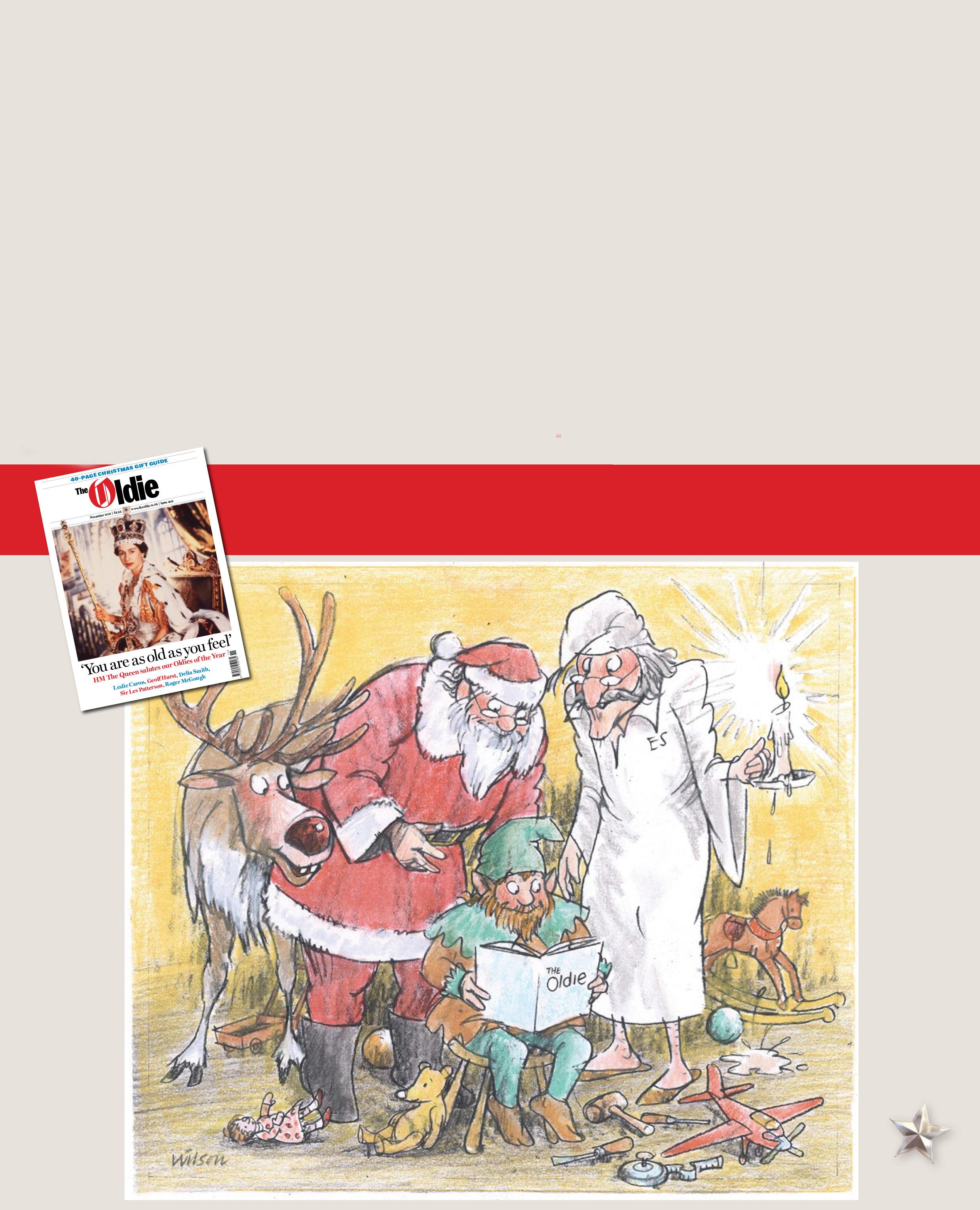






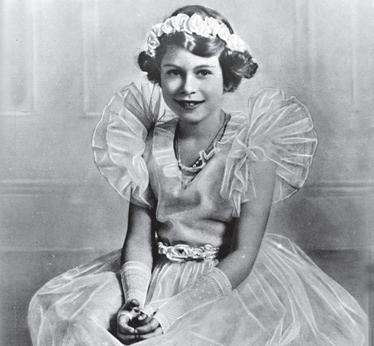
 By Nick Brown
By Nick Brown
he moment this brilliant young producer started telling me about Doctor Who, I was hooked. I told her, “This is going to run for five years” – and look what happened!’
So said the first Doctor Who, William Hartnell, about Verity Lambert.
22nd November 2022 marked the 15th anniversary of her sad death in 2007, five days before her 72nd birthday.
Let’s nip back in time to 1963 (your TARDIS or mine?) and consider just what an impact a hitherto-unknown young woman made on television.
Sydney Newman had just been recruited as a producer by the BBC from ABC Weekend Television, which provided service in the Midlands and Northern regions for the ITV network. He commissioned a new Saturdayevening science-fiction programme to be broadcast in weekly episodes.
The idea was to bridge the gap between Grandstand and Juke Box Jury: keep the dads who had been watching the sport and draw the younger generation who were waiting for their popular-music show.
Newman dreamt up a time machine that was bigger on the inside than on the outside. He also suggested keeping an air of mystery about the eponymous hero. Who was he? Where did he come from? How could he travel in time and space? Enter Verity Lambert to complete the vision.
Born on 27th November 1935 in London, she was educated at Roedean School before studying at the Sorbonne.
Her first job in TV was as a secretary at Granada Television, moving on to ABC, where she crossed paths with Sydney Newman. After a stint in New York at the production company Talent Associates, Lambert returned to England and, in December 1962, was recruited by Newman at the BBC to produce this new
science-fiction programme.
The BBC was then a very male-dominated institution, with women largely being typists and tea ladies.
Lambert became a trailblazer for women who dared to dream of having better TV jobs.
Not only did she become the organisation’s only female drama producer, but she was also the youngest of all the drama producers.
The BBC weren’t massively interested in the new show, giving it a small budget. Lambert had to argue the case to get it shown.
When she got her way and Doctor Who was first broadcast, on 23rd November 1963, it was an instant hit. Next year, the show will celebrate its 60th anniversary.
The first story, An Unearthly Child, introduced the characters and laid the foundation for the world’s longestrunning science-fiction programme, far outliving the five years William Hartnell predicted for the show.
The second instalment was The Daleks. This shot Doctor Who into the headlines. Overnight, schoolchildren across the country held out their arms and declared, ‘Exterminate!’
This was Lambert’s triumph. Sydney Newman had insisted no ‘bug-eyed monsters’ be used. Lambert insisted the Daleks were commissioned, arguing that they would prove popular.
She produced Doctor Who for two years, overseeing 86 episodes. She went on to produce Adam Adamant Lives!, following the adventures of a Victorian gentleman frozen in ice by his evil nemesis, and a series of adaptations of Somerset Maugham stories.
Lambert joined London Weekend Television in 1969, producing Budgie,
starring pop star Adam Faith.
Five years later, in 1974, she became head of drama at Thames Television, overseeing such hits as The Naked Civil Servant, Rumpole of the Bailey and Edward and Mrs Simpson
A move to Euston Films in 1979 as chief executive led to her productions of Quatermass and Minder.
She established her own production company, Cinema Verity, in 1985. It produced the sitcom May to December, the hard-hitting drama series GBH and the feature film A Cry In the Dark, starring Meryl Streep. Independently of Cinema Verity, she produced Alan Davies’s comedy drama Jonathan Creek for the BBC.
Lambert’s achievements were recognised. She was awarded an honorary degree by the University of Strathclyde, a BAFTA for Outstanding Creative Contribution to Television and, posthumously, a lifetime achievement award from Women in Film and Television. In 2002, she was made an OBE for services to film and television. A blue plaque with Verity’s name on was unveiled at the Riverside Studios in Hammersmith.
There have been onscreen nods to her, with the revived series of Doctor Who including a character, Verity Newman, named after Verity and Sydney. The Doctor, in his guise as the human John Smith, names them as his parents. She was given a subtle mention in a Monty Python’s Flying Circus sketch, where Eric Idle and Graham Chapman play salesmen called Mr Verity and Mr Lambert.
Without her, would there be the opportunities for women in television and the media in general that there are now? Yes, probably. But someone had to be the groundbreaker. Someone had to smash through the old-boys’-club barriers.
That someone was Verity Lambert.


The problem with old people is they often seem to be equipped with everything they need already. What do you buy the generation that has everything?
What kind of present brings YOU the most pleasure when you open it?
Something you would actually use, no doubt; something appealing, something you wouldn’t have thought to buy for yourself, or even thought of at all. Not ties, chocolates or soap.
With a bit of imagination it’s possible to buy Christmas presents that won’t be greeted with a weary sigh, a weak smile and a pained ‘Thank you, darling’.
No one thinks they’re old until they have one foot in the grave. But, well before that, there are many properly helpful gadgets and comforting luxuries we would all love.
Start with the obvious: items for comfort. With the fuel prices as high as they are, manufacturers have come up with a number of non-food products.
When popped in the microwave for a few minutes, they retain joyous heat for up to three hours, at almost no cost: soft, fluffy slippers or slipper boots; neck wraps; heat pads to strap around your midriff, or ones that just rest on your lap. All of these exist in many forms – the world’s your oyster.
Of course, some people don’t have a microwave. We were, after all, brought up in the dark ages when microwaves were considered frightening and bound to zap us with their evil rays.
But we all have plug sockets, and we’re very keen to thwart the smart meter’s revealing how very expensive our beloved blow heaters are. So you could buy a mini electric blanket or a fleecy electric throw – even one big enough for two of you on a sofa.
Obviously, there’s less moving around if you are fixed near a socket, but most of us spend hours in the same place anyway, watching TV or looking at
Other forms of comfort: cushions, of course. Not the scatter cushions beloved of M&S or every gift shop, but ones specially designed to ease aching backs, or to boost the height of your oldie’s favourite armchair, so they can get out of it with much less effort.
And remember those V-shaped maternity cushions? They are gloriously comfortable for anyone and everyone, and now come covered in fabrics far removed from the kind you find on a hospital ward.
Then there are posture cushions of all sizes and for all purposes – an aching neck or a sore back. Some are heated; some have removable pads to adjust for you perfectly.
Think about something your oldie might already use every day but could do with a luxury version of: a pill organiser bound in leather rather than garish blue plastic; a lap tray to eat a TV supper on in comfort (without twisting sideways), in a fabric they might actually like.
And remember what’s likely to be
ropy by late mid-life, or even mid-midlife – eyesight, for example. Mine’s pretty dim already (and I’m only middle-aged). Daylight reading lights – particularly portable charging ones –can be a life-saver. As is the very cool, beautifully designed magnifying light that I use for anything fiddly, such as mending a plug or threading a needle.
I know all this only because it’s become my business – literally.
My lifelong friend Sophie Dowling was finding it increasingly frustrating as her elderly father’s house started to look more like a care home. ‘Not again,’ she thought, looking with dismay at her dad’s make-do fixes and white plastic grab rails.
Why isn’t there a place to buy the things you might want, or find you need, as soon as your youthful, I-cando-anything period has ended?
Why has no one even road-tested the products already out there – cheap or expensive, worthless or brilliant – and gathered the best of them in one place?
Sophie rang me, and we set up shop pretty speedily, during lockdown. Our late mothers had been great friends, and both were ill for long enough to come to hate the few products available that they needed and that actually worked.
And so Granny Gets a Grip was born, selling only those things we like, for oldies and anyone else who needs a bit of help – inclusive design for all ages. The best of these things are now an everyday part of our own lives. And we’re only nudging 60.
So think a bit about what to buy people who don’t really want more stuff, but may well need some things they don’t even know exist. You might end up enjoying shopping this Christmas.
Miranda Thomas co-founded Granny Gets a Grip, an online shop for people who need a level of physical support in and around the house

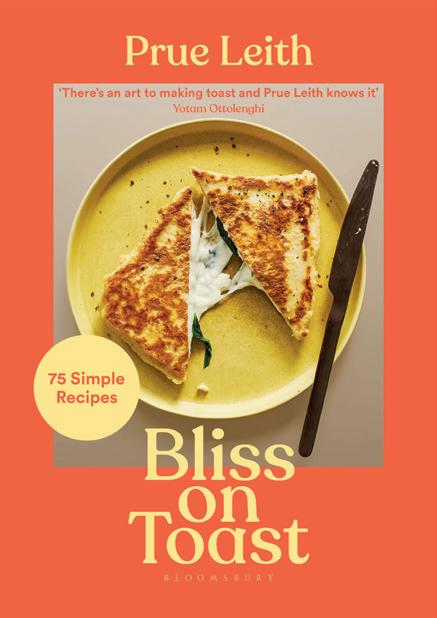

In 1983, younger, much poorer and between jobs, I was staying with a friend in Brixton to go to a second friend’s photographic exhibition.
I went and it was enjoyable. I met a lovely American lady who offered me a lift ‘home’.
At the end of the street, I assured her it would be fine to drop me off. I could see my friend’s house and it would have been hard for her to turn. We waved and I began walking the few yards to my friend’s door.
Suddenly a young man was right up beside me and a knife was pressing into my liver.
‘Your bag.’
I unslung it from my shoulder and handed it over. As he rifled through it, he withdrew the knife slightly and I turned to face him. I was frightened, but there was also a mixture of indignation and resentment. He was about my age and his voice told me he even came from my own area, the north-west of England. This wasn’t right!
‘It isn’t very nice,’ I heard myself saying, ‘to do this to someone who doesn’t have any more money than you. You don’t have a job but I don’t have one either.’
He looked up briefly, my purse in his hand, and thrust the handbag back to me. ‘I know it isn’t very nice, but I’m doing it,’ he said. ‘You can keep the bag.’
I mumbled a bit.
‘What?’ he said, still checking for valuables in the handbag.
‘At least you could let me have my railway ticket back home. I had to borrow the money to get it from my grandma and it’s no use to you.’
There was a snort of derision and he began to move off – and then looked back.

‘It’s in the purse,’ I offered hopefully. A big sigh. He stopped again, found the ticket and handed it over.
‘Thank you,’ I said. He turned again. ‘I hope you don’t do this to anyone else tonight,’ I added.
He stopped. Opened the purse. Took out a £5 note (£5 bought a lot more in those days) and handed it to me.
‘Now you can get to the railway station,’ he said. ‘Back to your grandma. Oh, I can’t stand here all night chatting to you.’ And ran off on silent, trainerclad feet.
I’ve often wondered what happened to him.




If I were still at school, my worst nightmare would be to have to take maths in the sixth form.
Sixty years after leaving, I still shudder at the very thought. I had no ability at the subject and wasn’t even allowed to take it at O level.
So to compel somebody like me to undergo two more years of hated maths lessons would have meant absolute torture; not just for me but for the poor teacher as well.
Yet if Rishi Sunak has his way, he will make maths compulsory in all schools up to the age of 18. His reasoning is that in Germany, Asia and France, youngsters have to study maths to that age.
He has even stated that, by allowing pupils to drop maths at 16, we are being held back as a country.
What’s so special about maths? As an adult, I have not once needed to apply Pythagoras’s theorem to anything or to solve a quadratic equation. At primary school, I learned all the arithmetic I needed to get me through life.

I could cope reasonably well with adding, subtracting, multiplying and dividing, but when it came to square roots, logarithms, algebra and geometry at secondary school, I was lost.
And have remained lost ever since. The only way I ever got any marks was thanks to a mathematically gifted friend letting me copy her homework. But my ineptitude was revealed when it came to end-ofyear exams: I often scored a big fat zero.
My lack of facility at maths beyond the most basic level hasn’t handicapped me in any way.
I would have needed to master the higher reaches if I was going to be an engineer or an accountant.
But there was no way that those careers were ever going to beckon. I needed to choose a vocation where such expertise was not required, and there were plenty of non-mathematical options. I became a journalist.
We all need to have some competency at maths, or at least arithmetic, to make sure we aren’t being diddled, overcharged or confused by percentages when applying for mortgages.
But even I can tell the difference between one per cent and five per cent, and I certainly know what ten-per-cent inflation means. For anything else, such as working out my tax return –which is beyond me emotionally, if not academically – I employ the services of a chartered accountant; somebody who actually enjoys grappling with numbers.
Why should we compel our kids to study maths beyond GCSE just because some other countries do?
It is this kind of sloppy thinking that has persuaded some schools to introduce Mandarin onto the syllabus, simply because it is the language of a fastgrowing economy. Most of us are not going to need to speak or write it.
So why not stick to European modern languages and Latin, which help us to understand our own language better? Offering Mandarin is just a fad.
There is very little correlation between being good at maths at school and being financially successful or astute in adult life.
I have known many gifted mathematicians who have been useless when it comes to investing capital or spending large sums on buying a house.
There is such a big gap between theory and practice. I have several friends who are brilliant at working
out figures on paper but whose investments have always managed to lose them money.
I’ve almost always managed to get figures wrong but have been quite a successful investor. I was once called an idiot savant when it comes to figures and there is something in that. I let intuition and an instinct for self-preservation guide me where actual knowledge is lacking, and have never been in debt or overdrawn at the bank.
What sort of maths would Rishi Sunak force on unwilling sixth-formers? Would it be abstruse stuff like differential calculus, or more practical applications such as how to read a profit-and-loss sheet? I doubt he has much idea, either.
By all means, let those who love maths continue, but please don’t force us maths dunces into two more years of pointless misery after the age of 16, just because some other countries do.
I was once called an idiot savant when it comes to figures
Despite his dodgy driving record, Roderick Gilchrist loved learning to catch speeding motorists
Like most motorists, I have often wondered unflatteringly about the man behind the speed gun. Do they get a buzz out of it? Or is it just a quota thing – fulfilling performance targets? Now I know, after enrolling as a community Roadwatch volunteer – to give it the official name.
It happened after I’d helped two community officers to free an urban fox trapped in the garden of a London square.
After congratulating me, they said I was just the kind of responsible citizen they were looking for to join their Roadwatch team.
The idea is to release officers for other duties by recruiting London residents to cut down speeding in their neighbourhoods. There were 1,608 deaths in Britain in 2021 – and speed figured in 20 per cent of them.
Two and a half million speeding tickets were handed out last year, raking in one and a half billion pounds.
I was nagged by a feeling of betrayal to my fellow motorists. But I persuaded myself it was my civic duty. In my seventh decade, it was cheering to know I wasn’t too old to help. Roadwatch welcomes pensioners because they have the time and are more likely to be diligent about road etiquette.
That’s why I was standing in Warwick Gardens, South Kensington, with a £4,000 Truvelo speed gun in my hand. Two Police Community Support Officers (PCSOs) – Michelle Taylor and Richard Wheeler – from Hammersmith Police Station knew this was a good place to catch offenders.

‘If motorists see a green light and there’s a clear stretch of road ahead, they often race across at dangerous speeds,’ Michelle told me sternly.
She gave me a sunflower-yellow tabard. And then she issued instructions on how to use the gun and the optimum distance – 80 yards –from which to fire it.
The gun has two screens: one to capture the image of a vehicle; the other to record its speed.
PCSO Michelle, a jolly lady from Barking, said, ‘See the green dot on the higher screen? Get the car in the frame and the green dot in the centre of the frame before pulling the trigger.’
This took a bit of juggling.
PCSO Richard advised, ‘Don’t jerk the trigger. Squeeze it gently.’
I tried this for an hour without recording anyone breaking the limit. It’s because I’m wearing the bloody tabard, I convinced myself – as good as a sign saying ‘Slow Down: Speed Trap Ahead’.
Finally a lorry flashed past, well over the limit. Seeing me, the driver hit the brakes, leapt from the cab and sobbed, ‘For God’s sake, don’t book me. I’ve already got nine points on my licence and if I get any more, I’ll lose my job.’
PCSO Richard let him off with a warning. Grateful forelock-tugging followed. Be fair. The authorities are not without compassion – or humour.
They hear some funny stories when motorists pull over. One woman, asked why she was doing 30mph in a 20mph area, said, ‘Well, the speed sign came up too fast for me to slow down.’
A doctor once held up his stethoscope to explain he was on his way to an emergency. The third time this happened, the speed cop waved a pair of handcuffs at him.
‘Everyone is very well behaved today,’ I said to PCSO Michelle.
She showed me her mobile phone and pointed to an app called Waze, saying, ‘This pinpoints exactly where a speed gun is operating. So anybody
who has tuned in can see exactly where we are.’
I’m still not convinced I’m the kind of ‘responsible citizen’ they’re looking for. I have been breathalysed twice and both times narrowly escaped with a warning.
‘You see this yellow light in between red and green,’ the motorway cops said cheerily after I’d blown in the bag on one occasion. ‘It means you are just this side of legal, sir. If it’s red, you’re nicked. You’re lucky.’
I have also been prosecuted for driving without due care and attention after crashing into a police van carrying six uniformed constables. They promptly poured out of the back doors and arrested me.
Even the magistrate had to laugh. ‘He hit a what?’ he asked merrily.
Meanwhile, I’m still waiting to hear if I passed the audition. Will I be let loose with my shooter on the streets of Wild West London? Boy racers, beware!
The driver leapt out and sobbed, ‘For God’s sake, don’t book me – I’ll lose my job’
With her customary modesty, Dame Edna Everage actually wants her statue to be toppled

Hello, possums!
My old New Zealand bridesmaid Madge Allsop is transitioning.
She has never been a stranger to hormonal imbalance, bless her. As far as I am concerned, she has been transitioning for as long as I have known her. Now, the artful minx has gone public. It is so typical of her to wait until it became fashionable.
Don’t get me wrong, possums. I yield to none in my abhorrence of transphobia. I am excessively transfriendly, and some of my best friends have been someone else at one stage of the game.
But Madge has always been an attention-seeker. Wait for this! A few years ago, she pretended to be dead! Yes, she vanished, in fact. She had sneaked back to Palmerston North, her home town in New Zealand – so to all intents and purposes she really had passed away.
I heard from a Very Important Person I know (who recently transitioned from Prince to King). He said Madge had tweeted that she had pretended to die in order to escape from me.
What twaddle! If it hadn’t been for me, that woman would have expired years ago. I took her under my wing because I cared. Beware of pity, readers.
But compassion is my middle name, or why else would I have founded my wonderful charity SLOB (the Society for Liberating Old Bridesmaids)?
I am too fond of my Oldie-readers to mince words, and what I am about to say may hurt the feelings of a few sensitive souls – but statistics are statistics.
The unpalatable truth is that your chances of being remembered by posterity are practically nil.
Group photos in old magazines might include you once in a blue moon –but though everyone else in the snap will be captioned, you will just be called ‘unknown’.
Also, you must face up to the fact that a state funeral and a statue in your honour are well-nigh impossibilities.
I am here to tell you, possums, that a statue is a mixed blessing. There is one of me in Melbourne that makes my flesh crawl. It is nothing like me, and it is indestructible. I don’t know why everyone loves it so much. It’s been universally admired by those in the know.
They plonked it in Docklands, among high-rise housing for Chinese students and spies – so not many Australians see it. But it makes me look like a grumpy, jowly ratbag and not the kind, glamorous influencer the world knows and loves.
I have protested, but to no avail. Still, I have suddenly had a brilliant idea. I have asked the Who Do You Think You Are? people to dig up some ancestor affiliated with the slave trade or who might have helped colonise Australia in the olden days.
When this gets around on Twitter and TikTok, students will take a well-earned break from their studies and tear down the unflattering monstrosity and hurl it into the bay.
I have told Madge that if she comes back for Christmas, she has to earn her keep.
She insists she has applied, unsuccessfully, for the job of Santa Claus at Selfridges. She has certainly got the facial hair, but her ‘Ho ho ho’s were unconvincing.
Madge, bless her heart, has no wrinkles but she certainly has corrugations. In fact, her face looks as though she sleeps face down on a chenille bedspread.
She also wants to be an Uber-driver, using a top-of-the-range driverless Tesla from my fleet, but no one would want to risk being in a car with her unless she had both hands on the wheel.
She has also informed me that she wants to do something called ‘stand-up’, but Madge can barely stand anyway, bless her; let alone say the f-word repeatedly to an audience of angry women in black jumpsuits with curtain rings in their eyebrows.
When Madge came crawling back to me from New Zealand, having been officially declared dead, I had moved on.
Did I really want to share my life with such a needy and attention-seeking waif? She has pretended to be dead, and I suppose death is the best way to draw attention to yourself. Besides, she had unsavoury proclivities. Emergencies of accommodation and climate change sometimes obliged me to share a bed with my troubled bridesmaid, whose idea of a nice cuddle would be unacceptable to most of my female readers – though not all, unfortunately.
Madge has given cuddling a bad name, bless her.
I want to spend my traditional Christmas alone, so I can relax quietly and think of nobody but myself.
There has to be a time for us all when we take a break from sharing, caring and pretending to listen to interminable monologues from intoxicated friends and rellies.
If it is serenity you crave, stay as far away from your loved ones as possible this Christmas, possums!

Which of these two lines, if you came across them on a church noticeboard, would entice you more?
6.30: Evensong or
6.30: Evensong with sermon.
For me, there’s no contest. I’d be tempted by the first, and repelled by the second.
I’ve sat through thousands of sermons, and the best moment, in my experience, is always the moment when they end.
‘Please can this be your final sentence?’ I plead inwardly, but it hardly ever is.
There’s a moment’s silence, but it turns out just to be the end of a paragraph. Another sheet of A4 to go. When, at last, the preacher says, ‘Amen,’ I feel an ecstatic sense of relief.
Our late Queen was far too tactful to say such a thing, but I have a feeling that, deep down, she felt the same. She did mention that she didn’t like a sermon to go on for any longer than 12 minutes.
At the 8am Eucharist at St George’s, Notting Hill, on the Sunday after her death, the Rev Peter Wolton dialled that length down even further, saying the Queen liked sermons to be five minutes maximum. Yes, please!
The Archbishop of Canterbury empathetically preached a five-minuter at her funeral, and the whole world was grateful.
Please can shorter sermons be one of the Queen’s legacies? Prince Philip, too, according to the former Bishop of London Richard Chartres, ‘was at home with broad church, high church and low church, but what he really liked was short church’.
It was not that he disliked sermons; on the contrary, he found them fascinating and provocative, and took notes.
But he was impatient. I think many
of us are. We have lives to get on with, and we do not need to listen to a preacher repeating himself, very slowly, at intervals throughout a ponderous 15-minuter.
The sermon is an innately padded form, and society has outgrown it. We’re literate.
We no longer need to have the key words from today’s New Testament lesson repeated to us again and again, ‘unpacked’ in a long-winded way by someone relishing his or her moment in the sun, or flaunting etymological factoids picked up at evening classes at St Mellitus College.
Nor do we need to be reminded that the preacher is an ordinary human being just like the rest of us, who naughtily admits to enjoying the occasional glass of sherry.
There’s a gulf between how much the preacher thinks we want to listen to him or her droning on, and how much we actually do want to.
Just after the sermon in the Eucharist service, the congregation is supposed to stand up to say the Creed.
But it’s at that very moment that my faith has drained away, dulled to oblivion by the tedium of the last 15 minutes. I’m often sleepy by this time, and can hardly stand up, so weirdly soporific are the endless abstract nouns and the slow oratory.
Sermons tend to be an ordeal, like when you’re stuck at a red traffic light or, worse, a traffic light on an A road in Surrey with a three-mile tailback leading up to it. Things grind to a dispiriting halt while the satnav adjusts the estimated time of arrival.
If sermons boldly adopted the convention of ‘five minutes maximum’, it could single-handedly save the Church of England. We might actually be able to drag a child or a teenager along.
Whenever I try to tempt a nonchurchgoer to come to a choral service
with me, I feel bound to warn them that there’s going to be a sermon. And they baulk. Why can’t it just be a homily – a crisp three or four minutes, as the Roman Catholics have?
Any sermon could be reduced to that length with a bit of disciplined trimming. Even Thought for the Day on Radio 4 can seem long-winded at three minutes – and that’s just a quarter of the length of most sermons.
Fifteen minutes is brief compared with the length of evangelical sermons. Thirty minutes is typical at St Helen’s, Bishopsgate, or an hour at the Grace Community Church in Sun Valley, California.
Sermons in village churches have (thankfully) halved in length since 1922, when P G Wodehouse wrote The Great Sermon Handicap. In that masterpiece, the Rev Francis Heppenstall ‘fairly took the bit between his teeth, and gave us 36 solid minutes on Certain Popular Superstitions’.
The shortening trend needs to continue. If we were reliably in and out in under an hour for Eucharist, and 40 minutes for Evensong, we’d be flocking to church.
And no one needs a sermon at Midnight Mass this Christmas. Please, dear clergy, consider your audience of tired grown-ups and over-excited children, up long past their bedtime.


Sometimes I feel a bit sorry for my country cousins.
They may have fresher air than us city dwellers, but their choice of foodstuffs is extremely limited. They have their farm shops with their lonely chutneys and dirty carrots. There is the occasional box of six eggs sitting on a stone wall next to an honesty tin. There are overpriced sausage vendors such as Daylesford Organic, and the bland, refrigerated offerings of a Tesco superstore. All accessible only by motor car.
But here in London town, we enjoy an infinite variety of exotic foodstuffs right on the doorstep. Just a few yards from my front door in west London, we have Sham Land, a supermarket brimming with specialities from beyond the Syrian sea.
The sausages are not so good, I’ll admit, and of course there’s no bacon. But there are a hundred exotic spices and grains such as mahlab and moghrabieh, halloumi cheese, the perfect hummus, myriad varieties of dates, harissa paste, spicy coffees, vast legs of lamb, every kind of bean you can think of, figs, endless nuts, pitta breads, pieces of turmeric root and sweet pomegranates.
They also sell Ethiopian spices and
injera, a sort of squishy flatbread used in Ethiopian cooking. For lunch, there’s fresh falafel and spicy samosas. And I love their marketing slogans with their innocent and charming grammatical errors:
‘The meat introduced by Sham Land is know as it is the best quality in the markets. Our purpose is to maintain introducing and stay at out customer expectation.’
‘Top quality and fresh fruits picked special for you.’
Opposite Sham Land is Damas Gate, a similar emporium, and just down the road is Ayam Zaman. In between, there are half a dozen halal butchers. We also have the wittily named Nut Case, a shop specialising in, yes, nuts.
Then there’s the Polish supermarket with the unpronounceable name: Mleczko Delikatesy. Jars and jars of strange pickles are on display, alongside goat’s milk, Polish cosmetics and sausages (no ban on pork here).
Fifteen types of bread are made in their bakery, and these loaves are really cheap – £1 each. Plus they’re properly baked; no Chorleywood bread process. Mr Mleczko opened his first shop in 1996. There are
now 11 branches in London, catering for the city’s 150,000 Poles.

The shop’s website declares, ‘The aim of Delikatesy Mleczko is to provide consumers with the best possible products, but friendly to the pockets of the average Pole living on immigration.’
It’s true; Mleczko is very friendly to the pocket indeed, whether you’re the average Pole or the average town mouse: a lovely ham-and-cheese roll costs just £1.20 and makes a good lunch.
The Sikhs run the off-licences, which offer an amazingly wide range of beers. In the market, you’ll find Caribbean vegetables such as yams and sweet potatoes, as well as crates of mangos and exotic fresh fish.
And you don’t have to travel far to find more exotic grocers. Gerrard Street in the West End is home to the Loon Fung and New Loon Moon Chinese supermarkets.
Wandering down Tottenham Court Road the other day on my way to see a recently released Japanese pirate cartoon film, One Piece, I was struck by a new arrival: Korean supermarkets. There was Seoul Plaza, brimming with kimchi, every kind of noodle, pickled radish slices, tuna rice porridge, tofu, mung-bean pancake mix and shrimp-flavour crisps.
In Hammersmith, we have Thai Smile, which I like particularly for its chocolate straws.
Just down the road in Southall, there’s a different vibe: Indian and Asian supermarkets (alongside endless bridal shops). It’s a vast warehouse of poppadums, chapatis and cardamom.
It isn’t a new story. Every generation brings migrants and of course they bring with them their cuisine, enormously enriching our cities.
In the era of Sherlock Holmes, in the late-19th century, it was the Italians who were moving here. In Clerkenwell today, you can still find wonderful Italian delis. Jews in Whitechapel introduced salt beef and other delicious dishes.
The Asians don’t do cheese well. So if you’re longing for cheese in the Portobello Road market, there’s the most brilliant French-cheese stall, with delightful squashy varieties. And Portobello Road has a Spanish supermarket, too, which I love for its chorizo and its beautifully decorated tins of sardines and paprika.
All the world is here. Like Diogenes of Sinope (c 412-323 BC), this mouse feels like a true cosmopolitan. When Diogenes was asked where he came from, he said, ‘I am a citizen of the world [in ancient Greek a kosmopolites, giving us our word “cosmopolitan”].’
And when I crave a pork pie, a bit of yarg or proper English butter, there’s always Waitrose.
By courtesy of this exceptionally mild late winter, red admirals are floating by the cottage window.
Mexican orange blossoms are flowering for the second time. And soon we will have scarlet nasturtium flowers to decorate the festive salad bowl.
Winter sun streams through windows – but womenfolk turn up the heating anyway and, inexorably, their menfolk move forward to turn it down.
And yet I have also turned down an invitation to a tropical paradise issued by my best man, Bongo, who is Africa-based.
I can’t admit to Bongo that a growing sense of caution has trumped my sense of adventure. But do I really want to spend a winter break on a dhow, sailing up the coast from Mombasa to Lamu and beyond? Motion sickness, the smell of diesel and the smell of daily catches of raw fish on board?
I also ponder the likely confinement below deck, grappling with Delhi belly delivered by dodgy ice cubes, the presence of camel spiders, the bites of the black mamba and the glimpses of pirate ships on the horizon.
When I listed my reservations, my old mate vigorously defended our former colony. ‘Why should there be pirates?’ asked Bongo.
‘Well, we do read about them near Lamu in the Daily Mail.’
‘Do you go the doctor, Giles?’ ‘Yes.’
‘Well, I wasn’t going to go to a doctor in England because I read about Dr Harold Shipman in the Daily Mail.’ Winter sun solutions – are they?
When eventually I succumbed to Bongo’s exhortations, it was to discover that mangrove and casuarina trees gave the resort the sinister look of a swamp in Florida.
The palm tree is not indigenous to the
region. So the only ones here were the imported sort, quite recently installed in the muddy sand around the hotel.
They kept falling over, exposing their root-balls. Guy ropes were subsequently attached because, after five days of sun, a ‘once-in-a-lifetime’ cyclone descended and howling winds strewed seaweed all over the narrow strip of sand they called a beach. Sandflies inevitably followed.
Our little house resembled the prison officers’ mess from the set of Tenko. It came with a cleaner who had an uncanny knack of entering the kitchen each morning just as Mary and I were sitting down to snap at each other over our first cup of coffee.
‘Good morn-ing! How are we this morn-ing?’ he would ask in a Dalek voice.
He strongly recommended the restaurant where we both ate something prawn-based, which confined us to barracks for three days.
At least this gave me time to swot up on locations to explore from a book I had bought at the airport: Wild Places of the Southern Bahamas. Sadly I could only dream of venturing inland to explore tropical dry forests, sinkholes, blue holes and natural limestone caves surrounded by mangroves where osprey nested.
Iguanas? Boobies? Yes – but it turned out the locations for all these were on other islands. Clearly that was
why we never again saw the pop stars we’d hoped to befriend, as they’d headed off to their private retreats accessible only by hovercraft.
My having lost a stone, we paid out a substantial number of pounds (140) to hire a taxi-driver so we could explore our own overcrowded island.
Yes, there were some nice butterflies in the location I directed him to after careful study of the map. Mary hissed at me, ‘Why have you taken us to a landfill site?’

The only other biodiversity remaining on this overdeveloped tiny island was an abandoned go-karting track covered in broken glass. Still, enough scrub had grown to attract at least one pair of gnat-catchers – which was doing its best to raise a family.
Our resort was at least aspirational. Our Dalek cleaner told us that, ‘at no ex-tera cost’, he would secure for us two luxury sun-loungers on the strip of sand.
These took the form of adult perambulators shaded by parasols whose spokes turned inside out at the slightest breeze. Not once did we see another hotel guest using these facilities.
Still, the parasols gave a few moments of pleasure. They allowed us to observe the passeggiata of fellow tourists of all shapes and sizes. Most wore back-tofront baseball caps, waddling aimlessly backwards and forwards like zombies on Oxford Street.
Meanwhile the constant surveillance of a guard in a lookout tower made me think of Guantanamo Bay.
‘But at least you must have slept well,’ said our old friend Jo on our return. Jo always likes to look on the bright side.
‘Sadly,’ I explained, ‘next to our villa there was a giant chessboard with resin pieces, each one the size of a man. Every night, at three in the morning, a gang of American teens, en route back to their own huts and high on Coca-Cola, after a heavy session on the hotel’s Sega machines, would kick them over.’
The next morning, I would look out to find them upright again, standing to attention and good as new – unlike me.

‘We lost your luggage’

My elder brother Carlos was a pal of Paddy (real name Robert) Blair Mayne (1915-55) – one of the prominent SAS men in the BBC TV series Rogue Heroes. Back in the 1950s, they went carousing together around the many Dublin pubs.
PBM was from a strict Presbyterian background, for which reason he would travel south at weekends to escape the austere Ulster Sabbath.
He was a boozer, a killer warrior (he told my brother he had dispatched Germans in the desert with his bare hands) and a tormented homosexual, at a time when such relationships were criminal. But Dublin tended to be more easy-going, and had a gay subculture, centred in the Catacombs, and a famous gay pub, Bartley Dunne’s.
After a rambunctious evening, the SAS commando, sitting in his sports car, made to kiss my late brother (who preferred girls). Carlos slugged him in the face, which reduced this rogue hero to mortifying apologies. ‘Christ almighty! I decked Paddy Blair Mayne!’ recalled my sibling, in hungover horror the morning after. PBM could have garrotted him with a flick of his wrist. But the Ulsterman took the rebuff ‘like a gentleman’.
Carlos always affectionately remembered PBM, whose sexual orientation was never accepted by his family, especially his ‘formidable’ mother. He died in a car crash in 1955 in his native Newtonards, aged only 40, after a night’s heavy drinking at a Masonic dinner – a warrior who never settled into peacetime.
‘There’s one obvious way to halt illegal migration across the Channel,’ said Chris White, as we sipped coffee at The Sicilian in Deal. ‘Introduce identity cards. Simple.’
Chris is a Brussels reporting veteran – covering the EU for many years – and sees the absence of ID in Britain as one of the main reasons nearly 50,000 migrants landed on Kent’s shores, near my home in Deal, in 2022.
I’ve always been against ID cards – ever since a Parisian flic pulled me up, at age 19, with the contemptuous demand ‘Tes papiers!’ I was walking innocently along the Boulevard Montparnasse; how dare an agent of the state demand my ‘papers’ – and address me in the familiar tu form! I had done nothing wrong. From that moment, I preferred the British tradition that every citizen is entitled to travel the King’s highway without let or hindrance.
But a moment comes when we must realise circumstances have changed. I dislike the idea of the state – any state –having access to my private data; but the powers that be know everything about us anyway. All our data can be found in some algorithm somewhere.

There was a time, in living memory, when ladies could conceal their age. My mother contrived to knock a few years off her date of birth on a passport, which is probably now a felony. We seldom knew what age our elders were and, if we asked, were told, ‘I’m as old as my tongue and older than my teeth.’ Now date of birth is public knowledge: when I arrive at a local clinic for an eye treatment, it’s announced to one and all – 4.4.44.
If they know your date of birth and your postcode, I’ve been told, they know everything about you.
All the old suppositions have altered. The police may well check you out on
suspicion (they may even arrest you for, effectively, a thought crime). Privacy is an archaic concept, and confidential information is now called ‘covering up’.
John Maynard Keynes advised that when the facts change, it’s rational to change your mind. If ID cards help to halt the cruel trafficking across the Channel, then yes, introduce them.
It came as a surprise that so many –some 40 per cent – of Channel migrants hailed from Albania, and were frequently described as ‘criminals’.
When I visited Albania under strict Communist rule, I was informed there was no crime at all. It was like visiting the 19th century, with Hardyesque peasants reaping in the fields with scythes.
Our official guides spoke excellent English, much of it learned from reading P G Wodehouse. Every Albanian I encountered expressed admiration for Edith Durham, the celebrated Victorian Englishwoman who explored Albania with just a native guide and a donkey, and wrote a renowned book comparing the Albanian clans to the Scots.
I’m afraid I thought it all rather charming, leading my late husband to call me ‘the Beatrice Webb of the Balkans’, for insufficiently grasping the tyranny, repression, brutality and general odiousness of Enver Hoxha’s rule.
Still, I thought the people nice and the Adriatic scenery very pretty indeed.
This was the year we should have been reading Marcel Proust’s À la recherche du temps perdu. The first volume of the English translation by C K Scott Moncrieff was published (like Joyce’s Ulysses) a century ago, in 1922 – also the year Proust died, aged 51. Groundbreaking stuff. The images are cinematic.
It has also been published in accessible cartoon form, adapted and drawn by Stéphane Heuet. Great classics should always have a bande dessinée version.
Jem Clarke is in his very, very early fifties, is five foot zero inches tall and has never left the family home in Cleethorpes, which he shares with his parents…
A warrior’s Valhalla is an endless banqueting table with flowing ale, chicken drumsticks and the backing dancers from a mid-’70s Top of the Pops.
For commuters like me, the afterlife will be more like my wet Wednesday morning. I was sitting in a railwaystation coffee franchise, neither entirely inside nor outside. A pigeon stared at me from the next table as I sipped a bottomless cup of just-about-warm coffee delivered by Ross.
Ross became assistant manager of the place within months of starting his first job, when ‘no one came back after Omicron’. He breezily leant over me, took a straw and blew air at the pigeon, which took flight. I last saw it cannonballing into W H Smith’s stationery section.
At the next table, there was a suited lady toying with her overpriced jam on toast. She combined all my anxiety trigger points in one person: female, tiny and business-minded. If any psychiatrist unpeeled my psychological onion, she would find Mother wrapped up inside.
This woman kept glancing in my direction. At first, I thought it was my admittedly vivid imagination, but no –glances two, three and four followed. I licked my eyebrows down and chanced a direct smile. With a look of alarm, she directed her gaze slightly above my head. I was sitting on a table directly below the Live Train Timetable Display Screen.
She was looking not for the 4ft 11 from Cleethorpes, but for the 9.10 from Adwick.
As she proceeded to do important things on her laptop, I took out my mobile phone – eager to impress her – and pretended to be doing something worthy and weighty.
In fact, I was trying to find my local radio station on BBC Sounds. This makes my brow furrow in a way the casual observer would mistake for executive stress.
Suddenly, the returning pigeon landed directly on her keypad. She shrieked. Seizing the chance to be her knight in shining armour, I shoved a straw in my mouth and launched myself towards the pigeon.
As I moved forward, my large (well, large on me) rucksack fell off my shoulders, trapping my arms behind my back. Straw in mouth, I rounded on my prey. I inadvertently breathed in rather than out. The pigeon didn’t move an inch.
Retreating from the pigeon, the businesswoman rushed off in pursuit of Ross, who was mopping in the corner.

This time, I remembered to breathe out and the pigeon pushed off. At the same moment, my keys flopped from my jacket pocket onto her jammy toast. With my arms locked, Houdini-style, by the damned rucksack, I took the only course available. I planted my face in her strawberry preserve and pulled myself upright, keys triumphantly clamped between my teeth.
The lady pushed off in a huff about
the pigeon, barking warnings at Ross about whom she knew in platformcatering circles.
‘What a Karen!’ I thought, grateful things hadn’t progressed between us.
I composed myself. Everyone in the café was staring intently at me. I persuaded myself they were in fact looking at the timetable screen above me.
Later on, I found out they had been staring at my full jam beard – thanks to Comuteebabes127, who was kind enough to tweet a photo of me, under the hashtag #mummy-can-i-have-somemore-jam? Top comment: ‘If anyone didn’t need something to make their face look odder.’ Most accurate comment: ‘It’s not the jam that’s funny. It’s the obliviousness to jam that’s funny.’
I caught my connecting train and slumped down in a seat. A poster opposite read, ‘If you see something on this train that doesn’t look right, please text the transport police.’
I should have contacted them and handed myself in.
I fell for a beauty on the platform – until a pigeon chased her away jem clarke



The Cupcakes and Classics group gathers one lunchtime a week, overseen by my head of department and me. We read classics, old and new, with clever children.
They are mostly girls, although a couple of boys have infiltrated. One is only 12, with a humorous, clever face. The other is one of my Year 11s, who plays an imaginary piano on his desk instead of concentrating on Macbeth and is enthralled by the Shakespeare authorship question.
It’s all very cosy and keeps us all happy. Until, one day, the head of department had to miss the session. She had been summoned for a meeting with one of the deputy heads. She came back tight-lipped until she could vent her fury.
She had been told there was a problem with the group. It wasn’t inclusive enough. At first, she thought he meant it was the group that was not inclusive, and reassured him that we had children of various ethnic and religious backgrounds. Most of the children were on free school meals. We even had a couple of boys attending.
But that wasn’t the issue. The books we were reading were not ‘inclusive’
enough. Where were the Black books? The LGBTQ+ books? Why weren’t we reading books from what (he gravely informed her) was the most underrepresented literature in the world – the literature of South East Asia?
The group has the word ‘classics’ in its title. Wasn’t it glorious that, of the books we have read so far, half were by women? Apparently not.
And so we obediently racked our brains. Without boasting, I am pretty well read. But I have to admit I found it very hard to come up with a list that would work. I read Wild Swans – or
began it. It’s one of the few books I have given up on. I couldn’t think of another Chinese book – so maybe he had a point.
I’m better on Black American literature, and even some African literature.
He had actually suggested we read a book about gender dysmorphia. The only one I could think of was Jan Morris’s Conundrum, detailing her 1964 sex change. It’s informative and well written. But, first, it isn’t fiction and secondly we should spend less, not more, time encouraging children to wonder about their gender.
So where does that leave us? Tipping the Velvet (Victorian lesbians) is too close to pornographic – and imagine the parents’ complaints. If you google ‘great gay literature’, everything talks about ‘erotic charge’ – these children are only 15, for heaven’s sake, except for the humorous-faced small boy who is 12.
We will have to do something, because we have to do what we are told. I’m gunning for Small Island. But I am not going to go quietly. Picasso and Henry Moore learned to draw before they developed their own styles. These children need to read the classics before they start on Fifty Shades of Grey
Most owls have a right ear larger than their left. Owls can hear their prey under the earth.
If you look into an owl’s ear, you can see the back of its eye.
Unlike most birds’ eyes, an owl’s are on the front of its face, rather than at the sides.
Owls’ eyes are tubular and cannot move in their sockets. To make up for this, owls can turn their heads through 270° and
nearly upside down without moving their body.
Owls have 14 cervical vertebrae, twice as many as humans and all other mammals except sloths and manatees.
Owls have specialised wings and feathers that allow them to fly in almost total silence.
An owl can fly within inches of its prey without being detected.
The main predators of owls are other species of owl.
Pygmy owls and Northern Hawk owls have patches on the back of their heads that
look like eyes, to convince other birds they are being watched at all times.
The northern hawk owl can detect a vole up to half a mile away.
The largest species of owl is a hundred times the size of the smallest.
Eagle owls can carry off and eat a small deer.
The greater sooty owl’s call sounds like a falling bomb.
The ancient Greek for owl is tuto and is onomatopoeic, rather as if we called owls ‘tuwit-tuwoos’.
Barn owls swallow their prey whole and eat up to 1,000 mice each year.
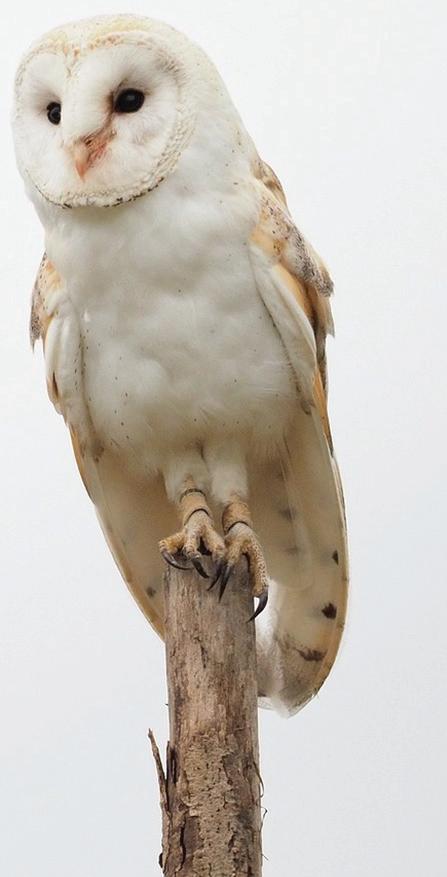
A pair of barn owls and their offspring consume 4,000 rodents a year.
In French, the common barn owl is l’effraie des clochers, ‘the fright of the bell towers’. JOHN LLOYD
222 QI Answers to Your Quite Ingenious Questions is out now

For more on QI, visit qi.com and, on Twitter, @qikipedia

Last Christmas, I received a lovely card of a hare against a snowy landscape. I kept it.
The sender wrote that he had looked hard for a religious card, and apologised for sending what he thought was second best. If I looked carefully, I would find a little medieval church in the background, which was better than nothing.
There is for me a great sadness in such a communication. Surely people should not have to try all that hard to find a representation of the birth or infancy of Jesus Christ in the time before Christmas.
Thirty-odd years ago, I might have directed my friend to the card stall at the British Museum, and to a very satisfying reproduction of what was then thought to be a Rembrandt drawing of a mother and child, seated by a window, in pen and brown wash (pictured).
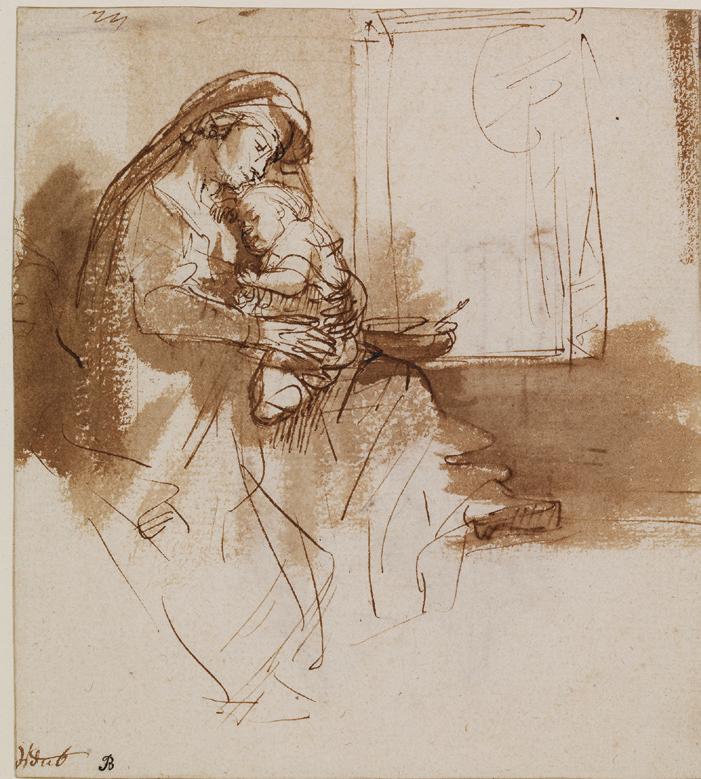
I have kept this card in my breviary ever since it was sent to me, and have seen it three times a day without ever tiring of it. As far as I am concerned, this is one of the sure signs of a masterpiece.
Alas, I am fairly certain that it has
been withdrawn as a card because it has been reattributed as a work not of Rembrandt, but of one of his favourite students, Gerbrand van den Eeckhout.
Does this matter? Not much, because the true value of the sketch (as opposed to its far less important commercial value) shouldn’t be determined by the hand that drew it. It is a beautiful and inspiring object in its own right.
It shows a woman holding a plump baby, who is fast asleep.
On the corner of the windowsill, just by her knee, there is a bowl with a spoon in it, from which we presume she has been feeding her child. The woman looks exhausted and has her eyes shut, but she can’t afford the luxury of sleep because she would drop the baby.
We all know how tiring feeding an obstinate baby who does not want his food can be. But this fatigue does not change the unconditional love a mother has for her child; it is an intrinsic part of that love. And the transition from howling fury to quiet sleep emphasises the strength of that love, which in turn is like God’s love for us.
Van den Eeckhout’s The Virgin and Child, 1638
A little while ago, I spent a few days with a baby. He was awe-inspiring –as babies are, when one takes the time to think about them. But he cried.
I marvelled at the patience of his mother, a patience that Mary must have been called upon to exercise daily when Jesus, God incarnate, was a baby.

The publishing world gathered at St Martin-in-the-Fields, Trafalgar Square, to pay tribute to Carmen Callil, one of the most influential publishers of the last century and an Oldie contributor.
Fifty years ago, in 1972, she founded Virago Press, famed for its Virago Modern Classics, with their distinctive covers, which rediscovered some of the greatest female writers.
Callil’s wicker coffin was carried by seven female pall-bearers. The service was taken by her friend the Rev MarieElsa Roche Bragg, daughter of Melvyn Bragg, who was among the congregation.
Callil was born in Melbourne, the
daughter of a Lebanese Maronite Christian father and a French Catholic mother. Despite being an atheist, she told the Rev Marie-Elsa Bragg, ‘I want a real funeral,’ because, the vicar added, ‘She fought for the beauty and truth that lay under everything.’
The vicar went on to praise Callil’s ‘extraordinary, innate curiosity’ and how you could see her suddenly think up something in front of you with all the ‘delight of a new idea’. At her own admission, Callil could be a demanding boss, but only because she was a ‘voice of experience crying out in the wilderness’.
Julian Barnes recited an A to Z of Callil’s life, including B for Bizet – whose Carmen,
‘fiery and bewitching’, inspired her name. C was for Coutts – where Callil surprisingly banked. G was for green – the colour of Virago Modern Classics, ‘her greatest legacy’.
N was for Newsnight, where Callil, a great supporter of the England cricket team, called the Australian team ‘a bunch of pooftahs’. She later said the expression didn’t mean quite the same in Australia.
Polly Devlin read an extract from Callil’s Lebanese Washing Stories
The choir sang I Don’t Want to Set the World on Fire by the Ink Spots and Callil’s favourite Abba song, Fernando
As the congregation laid flowers on her coffin, the choir sang Bella ciao, a 19thcentury Italian protest song Callil often sang.
HARRY MOUNTIs prevention always better than cure?
It is worse than cure if it fails to prevent, for it both raises anxiety and costs money. In the case of mass screening, it is often not easy to decide whether the light is worth the candle.
From time to time, I receive an ‘invitation’ to undergo a colonoscopy. So far, I have always turned it down; the test for occult blood in the stool is as far as I have gone. I have always told myself that my refusal of colonoscopy is based on the lack of scientific evidence that it is beneficial. But it’s really because I do not like the idea. I am squeamish about it.
It was with some selfish pleasure, then, that I read recently in the New England Journal of Medicine the results of a trial of colonoscopy from Norway, Sweden and Poland.
People of susceptible age were randomly invited, or not, to undergo a colonoscopy as a screening for cancer of
the large bowel. After ten years of follow-up, the risk of death from colon cancer was only very slightly lower in those who had been invited for screening, and the overall death rate from all causes was no different.
As is so often the case with trials, the results were not absolutely decisive. Only about 40 per cent of those invited for colonoscopy agreed to it; evidently, my mentality in this regard is commonplace. If all the people invited had accepted, the results might have been more favourable to the procedure.
In addition, the colonoscopy was carried out only once, at the beginning of the ten-year follow-up period.
If it had been repeated at, say, five years, for the 30 per cent of the patients who underwent it who had supposedly pre-cancerous polyps removed (and who might be expected to be more likely than average to develop cancer of the large
bowel), the results again might have been more favourable to the procedure.
Incidentally, I have known people who seem to become almost addicted to colonoscopy and have it performed frequently, under the impression that they are thereby prolonging their life greatly. Whether they actively enjoy it I have not enquired.

To prevent a single extra case of cancer by means of a colonoscopy (and removal of pre-cancerous polyps), in the real-life circumstances in which this trial was carried out, 455 patients would have to be invited to undergo it.
That is not the same as saving a life from cancer, however, since not everyone who has the cancer dies of it.
But if every invitee had accepted the invitation, it would have required only 182 patients to undergo a colonoscopy to detect a single extra case of cancer.
Outside North Korea, however, 100-per-cent acceptance is inconceivable. And rates of acceptance varied considerably between countries: 60 per cent in Norway and 33 per cent in Poland.
Another interesting finding of the investigation was the lower-thanexpected number of cases of cancer of the large bowel. It appears that the incidence is declining rather than rising.
The authors of the paper do not speculate as to why that should be, but presumably it has something to do with diet.
Even if it is true that screening by colonoscopy does not lead to a decrease in the overall death rate, it remains possible that it allows people a better death than they otherwise would have had – if, for example, to die from cancer of the bowel were worse than to die of other diseases. That, however, would have to be shown, and I am not sure how it could be shown.
I stick to my original refusal to accept the invitation.

I refused a colonoscopy because I’m sceptical – and squeamish theodore dalrymple
‘That one’s a selfie’
The Oldie, 23–31 Great Titchfield Street, London, W1W 7PA letters@theoldie.co.uk
To sign up for our e-newsletter, go to www.theoldie.co.uk
SIR: I enjoyed Natasha Fraser on ‘Karl Lagerfeld, my heavenly boss’. This French poster showed his impressive blend of humour and serious intent.

Yours, Peter Kendall, Balaruc les Bains, France
I would like to know whether the rumour currently circulating in literary circles is true: he is working on an autobiography which will be entitled Sir Les – Warts and All
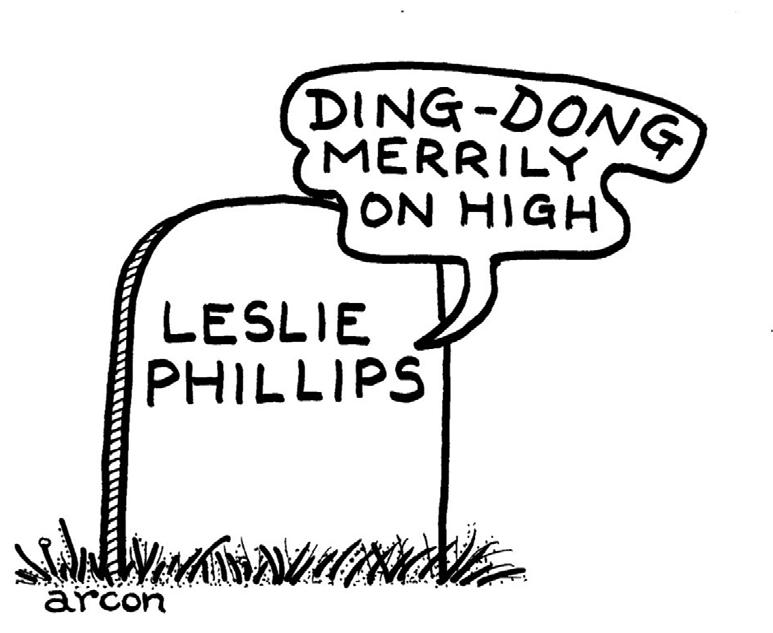
We know the great man is not perfect and so it will be a pleasure worth waiting for.
Henry Wizgier, Amersham, Buckinghamsire
SIR: I write in strong support of Mary Killen’s plea (December issue) for your readers to see a dental hygienist. I see my hygienist twice a year. Money well spent.
SIR: Town Mouse need not worry (‘l want a cheapskate send-off’, December issue). My family were discussing the cost of funerals some years ago when my daughter, a nurse, and ever mindful of my welfare, cried, ‘Dad, if you leave your body to the medical school we won’t have to pay for a funeral.’

I made enquiries and learned that when my body has been used to teach anatomy to future doctors, the bones will be cremated and the ashes handed to my no-doubt-grieving family, at a service of thanksgiving shared with other families, at the university church of Great St Mary’s.
I signed up and informed my GP. Stephen Halliday, Cambridge
SIR: Sir Les Patterson should be available on prescription – he’d save the NHS thousands on antidepressants! December’s article was worth every penny of my subscription. Long may he continue. Jane Jones, Hoole, Chester
SIR: As a great admirer of Sir Les Patterson, who is of course a regular contributor to your excellent magazine,
With regard to the association between certain diseases and inflamed gums, Dr Theodore Dalrymple reminds us regularly that association is not the same as causation. Diabetics are more prone to infection and inflammation, especially if their diabetes is not well controlled.
Several years ago, I told my hygienist that I could not get the hang of flossing.
She said that flossing, if not done properly, can damage the base of the tooth. She advised me to use interdental brushes. These come in different sizes, according to the size of the gaps between one’s teeth. I have used them successfully ever since.
Dr John Noone, Worsley, Manchester
SIR: Last month’s Rant by Carolyn Whitehead (‘Loo-paper dispensers’, December issue) would have struck a chord with many. The answer is always to carry a packet of tissues.
However, on a recent trip to Italy, a fellow traveller made everyone smile when she emerged from a cubicle at a ‘pit stop’ and cheerfully announced, ‘No loo paper. Drip-dry only!’
Helen Jones, Ludlow, Shropshire
SIR: Andrew Cunningham (‘Not the retiring type’, December issue) seems to me to be struggling with retirement simply because he cannot let go of his past working life. He also appears to have had only a working life, with a lack of socialising away from work.
Retirement is a glorious reward for a lifetime at work. It is a gift with hidden gems, which you have to search for or prepare for. Wasting any retirement day is criminal, once you realise that each retirement day draws you ever nearer to that final day.
When you accept this, you strive to fill your days with memories.
John Goldstraw, Bottom House, Staffordshire
‘It’s yellow, it’s ugly and it doesn’t go with anything but it could save your life.’
‘Before you go, dear, how do I delete the sports channel?’
SIR: Stephen Glover’s article (Media Matters, December issue) about a hack’s best training reminded me of Edward Crankshaw. He was a friend of my parents when I was at school. I think he was then editing the back page of the Observer. His youthful, exuberant book on Vienna encouraged me to explore that city for myself in the sixth form. When I told him I had gained a university place, he said his university had been the war. He was glad I had been spared that.
For many years he was my mentor and made even the harshest criticism feel like praise. He was the kindest and most self-effacing man I have ever met.
William Wood, Maulds Meaburn, Cumbria
SIR: I noted with interest Sister Teresa’s definitions of ‘grace’ (God, December issue). I have always been taught, quite simply, that it is ‘God’s Riches At Christ’s Expense’.
Elizabeth Sadler, Walton-on-the-Naze, Essex
SIR: I enjoyed Andrew Roberts’s article in your December issue.

While I was too young to see Genevieve at the cinema, I later came across it on television. Imagine my surprise that one scene, supposedly on the road to Brighton, was actually shot on Batchworth Heath near Rickmansworth. This was just round the corner from where I lived.
I also had the pleasure of meeting many of the stars of that era, such as Derek Farr and Muriel Pavlow, at an annual cocktail party held by a neighbour who was an insurance agent to many actors of this period.
How wonderful this period seems in retrospect.
Yours faithfully, Kevin J Last, Hinton St George, Somerset
SIR: Andrew Roberts’s article about the film Genevieve (December issue) awakened memories of my year in Ghana, West Africa, where I worked as a VSO volunteer in 1965.
One evening the British Council (the United Kingdom’s international organisation for cultural relations
‘It’s alternative fuel. It runs on money’

and educational opportunities, which had an office 60 miles away in Ghana’s capital, Accra) brought the film to St Paul Technical School where I worked in the village of Kukurantumi. When darkness fell, they screened Genevieve on the white exterior wall of the dormitory block.
The event was regarded as so prestigious that I was instructed to drive to the home of the village’s Chief to convey him and his numerous children to join the school pupils watching the film.
They loved it – but I don’t know what they made of the historic Darracq
and Spyker cars which were the stars of the film.
Tim Stanley, Bristol, Avon
SIR: In her review of A Brief History of Pasta (December issue), I’m afraid Elisabeth Luard adds to the confusion about ingredients for spaghetti all’amatriciana. Guanciale is cured pork cheek (as its name in Italian suggests), not collar. Even so, I thank her for bringing the book to my attention as it seems like a must for any Italophile. Philip Cooper, Liverpool
‘And don’t forget to follow us on Instagram!’
My twin brother, Peter, and I endured our secondary education at a Scottish private boarding school, Glenalmond College, near Perth, between 1962 and 1967.
In our second year, I began to see a distinctive new boy wandering around the school with a leisurely, loping stride. He was very stocky and powerfully built, with a steely, humorous glint in his eye. His name was Rob McMillan – in later life, Robbie Coltrane.
Rob was from a well-to-do background. He was born in Rotherglen near Glasgow and his father was a GP and a forensic scientist for the Scottish police. His mother was a teacher.
We played for the school in the same rugby team, and we were both at an army camp in Germany in 1966. For a week, we were at Minden in Germany with the famous Black Watch regiment during the summer holiday in July 1966. The World Cup was being played in London.
At this corps camp, Rob McMillan was by far the most entertaining person. He was naturally funny (he could impersonate every teacher in the school perfectly) and could improvise brilliantly with quips and insults. He was very popular with his contemporaries and had a rebellious reputation, due to his hatred of trivial school rules. An army camp was fertile ground for his brand of humour.
One day, we had to attempt the Black Watch army assault course – a frightening prospect. Rob approached the task in the style of Kenneth Williams.
In 1966, this was not regarded as being insulting in any way; high-camp impersonations were common. Rob’s comments – ‘Is that barbed wire? You won’t get me near that, love’ and ‘I love that knotted rope. Ooh, that does look fun’ – were spontaneous and very funny. We could not complete the course for laughing.
The next day, he managed to reverse an armoured personnel carrier into the camp perimeter fence, knocking it over. I remember him jumping off the carrier,
My father was a career soldier, who joined the Royal Engineers as a sapper in 1926. By 1935, he had attained the rank of Staff Sergeant. He was then seconded to the Indian Engineers with the rank of Second Lieutenant and took his pregnant wife first to Lahore, arriving in February 1936 after a dreadful journey in the troopship Nevasa.
Soon the intolerable heat of summer began, and it was ‘women and children to the
Funny boy: Robbie Coltrane (front row, far left) and David MacGowan (back row, 2nd right), Glenalmond College Rugby Team, 1966

swearing he’d ‘never drive one of those bloody things ever again’. He was 17 at the time.
Years later, in 1982, watching the Comic Strip performing Five Go Mad in Dorset on the opening night of Channel 4, I wasn’t surprised to see him in a supporting role. By then, he had morphed into Robbie Coltrane, and I knew he would become a famous comedian. In my eyes, he was one already.
Rob didn’t enjoy his time at Glenalmond. Later in his career, he called for private schools to be banned. I wonder if his schooldays provided useful material for some of his early comedy. David MacGowan
hills’. So I was born in the cool hill station Dalhousie, in the foothills of the Himalayas, whose snowy peaks were visible 100 miles away.
By September, it was too cold at high altitude; my mother and I returned to the plains. We continued this annual oscillation to and from different hill stations until 1940, when my father went with his corps to Iraq, there to build a pipeline to take oil directly to our allies in Russia.
My mother heard of a hill station in the south of India that had equable temperature all year round.
So we two made an epic five-day rail journey via Lahore, Delhi, Bombay and
Madras to Coonoor in the Nilgiri Hills, where we stayed until the war ended.
As Catholics, we were familiar with the standard Angelus prayer said at noon. It begins, ‘The angel of the Lord declared unto Mary…’ and includes the lines:
‘Pour forth, we beseech Thee, O Lord, Thy grace into our hearts, that we to whom the Incarnation of Christ, Thy Son, was made known by the message of an angel...’
I must have heard this first as a child of four.
During wartime, in about 1940, I have a vivid memory of visiting Landi Kotal with my parents. We looked into Afghanistan from the nearby Khyber Pass. I was excited to
see Spitfires landing and taking off – at the high altitude of Landi Kotal, they did spit fire from the exhausts.
Even remote from the Battle of Britain, we had regular letters and radio news from England, and I knew the main aircraft that were protagonists and thus I thought the prayer went:
‘…the incarnation of Christ, Thy Son, was made known by a Messerschmitt angel…’
By Peter Gleeson, Hermanus, South Africa, who receives £50
Readers are invited to send in their own 400-word submissions about the past



The jaw-dropping trajectory of Ghislaine Maxwell’s fall from grace has been chronicled so often that surely there’s nothing left to say. She plummeted from the upper echelons of British society to a US Federal Prison in Tallahassee where she is serving 20 years for sex trafficking.
We all know how this darling daddy’s girl, the favourite offspring of megalomaniac ogre and corrupt tycoon Robert Maxwell, who siphoned £500 million from his companies’ pension funds in the late eighties, fell under the wicked spell of one monster to another.
We’re intimately acquainted with the fact that, after her father’s mysterious death in 1991, when he plunged off the back of his yacht the Lady Ghislaine off the Canary Islands, Ghislaine became the accomplice in crime to the filthy-rich paedophile Jeffrey Epstein.
Weirdly, Epstein also died mysteriously, when he was found hanged in his New York prison in 2019.
We’ve followed the sorry Successionesque saga of Ghislaine’s life, where her survival in these stratospheric circles necessitated acquiescing to the whims of two repulsive, reprehensible men.
When the devastating details of the crimes perpetuated against innocent young girls – the ‘nubiles’ – whom
Ghislaine ensnared to feed Epstein’s paedo sexual habit emerged, it fuelled further car-crash fixation. What the hell happened to the gilded girl who mixed with princes and presidents?
When Hunting Ghislaine by investigative journalist John Sweeney hit my desk – which Sweeney penned off the back of his addictively chilling podcast Hunting Ghislaine – I genuinely thought, ‘Nah, nothing new here.’
Surely we have reached peak Maxwell saturation. It’s a situation I have fully contributed to. I’ve written pieces about Ghislaine and appeared on Sweeney’s podcast, thus meriting a few lines in this book.
The reason for my bit part in Maxwellian history is that I knew Ghislaine briefly in the late eighties.
Although she was a few years above me at Oxford, we moved in the same social circle. While she wasn’t a friend, she was an air-kissing acquaintance.
I remember her as glamorous, popular and calculating. As I was of no interest to her – I wasn’t rich or well connected – she would scan over my shoulder at parties for someone more important to talk to. She wasn’t warm, but her smile could melt tundra if aimed at you. Which it never was at me.
She saw women not as cosy chums, but as a conduit to powerful men.
After Oxford, she started the allwomen’s Kit Kat Club, named after an early-18th-century political club.
It seems utterly ironic to me now, given her complete and depraved betrayal of young women, that I was in awe of her for hosting a gathering of women only in smart London addresses to listen to female speakers she invited. I keenly attended a few of these talks, where Ghislaine dazzled.
As I also spent my early childhood in Oxford, where the Maxwell family loomed large at the top of Headington Hill, I imagined there wasn’t much I could learn from Sweeney’s tome about Ghislaine’s early life.
My older sister, Jane, went to prep school with Ian and Kevin Maxwell, and was invited to parties at the family home, Headington Hill Hall, a bleak 53-room mansion.
There, the backdrop was the tyrannical and terrifying figure of despot Bob. Even in the seventies, there was the sense that Maxwell’s children (there were eight of them) paid a high price for their privileged existence.
Maxwell, an impoverished Czech immigrant who became a billionaire newspaper magnate, always felt – and indeed was – an outsider in Britain.
Insecure, paranoid and unrelentingly cruel, he created a surveillance state in

his offices and home. Interestingly, so did Epstein.
Back to Sweeney. Once I had adapted to his blokeish conversational style, I raced through his book, stuffed with tantalising facts fresh to me.
While he is never going to win a Pulitzer for his prose – I laughed out loud at his description of Ghislaine wearing a ‘kaftan thingy over her top’ – his dissection of this ‘dark fairy-tale story told in reverse’ is clever and compelling.
We learn that ‘Maxwell was a sadist who loved sadism as a spectacle’. What on earth could his cultured French wife, Betty, have seen in him? Why did she stay with a man who ritually abused her and their children? Sweeney explains Betty’s self-destructive passion for her loathsome husband. In one letter, she writes to him, ‘I want to drown my soul in your desires… You will only need to say what you want and it will be done, or to express a desire and I will satisfy it.’
Sound familiar? Isn’t this what Ghislaine pledged to Epstein?
I didn’t know that the brittle and brutal Ghislaine used to boast about ‘making Diana cry’ (Ghislaine knew Princess Diana’s brother, Charles, at Oxford) or that one of her closest friends at Oxford was Count Gottfried von Bismarck.

I devoured the pages about the great-great-grandson of Prince Otto, Germany’s Iron Chancellor, because in my first year my rooms were below his in Blue Boar Quad at Christ Church.
I knew who he was only when the police arrived, that summer term, because Olivia Channon, the 22-year-old daughter of Paul Channon, one of Margaret Thatcher’s Cabinet Ministers, had tragically died of a heroin overdose in von Bismarck’s room. I remember the police cordons and the shock.
Sweeney details how von Bismarck ‘left Oxford so quickly that he did not have time to settle his bills. His father, Prince Ferdinand von Bismarck, sent a manservant, who went round his son’s favoured watering holes, restaurants and his tailor with a fat chequebook.’
The disgraced von Bismarck kept in touch with Ghislaine until his death in 2007 from a drug overdose.
I also learned that Ghislaine’s habit of calling Epstein’s victims ‘minions’ came from the Piers Gaveston Society, where members were divided into Masters and Minions. I attended one of their parties in a stately home near Oxford. A former head of the society said that the Piers Gaveston appealed to those who ‘only went to Oxford to feel as if they were in a pornified Evelyn Waugh novel’.
One of Epstein’s victims told Vanity
Fair Maxwell ‘would call people her minion[s] … so you felt like you were nothing’.
Sweeney crisply concludes, ‘The worry is that she took a joke for posh twits in the Piers Gaveston Society and lived its sick, elitist gospel to the letter.’
Sweeney’s coverage of Ghislaine’s trial in New York really zings, punctuated by his unbeatably blunt observations.
‘Watching how Ghislaine’s defence lawyers earnt their big money, how they used their wits to trash sad, broken women, [I could feel that] my pity for Ghislaine Maxwell shrivelled with every passing minute,’ he writes. Just as ours does with every passing page.
Sweeney views Ghislaine with a clear eye, worrying at one point that ‘we might be judging Ghislaine Maxwell unfairly, using the #MeToo glasses of 2022 to look at the world of the 1980s and 1990s’.
Yet nothing can excuse her. He finishes quoting from The Great Gatsby, ‘how the rich “smashed up things and creatures and then retreated back into their money”. Nothing good came of that. Or them.’
Amen to that.


If you read Bob Dylan’s magnificent memoir Chronicles: Volume One or the sleeve notes to his album World Gone Wrong, you’ll know what to expect in his new book.
As you might imagine from a songwriter so wildly inventive, freewheeling and mercurial, Bob Dylan’s prose is splendidly unconventional, full of surreal, crackling flights of fancy and vivid, sense-impressionist memories.
This is the same – in fact, it’s even more supercharged. The rather loftily titled The Philosophy of Modern Song reflects on 66 records with which he feels a powerful connection. It’s a varied assembly, from old show tunes such as Mack the Knife and Strangers in the Night to vintage blues, ballads, country music and unlikely selections from the Grateful Dead, Elvis Costello and even London Calling by the Clash.
The book is entertainingly read in the audio version, incidentally, by the gravelly old goat himself and a stellar cast including Jeff Bridges, John Goodman, Renée Zellweger and Helen Mirren.
The key word on the book jacket is ‘essays’. Perhaps appropriately –although I found it a little annoying – this is essentially an ‘art boook’. It’s illustrated tangentially with old movie stills, car ads, news pictures, pulp-fiction jackets, Life magazine covers and images of American culture.
None of them is captioned. So they are effectively ‘mood boards’ creating an atmosphere to suit the songs in question and the worlds they inhabit. Occasionally, you get some biographical fact about the people who wrote and sang them. But mainly Dylan just points out what makes them magical and uses each track as a springboard to launch almost dreamlike riffs about where these crackly old discs take his imagination.
Reflecting on There Stands the Glass by Webb Pierce, a song about an anonymous soul who’s hit the bottle, Dylan invents a whole world of pain that might have caused it – ‘The guy in this song has quite a backstory. He fought like a savage, he stuck a bayonet into babies’ bellies and gouged out old men’s eyes. He’s been unfaithful to the human spirit and he’s assassinated priests.’
Mose Allison’s Everybody Cryin’
Mercy – a straightforward saga about going round in emotional circles – feels like ‘a spine-tingling roller-coaster at the amusement park. Thumbing a ride on the Ferris wheel, shooting ducks and winning kewpie dolls.’
He takes every subject and runs with it. The famous blue suede shoes of Carl Perkins’s deathless hit ‘can foretell the future, locate lost objects, treat illnesses, identify perpetrators of crimes’.
The Who’s My Generation is reimagined from the point of view of an 80-year-old in a care home. For Jimmy Webb’s By the Time I Get to Phoenix, he confects a fantasy about the singer leaving a woman who works nine to five as a massage therapist in New Mexico.
A lot of it is extremely funny, shot through with his typically bone-dry and devilish humour. Replaying Cheaper to Keep Her by Johnnie Taylor, he reminds you ‘divorce is a ten-billion-dollar-ayear industry. And that’s without renting a hall, hiring a band or throwing bouquets. Even without the cake, that’s a lot of dough.’
The heroine of Little Richard’s Long Tall Sally, he suggests mischievously, was ‘12 feet tall’ and part of an ancient tribe called the Nephilim – ‘they’ve uncovered bones of these giants in Egypt and Iraq’ (as recently claimed in an internet hoax).
He writes about some of these characters as if they’re straight out of gumshoe fiction or old-school Westerns.
Men are outlaws, renegades, hoodlums and hustlers, and women are ‘vamps’ or ‘foxy harlots’. The one he pictures in Ruby, Are You Mad? by the Osborne Brothers is ‘jam-packed, full-bodied, mellow, top-heavy and in her prime. She calls you snookums and you call her buttercup.’
Will this appeal to anyone other than deep-end Dylan enthusiasts like me?
I wonder. As long-time supporters know, his main currencies are mystery

and imagination. This extraordinary book, with its deep and contagious musical affection, conjured vignettes and playful theatres of the absurd, tells you nothing about the cause of any of these songs; only their effect.
But it does light the blue touchpaper for one of God’s great story-tellers. You feel these exotic meditations are, much as his music is, a tap he couldn’t turn off.
As he says when contemplating Warren Zevon’s Dirty Life and Times, ‘being a writer is not something one chooses to do. It’s something you just do and sometimes people stop and take notice.’
Yale £45
From start to finish, Charles O’Brien’s revised Pevsner Guide to Surrey is a beautiful book – from the magnificent photograph on the front cover of Horsley Towers, designed by Byron’s son-in-law, the Earl of Lovelace, in 1858, to the glossary and indexes at the end.
The glossary is a joy in itself, with its eight pages of exquisite little architectural drawings of mouldings and windows and tracery, of pediments and domes and squinches and staircases.
Published in 1962, the original Surrey was the first work in which Pevsner collaborated with Ian Nairn (1930-83), a young colleague whom he described as a born topographer. Bridget Cherry’s revised edition appeared in 1971.
The introduction to this volume includes a history of Surrey dating back to prehistoric times by Mary Alexander – modern humans first arrived there 40,000 years ago. Eventually, in the tenth century, Guildford was developed – the first town in Surrey.
Guildford, the oldest town in the county, has the newest cathedral in Britain. The building of the cathedral, designed by Sir Edward Maufe in 1932, was interrupted by the war and completed only in the mid-sixties.
O’Brien quotes Ian Nairn’s prescience in claiming that it would ‘be no more than a well-mannered postscript to the Gothic Revival’, but he has considerable admiration for the interior, for the ‘very impressive and sober, free Gothic, central “vessel” ’ and for the ‘noble and subtle’ narthex at the west end, which has ‘a strange power of compelling not reverence but contemplation’.



One of this book’s many beautiful colour plates shows a view of the nave of the cathedral, quite reminiscent of de Witte’s 17th-century paintings of the interiors of Dutch churches.
Nothing is overlooked by O’Brien in his description of Guildford itself.
Everything is described in such clear detail: from the churches, the 16th-century grammar school, the almshouses and public buildings, the Yvonne Arnaud theatre, the library, the police station. He even finds a place for the Guildford High School for girls – of which your reviewer is an alumna, without at the time having appreciated the ‘gentle English classicism’ of the building in which she studied.
He is rightly merciless about the ‘tangle of highways … and one-way systems’ created by the planners around the two bridges crossing the river Wey at the bottom of the town.
But within a few miles of Guildford are to be found many houses of note. There is Sutton Place, built in the first half of the 16th century, visited by Henry VIII and later owned by J Paul Getty Sr.
Loseley Park, built in the 1560s, is ‘the best house of its date in the county’. Polesden Lacey has had many incarnations; today it is entirely Edwardian. It represents, says O’Brien, ‘some of the most attractive Edwardian in the country’. At East Clandon, there is Hatchlands Park.
At West Clandon, there are the remains of Clandon Park, an 18th-century Palladian house, acquired by the National Trust in 1956 and burnt to a shell in 2015. The house had been renowned for its marble hall – a 40ft cube, the ceiling of which comprised some of the finest plasterwork in the country. Now no longer. A colour plate of that hall is here to remind us of its lost beauty.
But this book is not just about towns and grand buildings. Every village and every church of note is described in exquisite detail. Many a holiday could be spent sightseeing in this much-maligned county. Despite what O’Brien describes as ‘a particularly mean kind of village expansion’ in the 20th century, parts of the county remain entirely rural. At every turn, there are undreamt-of monuments, stained-glass windows, clocktowers and farmhouses of beauty and interest.
Owing to the creation of Greater London and the consequent loss of boroughs such as Barnes and Richmond, the county has shrunk since Pevsner’s and Nairn’s day. Nevertheless, O’Brien has had his work cut out, partly because of the inclusion of many modern
buildings and a greater coverage of 19th- and 20th-century churches.
This is a work of extraordinary scholarship, to be dipped into or to study. It’s certainly to be taken with you when you are next fortunate enough to be in Surrey.
Teresa Waugh was brought up at Clandon Park, Surrey
Reading this book, I was shocked to discover what had been happening in St Michael’s, Cornhill, in the City of London – my old parish – in 1959, before my time there as rector: ‘Fined – John Wilkins for going about the street in women’s apparel, being the parish clerk at that time. His explanation to the court was that at a marriage in a merriment he did disguise himself in his wife’s dress to make some mirth for the company.’
This great, fat, sumptuously illustrated book has a fascinating anecdote like this not just here and there, but on every page. I have sat through hundreds of churchwardens’ meetings and been bored silly by their annual accounts and never come across anything more interesting than the price of hymnbooks or a new boiler.
Here is a treasure house of information, history, meticulous detail and fascinating revelations. This is what church history should be like. It is a sort of religious version of that scurrilous old Sunday paper the News of the World: all ecclesiastical life is here.
‘1617: Thomas Tailer for misbehavinge himself with his dogge in the church in the time of divine service.’ That was at Hawton in Nottinghamshire.
At West Pennard, a parishioner tied his dog to a bell rope and had it run around, tinkling and clanging, during the sermon. In 1603 in Winchester, Joan Golding was fined 6/8d ‘for baptising a cat’.
There is plenty of seriously surprising stuff here too: ‘1536: To Thomas Tallis for half yere’s wages, £4 – St Mary-at-Hill.’
What! Four quid for one of the greatest English composers, the creator of the musical setting for the Litany (still sung today in that remnant of churches that have not gone over to Jiving for Jesus worship songs) and his heavenly 40-part motet Spem in alium
There is social history here, too, not in the form of a tedious academic disquisition but in a thousand touching little tales, such as: ‘1592 – Annis Parker, infant daughter supposed of Thomas Parker of Mordoun, beinge lefte in the churche portch by that harlot her mother, buried December 18th.’
Or this: ‘1730: for getting the Irish women away to Ireland – £1-1s Leyton Essex.’
There were other calls on church funds: ‘1563: for gunpowder to beat ye starlings from ye churche, 9d St Martin, Leicester.’
But there was also charity: ‘1687: married at the expense of the parish, King and Queen of the jepsies [Gypsies] Robert Hem and Elizabeth Bozwell –Camberwell, Surrey.’
Dodgy deeds abounded, as in 1587, when, in the parish of Startforth, a priest married ‘an unknown tinker with a girle of 12 yere olde neither being of that parish for 2/6d’.

There are scenes both quaint and ingenious: ‘1832 5th November, Christopher Newsam married Charity Morrell. She being entirely without arms, the ring was placed upon the fourth toe of the left foot, and she wrote her name in this register with her right foot –St James, Bury St Edmunds.’
And then there’s the macabre, such as the burial of a deceased’s bowels only in the parish where death occurs, with ‘We’ve decided to hire someone else ... as soon as someone else applies’

the rest of the body embalmed and transported for interment in the home or ancestral parish: ‘1577 – Received for the buriall in the quire of Mrs Abington’s intralles and for ringing then 6s –St Martin-in-the-Fields.’
Sometimes I turned a page and it was just to cry, as at this account of Cunozoa Almsbury, a foundling brought into church and baptised at Winchcombe in 1747: ‘This child was exposed – and protected by dogs which defended her from the swine.’
And yet more from my old church of St Michael’s – ghosts! ‘1559: St James’ night, a tempest of lightning and thunder did arise, an uglie-shapen sight appeared to them coming in at the south door.’
Among thousands of stories amusing or heart-rending – and some bordering on the incredible – my favourite is this from Hawkshead, Lancashire, in 1721: ‘For stairs to the pulpit and a trap door – 12/6d.’
Was the preacher judged to have gone on too long (in the way Ysenda Maxtone Graham describes on page 40)? Then, from their pew at the back, the churchwardens operated the mechanism and dispatched him.
Caution: think twice before you pick up this book. You might never be able to put it down again.
Rev Peter Mullen was Rector of St Michael, Cornhill, and St Sepulchrewithout-Newgate in the City of London
Anthony Speelman is one of the most respected art dealers of his generation. He has spent some six decades in the business, selling paintings to the world’s greatest collectors and museums.
His memoir, A Tale of Two Monkeys: Adventures in the Art World, richly illustrated with reproductions of many of the pictures that have passed through his hands, takes Speelman’s readers on a Grand Tour of the art business, replete with vivid descriptions of paintings, people, places and numerous splendid lunches along the way.
Speelman’s father, Edward Speelman, was also a successful art dealer. His mother, Sally De Casseres, was the daughter of the gallerist and art dealer Arthur De Casseres.

Anthony was always, it seems, destined for a life in the art world. Still, after being ‘subjected to museum visits from an early age’, he describes himself as having little interest in art as a child: ‘I would have much rather been throwing a tennis ball against the wall in our road.’
His epiphany comes when he is 16.
On a family trip to Italy, Christ Blessing, a small painting by Raphael in a museum in Brescia, catches his eye. ‘Although it was quite dirty, it shone in comparison to all the other paintings in the room. It had a luminosity that I had never seen before in a painting, and I started to wonder what made it so superior to anything else.’
He realises then that he will follow in his father’s footsteps. Speelman’s studies took him to France, Austria, Germany and Italy, where he visits countless galleries and gets to know one museum so well that he becomes an unofficial tour guide.
His keen eye for detail is not reserved only for paintings. He is an observer of all things, remarking on the formality of playing chess with fellow students in Freiburg (‘Your move, Herr so-and-so’) and rough shooting in the hills between Florence and Bologna, where almost all
birds are fair game: ‘I witnessed two men coming to blows as they both tried to pick up a thrush.’
His travels for both his studies and his professional life are punctuated with epicurean descriptions: cured ham and grappa in Italy; grilled baby crayfish in Portugal; smoked eel, brown shrimps and steak tartare, washed down with beer, wine and oysters at the Maastricht Art Fair.
But it is the paintings, their provenance and stories that are the real stars of the book.
Under his father’s tutelage, Speelman learns to make accurate attributions, using both instinct and science.
Dendrochronological analysis helps him to identify the panel depicting a rare 15th-century Flemish Virgin and Child.
He learns not to be put off by cost. ‘The bitterness of low quality,’ his father tells him, ‘remains long after the sweet taste of a cheap price has vanished.’
His father also teaches him that the relationship between dealer and client is crucial. The great collector Harold Samuel, who once bought a Rembrandt self-portrait to put above his fireplace, would complete deals in a week. He would hang a potential



purchase in his Sussex house for a weekend and then, if he liked it, pay up the following Monday.
Paul Mellon’s wife loved flower paintings, particularly with a basket in them. That’s why Speelman ends up selling her husband Jan Brueghel the Elder’s Flowers in a Basket and a Vase for £85,000.
For Speelman, the thrill of the chase can be as alluring as the beauty of a masterpiece. The two monkeys referred to in the book’s title are almost identical versions of a picture by George Stubbs, painted some 20 years apart. The poorerquality painting belongs to the Walker Art Gallery, in Liverpool. The superior version was discovered by Speelman hanging in the top row of a job lot of low-grade paintings in a minor sale at Sotheby’s:
‘I climbed up and took a close look at it. As filthy as it was, two things were immediately evident: the light-coloured patch of hair above the monkey’s ear was brilliant in its execution and, beneath all the dirt, the right eye was superb.’ He still owns the painting today.
To be in the company of anyone who loves their work is infectious, and Speelman’s delight in the pictures (and deals) that have passed through his hands is palpable. His life and career have been filled with rare pleasures. It is a pleasure to revisit them alongside him.
The Duchess of Beaufort is author of Chin Up, Girls! A Book of Women’s Obituaries from the Daily Telegraph
In June 1983, the prominent citizens of Indianola, Mississippi, both black and white, got together to throw a garden party for the city’s most famous son.
Nobody was more surprised than the man himself. B B King (1925-2015) had grown up under the codified racism known as the Jim Crow laws, under which separation of the races was constitutional. Drafted for the Second World War in 1944, aged 18, King was on a bus filled with fellow black conscripts when one of them leaned out of the window and said, ‘How y’all doing?’ to some white women in the street. When the bus stopped in the next town, a man
with a rifle stormed on board and threatened to shoot every single one of them for ‘yelling at my daughter’.
In 1950, by which point he had left an intended life as a plantation worker to carve out a name as one of the most promising blues guitarists on the all-black Chitlin’ Circuit, King was arrested by a white cop for speeding, fined 90 dollars which the policeman knew he couldn’t possibly have and thrown in jail.
After a lifetime of being reminded of his status as a black man in America, the garden party was a significant gesture. Not everyone was keen on it, though. ‘I don’t think I’ll make it to see ol’ B B,’ a white man in the local pool hall told one reporter. ‘He’ll have plenty of his people out there to keep him company.’
From the way Daniel de Visé tells it in his clear-sighted, definitive biography, B B King’s journey from poverty-stricken beginnings to becoming the best-loved bluesman of all time mirrors the black experience in 20th-century America. When, in 1983, the country’s first blues archive was set up at the University of Mississippi, where 20 years previously white students had rioted over the enrolment of a black student King was asked why the blues was born in the Delta.
‘That’s like asking why life began where it did,’ came the reply. But the blues, with its eerie spaciousness and stoic acceptance of suffering, sounded like the Delta, a muddy expanse of flood plain on which an empire of cotton was grown on the backs of slaves and their descendants.
King lost his mother when he was ten. He was 15 when he witnessed a young black man being lynched for ‘touching a white woman’. A year later, he saw a way out of the sharecropping life when he bought his first guitar. Running away from the plantation he worked at in 1946, after crashing the owner’s tractor, King headed to Memphis to seek out his
used to leave the lights on to deter burglars. Now it attracts them because they think we must be loaded’
cousin, the pioneering Delta guitarist Bukka White. So began his life as an itinerant bluesman, which continued pretty much until his death in 2015.
De Visé’s investigations throw up some surprises. King did little to dispel his image as an inveterate womaniser and never denied paternity claims –although in later years he did move to a gated community in Las Vegas to stop any potential offspring from turning up unannounced. But an incident in the war years made those claims unlikely.
Following a bout of gonorrhoea, King’s testicles swelled up to the size of a melon, which an army doctor dealt with by resting the enlarged gonads on a tree trunk and slamming a book down on them. Given that he never had any children with his wife, Martha, it is likely that the incident left King infertile.
Despite his vast success, King also appears to have been perennially broke. An addiction to gambling and a generous nature didn’t help; nor did a lackadaisical attitude to taxes which left him owing millions to the IRS. But there was bad luck, too: a bus crash in 1957 that killed a truck driver and brought a $375,000 lawsuit from his widow; the blues falling out of favour in the early ’60s; the usual managerial rip-offs.
Help came from a generation of callow British youths, Clapton and the Rolling Stones among them, whose discovery of the blues in the mid-’60s introduced King to white audiences, in front of which he remained for the rest of his life. Along the way we get a portrait of a likeable fellow with a stutter, an appealing humility and an ability to make his guitar sing in a way that has not been matched before or since.
Reading King of the Blues made me want to dig out those old B B King records and soak in the magic all over again.
Will Hodgkinson is the pop critic for the Times

‘We


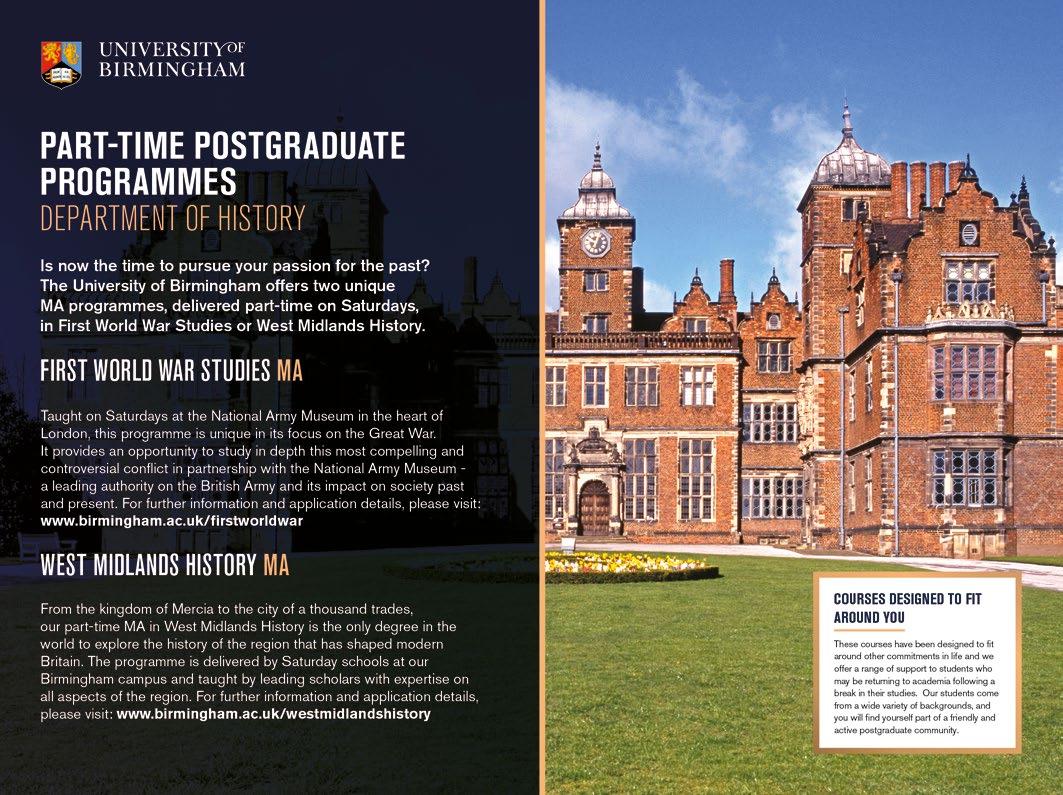
As cheerful as a leper bell.
Simon Raven on Gore Vidal
Repose ‘comes easy in a gloomy place’. Joseph Mitchell (1908-96)
The ideal restaurant is one where I walk in and the food is already on the table.
The waiter says, ‘I knew you were coming’ – he looked out of the window and saw me.
The wine has been poured, there’s no one else in the restaurant, and the waiter doesn’t bother me while I’m eating to ask if everything is all right.
Then I get up, still chewing (I’ve scoffed the lot in about 15 minutes), and, as I walk out, the waiter says, ‘We’ll debit the money from your account – so no need to wait for change or worry about the tip.’
Ricky
Gervaison the perfect restaurant
Taxation with representation ain’t so hot either.
Gerald BarzanThe constant search for an obstacle in romantic comedy is the hard part.
Since people fall into bed right away, class distinctions don’t matter as much as they did in Jane Austen’s time, and what your parents feel about the person you’re going to marry doesn’t matter as much as it did in Shakespeare’s time.
What amused me so much about Sleepless in Seattle [written by Ephron]

was that it was proof there were no obstacles left. The reason these people weren’t together was that they had never met.
Nora Ephron on the rules of romcoms
Our delight in any particular study, art or science rises and improves in proportion to the application which we bestow upon it. Thus what was at first an exercise becomes at length an entertainment.
Joseph Addison (1672-1719), essayist
We had reached the degree of fellowship when friendly talk lapses naturally into a friendlier silence.
Edith Wharton, Old New York
Alice was now travelling with great people – with people who never spoke of
their wealth or seemed ever to think of it, but who showed their consciousness of it at every turn of their lives.
Anthony Trollope, Can You Forgive Her?
The high prize of life, the crowning glory of a man is to be born with a bias to some pursuit which finds him in employment and happiness – whether it be to make baskets or broadswords or canals, or statues or songs.
Ralph Waldo Emerson (1803-82)
The late Bernard Berenson used to divide humanity into two classes: the life-enhancing and the life-diminishing.
Hugh Trevor-Roper
Not ignorance but ignorance of ignorance is the death of knowledge.
Alfred North Whitehead (1861-1947), philosopher
Marry when you are old and no longer good for anything; otherwise, all that is fine and noble in you will be lost – all wasted on trifles.

Prince Andrei in Tolstoy’s War and Peace
Give him the darkest inch your shelf allows.
Poet George Crabbe (1754-1832) on where in your library to put a writer you don’t like
across Ed, the 20-year-old son of friends. ‘I’m off to see Tom Courtenay!’ I boasted, thinking he’d be impressed: he must have seen the film of Billy Liar, at least.
‘Who’s he?’ Ed asked.
In my gap year on a local paper, I was sent to meet an 80-year-old woman who had ‘performed with Gertie Gitana!’.
Who? The Edwardian music hall was long dead. But, at 18, I at least knew enough – eg Marie Lloyd’s ‘A little of what you fancy does you good’ – to get by in an interview.
Scroll to 1994. Walking towards the house of Tom Courtenay in Putney, I came
‘Good grief – Tom Courtenay was the … Ken Branagh of his day!’ I said, naming the actor of 1994.
‘Who’s Ken Branagh?’
But these are vignettes of the past, when oldies could openly scorn deficient knowledge in the young. Why couldn’t they be more like our younger selves, finding out and mentally retaining nuggets of general knowledge?
Now everyone carries global information in their pockets, retrievable in a trice.
Gertie Gitana? Tap tap! She’s on YouTube, singing Nellie Dean – and people have lost any notion of discovering stuff and remembering it.
Francis Wheen, reviewing John Preston’s book on Robert Maxwell in the Spectator, mentioned a podcast series about the Maxwells. The blurb began, ‘Everyone has
Threading a sewing needle at first try.

JAN NEWTON, WOKING, SURREY
Email life’s small delights to editorial@theoldie.co.uk
heard of Ghislaine Maxwell. But there’s a shadowy figure who hangs above her who you likely don’t know: her father, media tycoon Robert Maxwell.’ Blimey, wrote Wheen. How could such an outsize figure be forgotten –in a mere 30 years?
When John Preston first proposed his book about Jeremy Thorpe, A Very English Scandal, to his publishers six years ago, Viking took a straw poll in the office: who remembered Thorpe? Nobody did. So now even publishers forget.
Little divides the generations more than reference points from the recent past that once united us all.
VALERIE GROVEWho invented Christmas?
The smart answer is ‘the Victorians’ – and, for those who want bonus points, ‘Coca-Cola’.
The usual Victorian suspects are Prince Albert and Charles Dickens, while Coke is the ‘reason’ Father Christmas dresses in red, not green. But is Christmas really as young as that?
Of course not, although celebrating the Nativity on 25th December can be traced back only as far as 354 AD, when it is mentioned in a Roman calendar.
The date almost certainly had nothing to do with the actual date of Christ’s birth. Though Lancelot Andrewes and T S Eliot say of the Magi, ‘A cold coming they had of it’, that ‘it was no summer progress’, nothing in the Bible tells us so.
And shepherds tend not to watch their flocks by night in the depths of winter if they can help it.
In fact, 25th December was already a Roman feast day: Saturnalia. It was a time of bawdy celebration around the winter solstice, honouring the god of fertility at the darkest time of the year.
Perhaps Constantine, the first Christian emperor, or his successor wanted to control the excesses of the Saturnalia by associating it with the newly adopted religion. Or perhaps it was felt that pairing it with the established rite would popularise the Nativity and what it meant.
So 25th December is Roman. What about the trimmings attributed to the Victorians? Prince Albert definitely introduced the Christmas tree, didn’t he?
Well, the idea of bringing in greenery and the ‘Yule log’ certainly predate his arrival. But, actually, so does the royal tree itself. Albert was hardly the first German in the British royal family. While it’s true to say the Christmas-tree tradition is a German import, it was imported by Queen Charlotte, consort of George III, who had a yew tree set up in a
tub at Windsor Castle in 1800. She may have done so before, but this is the first recorded time.
The tree was decorated with candles, ‘sweetmeats, almonds and raisins in paper, fruits, and toys, most tastefully arranged’, according to a witness. The toys and sweets were distributed to local children, ‘and then all returned home quite delighted’.
A pre-Victorian Christmas has been made to sound less appealing because ‘Cromwell abolished it’. That isn’t quite true either. Parliament did, beginning in 1644, when Cromwell wasn’t a national figure. The ban was certainly kept up during Cromwell’s time, but it looks as if it wasn’t very successfully enforced. In 1656, MPs complained that there were Christmas parties disturbing them in their lodgings.
In fact, the various Puritan attempts to ban Christmas give us an insight into how the festival was observed in the 17th century. The first anti-Christmas ordinance saw Nativity celebrations as a great hypocrisy, ‘pretending the memory of Christ into an extreame forgetfulnesse of him, by giving liberty to carnall and sensuall delights’. Here is the Saturnalia living on.
But it wasn’t all cakes and ale. Special provision had to be made to keep churches closed on the Nativity, as on all ‘Festival dayes, vulgarly called Holy dayes, having no Warrant in the Word of God’. So Whitsun and Easter were out, too.
The Puritans were capable of carrot as well as stick. The ordinance to get rid of holy days, including Christmas, declared that ‘Scholars, Apprentices and other

Servants’ should be given ‘convenient reasonable Recreation and Relaxation from their constant and ordinary Labours on every second Tuesday in the moneth throughout the year’: a bank holiday for the workers. But the persistence of Christmas celebrations is a sign that the traditional focus on a special time of year was already well established.
Does Dickens as the inventor of the family Christmas stand up to scrutiny? Before him, there is more evidence of communal than of family celebration.

There was medieval wassailing. In 1712, Joseph Addison described the habits of his fictional character Sir Roger de Coverley: ‘The laudable Custom of his Ancestors, always keep[ing] open house at Christmas’. But Christmas as a family time is hardly original to Dickens: it’s there in the Bible.
Some have made much of the transformation of the Christmas of Mr Pickwick at Dingley Dell. That was an all-in celebration. It becomes the nuclear-family Christmas of Bob Cratchit in A Christmas Carol (published six years later, in 1843). Still, when Scrooge sees Mr Fezziwig’s office knees-up, there is no suggestion that it’s a moribund tradition.
As for Coca-Cola, Santa Claus was red-suited long before its invention (in 1886). ‘Sinterklaas’, a red-robed saintly bishop, began visiting Dutch children for Christmas in the Middle Ages.
Christmas really is older than some would have you think.
yourself
The rituals of the big day predate Dickens and Prince Albert david horspool
Rupert Murdoch is hoping to buy the Spectator magazine. So I am informed by an excellent source.
If he succeeds in prising the esteemed weekly from the Barclay family, it will mark the final stage for the press tycoon in his journey from outsider to accepted member of the establishment.
When Murdoch arrived on our shores more than half a century ago, he unleashed a revolution in popular newspapers. First he acquired the News of the World, and quickly made it even more sensationalist and vulgar than it had been. Then he bought the ailing Sun and turned it into an enormously successful paper – perennially in a state of war with the powers that be, and boasting, to the distaste of some, bare-breasted Page Three Girls.
The Dirty Digger, as Private Eye nicknamed the Australian magnate, was derided by those of a refined disposition as a coarse impostor sullying British culture. The Left held him in particular contempt. Murdoch’s purchase of the Times and Sunday Times in 1981 – with a helping hand from Margaret Thatcher, the Prime Minister – was regarded by many as the triumph of the barbarians.
How times have changed. The News of the World has been disowned, and closed down in disgrace, by Murdoch. Sales of the Sun have dwindled. Although it no longer issues official circulation figures, the paper was reckoned in a recent article by its former editor, Kelvin MacKenzie, to be selling no more than 500,000 copies a day, about a tenth of its sales during its pomp.
But while Murdoch’s British red-tops have disappeared or shrivelled, his quality papers are increasingly prospering. The Times and Sunday Times have adroitly navigated the decline of print by developing successful digital editions. In fact, the Times is now solidly profitable, having lost many tens of

millions of pounds under his ownership, and has even spawned a radio station.
Murdoch, who is actually very far from being a philistine, is said to dote on the highbrow Times Literary Supplement Meanwhile, in the United States, he is the proud proprietor of the Wall Street Journal which, though a little less forbidding than it once was, is hardly an easy read, and occupies a different universe from that of the Sun
I don’t suggest that Murdoch’s transformation to homme sérieux is complete. The brash – though muchdiminished – New York Post remains part of the media tycoon’s American empire, as does the raucous and influential television channel Fox News.

In Britain, Murdoch has launched little-noticed TalkTV, which could scarcely be said to be exploring the boundaries of serious journalism.
Nevertheless, the former red-top upstart has travelled a long way during the past half-century, and even his most condescending critics would struggle to represent him as the cultural vandal they once made him out to be.
The Spectator would be a fitting addition to the 91-year-old tycoon’s increasingly thoroughbred stable.
Will the Barclay family sell it to him?
I don’t know. They were always hard to fathom and, following the death of Sir David Barclay last year, have become even more of an enigma.
Admittedly, an even bigger prize than the Spectator would be the Daily Telegraph, which also belongs to the Barclays. But, as the owner of the rival Times, Murdoch would never be allowed by the competition authorities to buy it.
Lord Rothermere, proprietor of the mid-market Daily Mail, might fancy he had a better chance, if he were interested, and if the Barclays decided that they have had enough of newspapers.
As far as the Spectator is concerned, money is obviously not a problem for Murdoch, though it wouldn’t be cheap.
The magazine’s profits are relatively modest – £1.6 million in 2020, the latest year for which there are figures – but I’ve heard it plausibly suggested that it might easily fetch more than £50 million. Murdoch may justifiably think that its sales of around 100,000, although close to an all-time high, could be increased with judicious investment.
One intriguing side issue is that the chairman of the Spectator, Andrew Neil, is a former senior employee of Murdoch’s, who fell out with his old boss years ago. But the media mogul is nothing if not a pragmatist, and might decide that Neil’s continuing presence at the magazine would be useful.
I daresay that if he persuades the Barclays that they should sell him the weekly, some of his atavistic detractors will creep out of the woodwork and regurgitate the old barbs.
They would fall pretty flat. Rupert Murdoch can no longer be dismissed as a vulgar interloper from the Outback.
After a long and controversial career, he has at last become respectable. If he so wished, he might even be elected to membership of the Athenaeum.

This admirable film about Harvey Weinstein is Hamlet without the prince – or without the serial sexual predator, to be precise.
Every detail of Weinstein’s rapes and sexual assaults is carefully and correctly recounted. But Weinstein (played by Mike Houston) appears only briefly and then only from the back and never says anything to the camera – though you do hear his chilling, deadpan voice in recordings of his threats to his victims and New York Times editors for exposing him.
It was two New York Times reporters, Megan Twohey (a masterful performance by Carey Mulligan, with a pitch-perfect American accent) and Jodi Kantor (a convincing, understated Zoe Kazan), who helped bring Weinstein down. Ronan Farrow, son of Woody Allen and Mia Farrow, was carrying out a parallel but separate exposé for the New Yorker.
Both scoops were triumphs of journalism. Rebecca Lenkiewicz’s screenplay and Maria Schrader’s direction accurately and admirably retell the story, taken from the news reports and book by Kantor and Twohey.
There’s none of the playing-around with facts that ruins so many Hollywood non-fiction films.
It helps that Brad Pitt is one of the producers. Pitt knows the subject deeply – he went out with Gwyneth Paltrow, one of Weinstein’s victims, and so was aware of his crimes for years before the predator was convicted.
The film sets are perfect, too, not least because the actual New York Times building (pictured) in Manhattan was used for filming. And the disembodied voice of Donald Trump, which crops up
on a phone call to the journalists, is spot-on, provided by James Austin Johnson, who played Donald Trump so funnily in Saturday Night Live
The battle by Twohey and Kantor to get Weinstein’s victims to talk is engaging. The quest is neatly summed up in this bit of snappy dialogue:
Twohey: The only way these women are going to go on the record… Kantor: …is if they all jump together.

The poor victims, having been through hell with Weinstein once, have to face it a second time as his legal and media machine tries to shut them and the New York Times down.
As a clever line in the film puts it, ‘Harvey built the silence.’ One of the many horrors of his behaviour is how victims learnt to put up with his attacks because they knew they didn’t have a chance of exposing him, to begin with.
So they wore thick puffer jackets in meetings to fend off his groping paws, and never sat next to him on the sofa.
How brave it was when the victims broke cover for the New York Times – among them Rose McGowan and the actress Ashley Judd, who movingly plays herself in the film.
The fact that we know Weinstein is ultimately found out doesn’t take away from the interest in the intricacies of the stories that finished him off.
And yet there’s something lacking.
Because Weinstein barely appears, you miss out on the big baddie of the operation. Perhaps the filmmakers didn’t want to draw attention to him. Perhaps they’re wary of the fact that Weinstein is currently on trial in LA for more sexual-assault charges – and is appealing his 23-year conviction in New York in 2020.
But, either way, audiences revel in the horrors of monsters – and here is one of the greatest monsters of modern times. And he barely features in the flesh.
Without him, this becomes a good but not brilliant story about journalism.
Once-in-a-lifetime scoops like this are addictive to read – and all-consuming for the few journalists who pull them off. They can make for good documentaries, but they don’t make for compulsive viewing as dramas unless you can add in some great cinematic moments.
All the President’s Men (1976) got a huge, dramatic boost from the appearances of Deep Throat, the informant who provided the vital ingredient to bring Nixon down.
The She Said story made for first-rate journalism and a first-rate book which collated the journalism. The film is a worthy reflection of excellent writing, but you’d be better off reading that writing rather than watching its dramatisation.
Read all about it: the real New York Times newsroom in She Said

Noel Coward Theatre, London, until 18th February
Are there any oldies who saw the fiery TV debates between Gore Vidal and William F Buckley Junior, when they were first broadcast in America in 1968?
Nowadays the footage is all over the internet but until YouTube came along, they were difficult to track down.
How fresh they are, even after all these years. This gripping play takes us behind the scenes of Vidal and Buckley’s verbal battles. It reveals why these programmes were so important then, and why they remain so significant today.

On the face of it, it seems like a stodgy subject for the stage: two middle-aged American men arguing about politics, in a series of sit-down talkathons that were televised 55 years ago. But James Graham’s erudite script finds drama and humour in every scene.
Graham’s play is inspired by Morgan Neville and Robert Gordon’s 2015 documentary of the same name. Yet this show is more than just a recreation of their absorbing film, or a re-enactment of the original debates. It uses the stage to full effect. Director Jeremy Herrin keeps his actors on the move, turning wordy discussions into dramatic spectacles, transforming a story about TV talking heads into a theatrical event.
In 1968, America was in crisis: war was raging in Vietnam; Robert Kennedy and Martin Luther King had both just been assassinated, and the country was riven with civil unrest. Against this incendiary backdrop, Republicans and Democrats gathered in Miami and Chicago to choose their presidential candidates for the forthcoming election.
Then, as now, these conventions were major TV events but then, unlike now, there were only three TV networks to cover them. NBC and CBS were the top dogs – ABC was the runt of the litter. With a smaller budget and a smaller audience, ABC couldn’t compete head to head with NBC and CBS. So they decided to try something different.
Today, the idea of pitting a conservative commentator against a liberal commentator on live TV is routine, but that’s because these programmes were so influential. Back then, TV news aimed to be objective. Putting opinion centre stage was entirely new.
In Vidal and Buckley, ABC landed the leading political thinkers of their age –brilliant debaters whose fiercely
contrasting views were fuelled by intense personal antipathy. Their furious disputes bubbled with big ideas and savage vitriol. The show was a smash hit.
Ironically, the two men actually had quite a lot in common. Today, their right-wing and left-wing views seem relatively moderate. They also seem like fellow highbrows, daring to discuss political philosophy for hours on end, rather than dumbing down their ideas to banal soundbites.
Zachary Quinto is hugely entertaining as Vidal, scattering bons mots like a Swinging Sixties Oscar Wilde, while David Harewood has the tougher task –and his performance is first-rate. Seeing Buckley played by a black actor took some getting used to, but this audacious casting works a treat. It forces us to engage with his beliefs, rather than dismissing him as a reactionary caricature.
Superficially, Buckley is a less appealing character, with less fashionable opinions, but Harewood makes us care about him. By the end of the play, he seems more sympathetic than the tirelessly vituperative Vidal.
The only thing missing from Harewood’s portrayal is Buckley’s latent femininity. Although he called Vidal ‘queer’ on live TV (after Vidal accused him of being a crypto Nazi), there was something distinctly camp about him, which added a homoerotic element to their mutual antagonism.
There are numerous fine performances by players in supporting roles, most notably Clare Foster as Buckley’s feisty, devoted wife. Hats off to Syrus Lowe, who doubles up as James Baldwin and Martin Luther King, and to Tom Godwin, who performs a series of quick-fire costume changes to play Bobby Kennedy, Andy Warhol and Enoch Powell. Talk about versatility!
The popularity of these debates opened a Pandora’s box, inspiring countless mediocre imitators and
creating today’s shock-jock culture, in which controversy trumps analysis and polemic trumps reporting.
But this isn’t a dreary diatribe about the iniquities of the mainstream media. It’s about two extraordinary, complex individuals and the explosive times they lived through.
We shall not see their like again.
Richard Morrison, Times columnist, recently wrote about the 65th anniversary of the Today programme, which has lost 600,000 listeners in a year.
Morrison tried listening for two hours, ‘a masochistic way to start the day’. He fondly recalled the 1960s, when his dad would fry spam butties for breakfast, to the sound of the still-new Today, ‘and everyone fell about when Jack de Manio called Yoko Ono “Yoko Hama, or whatever her name is” ’.
These days, Morrison prefers to hear Nick Ferrari on LBC or Times Radio, which, ‘in my wholly unbiased view, provides compelling listening’.
I am less than compelled, in the mornings. But Times Radio’s afternoon women, Jane Garvey and Fi Glover, are dependable draws, as is MariellaFrostrup – intelligent, pertinent, amused without gales of silly laughter. Mariella’s interview with Lord Saatchi about his book, Do Not Resuscitate (discussed in this issue’s Old Un’s Notes), was exemplary.
For me, a promiscuous listener, the overriding question has become: how bearable is the voice on any radio station? I still roar, ‘What? Speak clearly!’ at Amol Rajan. The Oldie’s agony aunt, Virginia Ironside, does the same, in her cut-glass tones. It makes splenetic and crabby old bats of us, lamenting the vanishing letter ‘t’ (especially among those who endlessly discuss Ma’ Hancock). Please don’t pronounce book as ‘buck’ or ‘berk’ – as
in ‘I’m a total buckworm!’ – or drawing as ‘drawring’, or school as ‘skewl’.
I struck off Lewis Goodall when he covered the story of the baby who died because of the ‘mow’d’ on the walls of his home. ‘MOW’D,’ Goodall added loudly.
The Alastair Campbell/ Rory Stewart podcast, The Rest Is Politics, sold out its show at the Albert Hall. As a regular attender at Steve Richards’s politics shows at King’s Place, I can understand this. The Campbell/Stewart podcast has huge appeal.
As the BBC rounds off its centenary year, I can’t imagine what Lord Reith would say about the BBC having a ‘disinformation and social-media reporter’ in Marianna Spring. Her series Disaster Trolls was horrifying. It exposed how easily duped social-media adherents are, and how vile and vicious the Twittersphere is. Bad for the blood pressure.
But I am determined to greet 2023 with optimism. Lord Reith wanted us to be entertained. So hooray for Martin Jarvis (who writes about Twelfth Night on page 26). He’s giving us a Christmas week of Just William. And on New Year’s Eve, he is broadcasting, with his usual repertory cast, an Alan Ayckbourn play, Bedroom Farce, set in three bedrooms – and wonderfully farcical.
Lord Reith wanted us to be informed. It was on the BBC that I heard the energy-saving advice to switch off an electric kettle the nanosecond it bubbles. Don’t wait till it switches itself off. This saves Polly – when she puts the electric kettle on – 27 per cent of the 5p it costs. It will encourage wiser Pollys to put their old whistling kettle on the gas stove (1p).
Alas, we have lost the most sensitive scourge of modern inanities. Andrew Nickolds was the co-writer (with Christopher Douglas, who plays Ed) of Ed Reardon’s Week – for The Oldie, as well as Radio 4.
Remember when Ping, his inane Sloane agent, got Ed a job as writer-inresidence on a train, claiming he was responsible for the infuriating slogan ‘See it, say it, sorted’? Over lunches with Douglas, Nickolds spotted the worst of contemporary idiotspeak.
Andrew also wrote perceptive DVD reviews for The Oldie. RIP.
There is nothing shocking about the Netflix adaptation of Lady Chatterley’s Lover
Those viewers who have not read the novel by D H Lawrence will wonder what all the fuss was about. The original story
was sold in a bowdlerised version until 1960, when Penguin Books brought out their unexpurgated edition.
It was a sex-education manual, really. Mellors, a world-class crasher, bangs on in a Nottinghamshire dialect about the importance of the words c**t and f**k. He gives the male and female genitals pet names (John Thomas and Lady Jane). He explains that a man’s genius lies in his ‘balls’. And when a woman climaxes, he says, there is a tinkling of little bells, and ‘warm f***ing’ will repair the world’s evils, but only if simultaneous orgasm is achieved.
This version stars Emma Corrin (Princess Diana in seasons three and four of The Crown) as Constance Chatterley and Jack O’Connell as the gamekeeper, Oliver Mellors.

David Magee, who wrote the screenplay for this revised version, has cleaned up the language, stripped away the soapbox preaching and turned the story inside out. It is now Lady C who plays first fiddle while an essentially mute Mellors keeps up with her demands. The result, while not at all what Lawrence meant, is a great improvement on the book.
The photography is gorgeous, the score, written by Isabella Summers of Florence + The Machine, is superb, the casting is perfect, and the acting is flawless. Mellors, no longer an articulated phallus, becomes a complex and sensitive class-conscious man, while Lady C finds herself in a genuinely tricky situation. The sex scenes – particularly those in which the couple thread bluebells into each other’s public hair and dance naked in the rain – are embarrassing but at least they are not, like most sex scenes on television, extraneous to the plot.
So now that we’ve had the events from the perspective of the frustrated wife, how about giving us Sir Clifford Chatterley’s point of view?
Am I the only person who feels sorry for the cuckolded husband (played by Matthew Duckett) who returns from the
Great War paralysed from the waist downwards? Is it not a bit ‘disabling’ to turn the poor man, who is never less than chipper about his situation, into the villain of the piece? One look at his motorised wheelchair and Constance turns pale as her smock. If Wragby Hall, the Chatterley pile, is an open prison for Lady C, it’s a lifetime of solitary confinement for Sir Clifford.
Being a Lawrence obsessive, I was delighted to find that season two of The White Lotus is set in Taormina, the Sicilian town where Lawrence settled after the war. As in season one, the events take place during a week’s vacation in a five-star hotel, where a gay manager is pushed to the edge of sanity by the entitled guests.
If season one was crazily fresh, season two is formula. We kick off, once more, with a dead body and a flashback. The important conversations take place in deep water, and the most morally ambiguous characters pretend to read books on the beach.
This hotel’s guests include, again, the priceless Tanya McQuoid (Jennifer Coolidge), now married to Greg, whom she met in the White Lotus in Hawaii. F Murray Abraham plays Bert Di Grasso, a womanising grandfather, Michael Imperiolo (The Sopranos) his sexaddicted son, and Adam DiMarco the Gen Z grandson, Albie. There are two contrasting couples: Daphne (Meghann Fahy) and Cameron (Theo James), who apparently never argue (‘What is there to argue about, anyway?’); and Harper and Ethan (Aubrey Plaza and Will Sharpe), who are having marital problems.
Season two is largely a homage to Italian cinema. A scene in episode three where Harper, on the steps of Noto Cathedral, is surrounded by horny men is a recreation of the same scene in Antonioni’s L’Avventura, whose star, Monica Vitti, is the figure Tanya now tries to emulate.
Class act: Lady Chatterley (Emma Corrin) and Oliver Mellors (Jack O’Connell)
‘Who I am?’ Tanya asks the hotel’s manageress as she poses by a Vespa in a pink outfit, puffing on a cigarette.
‘Peppa Pig?’ suggests the manageress.
And on a family tour of the Godfather sites, Albie explains to his father and grandfather that the reason men still love the Francis Ford Coppola movies is ‘because they feel emasculated by modern society’.
The White Lotus is conceived, written and directed by Mike White, a slowburning genius whose obsessions include the ghastliness of rich white Americans, the ghastliness of most straight men, the ghastliness of all families and every marriage, and the ghastliness of those oldies who fail to understand the salvation offered by their ghastly sanctimonious children.
Still visually luxurious and with probably the best credit sequence in TV history, season two is less funny, less dark and, like the new Lady Chatterley’s Lover, less shocking than the original.
‘Groggy with joy after three days of unparalleled delight that is to be had in the bottom right-hand corner of Ireland every year in late autumn.’
That’s how the late Bernard Levin reported on his first visit to the Wexford Festival in 1967.
Nowadays, there’s both a festival and a fringe – some 80 events during this year’s 17-day festival. The centre still holds: three rarely-heard operas played in three separate cycles.
Some visitors do two cycles: the first to experience the opera, the second to relish it at leisure. ‘You’d be a damned fool to do otherwise!’ barked an elderly San Franciscan, a Wexford regular these past 30 years.
You get the odd dud, of course. No one, I sensed, was rushing to revisit La Tempesta, Fromental Halévy’s grand-opera rewrite of Shakespeare’s The Tempest, first seen (in Italian) in London in 1850.

As to its two companions, my San Franciscan friend was right. You’d be a damned fool not to want to see again Dvořák’s shamefully neglected operatic swan song Armida, or Félicien David’s exotic 1862 musical comedy LallaRoukh, loosely based on Thomas Moore’s Lalla Rookh
Wexford folk are famously friendly. ‘It’s a comely little town, is it not?’ a local called out as I contemplated the magnificent sky-blue outer wall of the Thomas Moore Tavern with its four airborne Guinness toucans.

Though Moore’s mother came from Wexford, Moore himself was a Dubliner, who decamped to London at the age of 20. It was there that he won fame – and no small fortune – with the first of his folk-song volumes, Irish Melodies, published in 1808.
Lalla Rookh (1817) was an even bigger hit for Moore, an oriental fantasy after the manner of The Arabian Nights that his new best friend Lord Byron had suggested he write.
Pretty well unreadable today, it was extensively mined by some of the 19th century’s leading composers, Berlioz and Schumann among them.
David’s is a lovingly crafted score, contemporary with the work of Offenbach and the young Bizet. It smiles back to Rossini, whose vocal and
Some Irish eyes are smiling: Mirza (Niamh O’Sullivan, left) and LallaRoukh (Gabreille Philiponet) in Lalla-Roukh at the 2022 Wexford FestivalFrances Wilson is author of Burning Man: The Trials of D H Lawrence
orchestral refinements in works such as Le Comte Ory had set a gold standard for French opera for years to come.
We hear that in David’s writing for the troubadour king, exquisitely sung by tenor Pablo Bemsch, and in the evening’s evident highlight, the duet for Princess Lalla and her companion Mirza. It’s gloriously sung by French soprano Gabrielle Philiponet and that gem of a young Irish mezzo Niamh O’Sullivan.
There’s an excellent Naxos recording of Lalla-Roukh, but this staging by Irish director Orpha Phelan, with witty fairy-tale designs by Madeleine Boyd, redoubled one’s pleasure in the piece.
The evening began back in Ireland with the narrator finding a copy of Moore’s poem in a wheelie bin outside the café Larry O’Rourke. That was a sly jest by Phelan at the expense of Lady Holland, Regency London’s most feared hostess. She told Moore, ‘I’ve not read your Larry O’Rourke. I don’t like Irish stories.’
There’s no accounting for the woeful neglect of Dvořák’s last opera, premièred in 1904, other than its being the wrong subject at the wrong time. The Armida story is one of those ‘dark, feminine’ narratives that’s also given us Odysseus and Calypso, Antony and Cleopatra, and a pair of temporarily bewitched Wagnerian heroes, Tannhäuser and Parsifal. Their operatic incarnations had long held Dvořák spellbound.
Did Dvořák hope he was creating a Czech Tannhäuser? Sadly, an exoticallytold tale of Christian steadfastness and feminine witchery no longer carried much clout in a post-Darwinian, protofeminist world. Yet, for all that, it’s a powerful score, strongly characterised and superbly orchestrated – as anyone will know who saw the Wexford staging or who owns the superbly documented Orfeo recording, made live in Prague under Gerd Albrecht’s direction in 1993.
One of the advantages of reviving rarely-seen operas is that stage directors are unlikely to try to reinvent them. The new Armida, a co-production with the Czech J K Tyl Theatre in Pilsen, was a no-fuss affair. It wisely allowed its videographer to conjure up crusader camps, magic gardens, vanishing castles and a particularly terrifying Harry Potter-style dragon.
Wexford has long been known for the excellence of its casting, thanks in part to its historic links with Italy and other centres of operatic excellence in mainland Europe.
Yet nowadays there’s also a rich crop of home-grown talent from the island of Ireland itself. Take Armida, where the title role was happily entrusted to Irish
soprano Jennifer Davis. Her Elsa in Wagner’s Lohengrin has already won her golden opinions in London and Berlin.
It’s experiences such as this that explain why, 55 years on from Bernard Levin’s famous first visit, we’re all still returning home from Wexford groggy with joy.
It’s not Florence Welch’s fault – and I can’t blame her father, Nick Welch, a journalist I commissioned when I was at the Lady, or her uncle, Craig Brown, for this. Or her mother, the new ViceChancellor of Bristol University.
Every time I think of the barefoot superstar, my son’s primary-school teacher and her low-cut tops come to mind.
‘Mum, when Miss Simpson leans over,’ Ludo once whispered after school, ‘we can all see her lungs.’
You see, Florence + the Machine –back on a triumphant world tour and with a fifth album, Dance Fever – first found favour and a fervent fan base with her first album called, yes, Lungs

Her second album, Ceremonials, charted at number one in the UK a decade ago. Her third album debuted at number one in the UK and the US. She was the first British female to headline Glastonbury.
We are here to celebrate, after a three-year hiatus, those famous pipes and drum – and lungs. Not bad for Florence Leontine Mary Welch, 36, a middle-class girl from Camberwell.
The People’s Pre-Raphaelite owns the 02 throughout, writhing, whirling, jumping, gambolling, running around and surfing the adoring crowd, twirling like a ballerina atop a cake, all the while belting out her songs nervelessly without any need to auto-tune her sumptuous, operatic oeuvre of art rock.
Three songs in, she stops. Our goddess stands tall in her bare feet, and addresses the crowd about her act.
‘Is it a cult, a pagan ritual, a haunted house gathering? It’s so much better to give into it!’
And then she orders us to put our ‘f***ing phones away’ and for at least two songs she has us and holds us there, in the moment, in real life and we have her too, and the elemental power of her presence is nothing short of majestic.
This forbearance lasts two songs, until the point she dives into the audience and allows her fans to touch her, touch her hair, sing with her, and this is one temptation too far, and the little phone screens light up again.
Her running around like a forest fire has left her with a cut to a foot, leaving blood on the all-white Narnia White Witch.
Two roadies come on to mop up it up, and soon Florence is back, bandaged up, in her frothing pink, bridal maxi dress which she waves and shakes and uses like a conductor’s baton to control not just the Machine but the entire rapt crowd.
Many are wearing poor – it has to be said – imitations of Florence’s southLondon, bohemian hippie chic: green velvet cloaks, black silk dresses, floral headdresses … and that’s just the men.
Unforgettable. All of it.
National Galleries of Scotland and Ireland, both to 31st January
When it comes to the annual January Turner show in Edinburgh, we must pay homage to the benefactor, Henry Vaughan, a pioneer in cultural levelling-up.
His grandfather, father and brother, all called George, were successful London hatters, and the grandfather acted as an intermediary between the Prince of Wales and Sheridan’s Whigs during the 1788 Regency crisis.
The father built a large factory at Winterbourne, north of Bristol, but the family remained in Southwark, where Henry (1809-99) and his elder brother were born. It was a period when hats were de rigueur for gentlemen, worn by males of all classes. On his father’s death in 1830, Henry inherited enough to lead a leisured life, as a sleeping partner in the business.
He lived with his sister in a large house in Regent’s Park filled with works of art collected on Continental travels, as well as Old Master and British paintings, watercolours and prints.
In the 1840s, he met Turner, their acquaintanceship warmed by their similarly reclusive characters, and he formed one of the largest collections of Turner’s drawings and watercolours.

It was comprehensive in covering the artist’s whole career. Vaughan was unusual in that he valued preliminary sketches for the light they shed on working methods. Did Turner wear Vaughan hats, I wonder?
During his lifetime, Vaughan was generous in lending works for public exhibition, and he also donated treasures, notably Constable’s The Hay Wain, to the National Gallery in London in 1886. A year later, five Michelangelo drawings went to the British Museum. He stipulated that all loans and gifts be shown free of charge.
On his death, not only were the BM, V&A and University College London beneficiaries, but so too were the national galleries in Edinburgh and Dublin. Along with other drawings, Edinburgh received 38 Turner watercolours and Dublin 31.

Once again, Vaughan was ahead of his time in realising that many watercolours could be ruined by exposure to light (central heating can also be damaging),
and stipulated that they should be shown only together and in winter.
Every January since 1901, Edinburgh and Dublin have shown their Turners in carefully controlled conditions. Anyone paying a first visit will be thrilled to experience their true colours.
Turner in a new light. From top: Harbour View (mid-1820s), The Piazzetta, Venice (1840), Loch Coruisk, Skye (1831-34)
This year, Dublin has a double Turner burst. Until 6th February, nearly 90 more paintings and watercolours from Tate Britain are on display in Ireland for the first time – under the show title ‘Turner: The Sun Is God’.

Committed gardeners have a plentiful sprinkling of flowers to enjoy at the year’s low ebb.
There are weird and wonderful crocuses and precursory daffs such as ‘Cedric Morris’ and ‘Rijnveld’s Early Sensation’. There are the honey-scented mahonias and delicate-looking-buttough-as-old-boots Viburnum bodnantense ‘Dawn’, with a delectable almond-like fragrance that wafts alluringly on January’s mildest days.
At the other end of the scale, the most languid of our horti-fraternity can boast a few yolky-yellow winter aconites, in among a few wayward snowdrops.
There are evergreen leaves to revel in at this time of the year: hollies of seemingly endless deviation; conifers with intricate leaf constructions most fabulously observed through a powerful hand lens; and a host of trusty ferns punctuating hedgerows and barren stretches of understorey plants where sunbeams seldom stray.
The earliest of the mahonias will have shed their yellow-flowering fronds by now, giving way to nascent, purplish, grape-like fruits. Birds will have spared some of the holly berries and if it’s a clement month, clusters of sealing-wax haws will yet be spared for a few more weeks. It will be interesting, though sad, to see whether, because of avian flu, a noticeable decline in our garden bird population will leave many a branch of winter-berrying fruits untouched.
Aficionados of the winter garden add
to their seasonal delights by celebrating the woody plant’s exterior armour, bark.
At no other season, perhaps, is this feature better appreciated. From the monster-sized sweet chestnut (Castanea sativa), with its rough, spiralling fissures, to the smooth green-and-parchment striations of many medium-sized snakebark maples (Acer pensylvanicum, A davidii, A grosseri, A capillipes…), the choice is endless. Consider too peeling bark, gloriously backlit by a low sun – A griseum and many of the Himalayan birches.
Some trees need ages to show their true bark potential, but that’s no reason to snub them.

I stupidly lost the opportunity many years ago to plant Pinus bungeana (the lacebark pine) which, by now, would be revealing its smooth, grey-green bark that all too slowly sheds to display blotches of super-enticing pale olive-brown, yellow, red and purple. And, like those of the arbutus, seen plentifully in Irish west-coast gardens, and the all-too-alien-looking eucalyptus, the lacebark’s livery intensifies when wet.

I recently installed five Luma apiculata trees (small evergreens from South America which we older gardeners know as Myrtus luma), whose trunks and young branches develop a soft, felt-like, cinnamon-coloured covering, aping antlers in velvet. As they thrive in Irish and Cornish coastal gardens, there’s no reason to assume they’ll turn up their toes here – a glowing specimen prettifies an arboreal glade at Picton Castle in Pembrokeshire, just 20 miles from us.
In 2010, Cédric Pollet published a dazzling array of photographs in his book, Bark: An Intimate Look at the World’s Trees. I have been turning its
pages these past dozen years. Because of its geographical sweep, we cannot hope to grow in this country such featured specimens as Dracaena cinnabari, the Socotra dragon tree, or Boswellia elongata, both endemic to the Yemenite islands east of the Horn of Africa.
But by buying Cédric’s book for its published price of £30 (which sadly goes nowhere in a pukka tree nursery these days), you will have to hand one of the world’s most glorious records of the arboreal world’s many barking splendours.
Meanwhile, back on home turf, the colourful yellow, red or black stems of such shrubby, small-growing Cornus varieties as ‘Flaviramea’, ‘Westonbirt’, ‘Baton Rouge’ and ‘Kesselringii’ fulfil many winter dreams. Alas, though, apart from bearing the longest cones of any spruce, Picea abies, the nation’s preferred Christmas tree, fails to win any further points for horticultural appeal.
After the drought of last summer, it has been interesting to recall which fruit and vegetables flourished and which did not.
Thanks to a frost-free spring, we had a record crop of apples and quinces – but no plums. The raspberries suffered from lack of rain, while we had our first crop of ripe figs in 15 years. In the hedgerows, blackberries were plentiful, though small, and the red autumn berries – hips, haws and guelder rose – were a joy to see.
Among the vegetables and herbs I have grown in the past year, successes were leeks, carrots, shallots, yellow beetroot, courgettes, coriander and climbing borlotti beans. French beans, however, were disappointing and runner beans an almost total failure.
I wrote here three months ago that I had given up on the runner beans but, having been advised by a farmer friend to spray the flowers in the evening, we did achieve a small picking in mid-September.
After a patchy potato crop and turnips that never swelled, there should be plenty of Brussels sprouts for Christmas.
No vegetable grew better during the long hot summer than the rhubarb chard (Bietola da coste), from seeds supplied by the excellent Italian merchants Franchi. We have been cutting it every week since August, and the dark red stems and leaves were still providing colour against the green rocket in late November. Franchi are very generous with the quantity of seeds in their packets, and I shall be sowing more rhubarb chard in early spring.
Chard is a variety of beet, often with green leaves and thick white stems, sometimes called Swiss chard. In fact it originated in coastal Sicily rather than landlocked Switzerland, but it may have been named after a 16th-century Swiss botanist, Gaspard Bauhin.
‘Bright Lights’ is another variety I have grown successfully, with red, yellow and white stems which are worth cooking separately from the leaves.
Chard is slow to bolt and can be harvested almost all year round. And, on the evidence of last summer, it tolerates drought conditions quite happily.
This Christmas, go with the flow.
Embrace austerity and skip the turkey in favour of home-cooked ham. It’s the traditional Christmas meat throughout eastern and northern Europe – and was, until recently, in the rural households of Britain, as observed by Dorothy Hartley, author of Food in England.
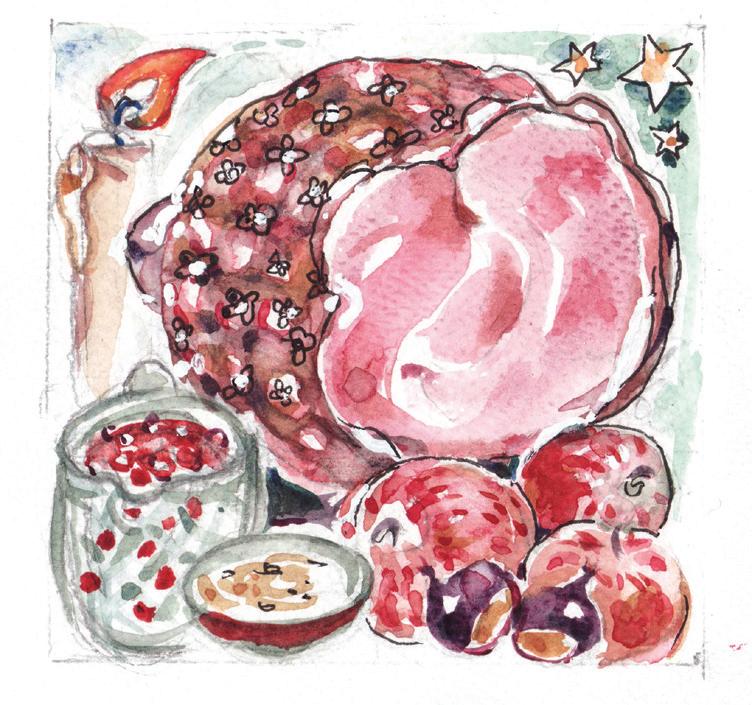
Miss Hartley provides detailed instructions for the process by which the household pig is converted into winter stores. The knowledge had almost vanished by the end of the 19th century after the industrial towns had emptied out the countryside. It was rediscovered out of necessity during the food shortages of the Great War. A lesson to us all.
Spiced honey-roast gammon
When salted, dried and (sometimes) smoked, a leg of pork is gammon. Once cooked, it’s ham. Simmered in a bath of spiced apple juice and glazed with honey, it’s fit for a feast. Enough for 4-6 (with leftovers).
About 2kg smoked or unsmoked gammon joint
1 litre apple juice or dry cider
½ tsp peppercorns
½ bay leaves
1 heaped tbsp coriander seeds
1 heaped tbsp fennel seeds
1 tbsp cardamom seeds
4-5 tbsps clear honey
12 whole cloves
Place the gammon joint in a roomy pot, add enough cold water to cover, bring to the boil, drain out the water, add the apple juice or cider, peppercorns and bay leaf, and top up with enough fresh water to submerge the meat completely.
Bring to the boil, turn down the heat and simmer for 1½ to 2 hours.
Remove from the heat and leave to cool in the cooking broth – overnight, if possible. Drain (save the broth, if it’s not too salty, for a post-festive pea soup).
Preheat the oven to 425°F/220°C/Gas 7. Pound together the remaining spices (except the cloves) and stir into the honey. Skin the gammon, leaving a layer of fat and saving the rind to fortify a bean pot. Score the fat in diamonds and spread with the spiced honey. Dot the diamonds with cloves. Bake for 10-15 minutes, basting once or twice, till the crust is golden and glazed.
Serve with baked apples stuffed with raisins and cinnamon, Brussels sprouts tossed in butter with ready-cooked chestnuts, shredded red cabbage cooked with a little vinegar and brown sugar, and a creamy potato gratin accompanied with fresh horseradish grated into cream and a jug of warm Cumberland sauce.
Sweet and sharp, fragrant with citrus zest and a slug or port, this is the most delicious of English sauces. Serves 4-6.
Zest and juice of 1 orange
Zest and juice of 1 lemon 4 cloves
1 short stick cinnamon
4 tbsps red currant jelly
A thimbleful of port
Matchstick the zests as finely as you can. Cook with the cloves and cinnamon for 5 minutes in a splash of water. When the zest is tender, remove the cinnamon and cloves and stir in the jelly and port. Reheat, stirring, till the jelly has melted. Serve warm.
Londoners are loyal to their compass points. Anyone born and brought up in north London is likely to live, drink and dine in north London. We all converge on the West End, but few north Londoners will head into south or west London, and vice versa. It’s not just about the length of the journey: the peoples of the four zones have different attitudes and expectations.
We are cats; we have our territories in which we prowl, preen and hunt, and are very aware of their boundaries.
Yet, as a west Londoner, working in the West End, I have found myself hunting further eastwards. I have been crossing the West End’s invisible boundary of Kingsway into … EC1. Clerkenwell and Smithfield have opened their doors to me and there’s even talk of my being granted regular dining rights, as long as I cross back into the west by 11pm. Soho continually evolves but, for all its architectural glory, Covent Garden really is for tourists.
Yet, when you cross into EC1, you’re at once back in a London recognisable to a 19th-century chimney sweep. Perhaps this aura of rough urbanity stems from Smithfield, London’s only surviving medieval food market. There was and will be blood. Who better to tap into this rich seam of produce than the Italians, who poured into Clerkenwell in the 19th century, as The Oldie’s Town Mouse writes in this issue? Good cooking followed.
EC1 could easily win Gastronomic Postcode of the Year. St John, with its noseto-tail menu, would be its fulcrum and Sessions Arts Club, Brutto, Bleeding Heart Bistro, the Jerusalem (renamed ‘Holy’) Tavern and Club Gascon are all glories.
I recently returned to Moro, launched by Sam and Sam Clark 25 years ago in fizzing Exmouth Market. Their pork and beef dishes are unbeatable. Round the corner is La Petite Ferme, an old-school bistro with a delightfully innocent French menu with lots of small plates, including a great onion soup. I had the special: chicken in mushroom sauce with the very best frites
Twenty yards later, you arrive at the Quality Chop House, which opened as a ‘progressive working-class caterer’ in 1869, the year before Dickens died.
Since Charles Fontaine, the former head chef at the Ivy, took over from the Enrico family in 1990, the only workingclass memories are those glorious benches – which are listed.
Again, the meat is terrific but don’t overlook their ‘snacks’, especially the Mangalitza shoulder croquettes. Only in EC1 will you find a rare Hungarian pig breed nonchalantly slumped on a menu. And don’t miss their confit potatoes. Oh, and the cod’s roe. They do a three-course set lunch for £25. Of little use to our fellow diner, Ben SAS Rogue Heroes Macintyre, whose success means he will never need deny himself the à la carte again.
Another local French find is Le Café du Marché, a former storage house for St Barts, not 50 yards from the Charterhouse, one of many local delights.
My favourite restaurant design is bare brick walls and white tablecloths. I become convinced I’m eating somewhere really cheap on the Left Bank. I could have stayed there all afternoon.
So I had rillettes and the cassoulet and plenty of wine, while my two guests had fish. Where’s the fun in that? You can’t get the diners these days.
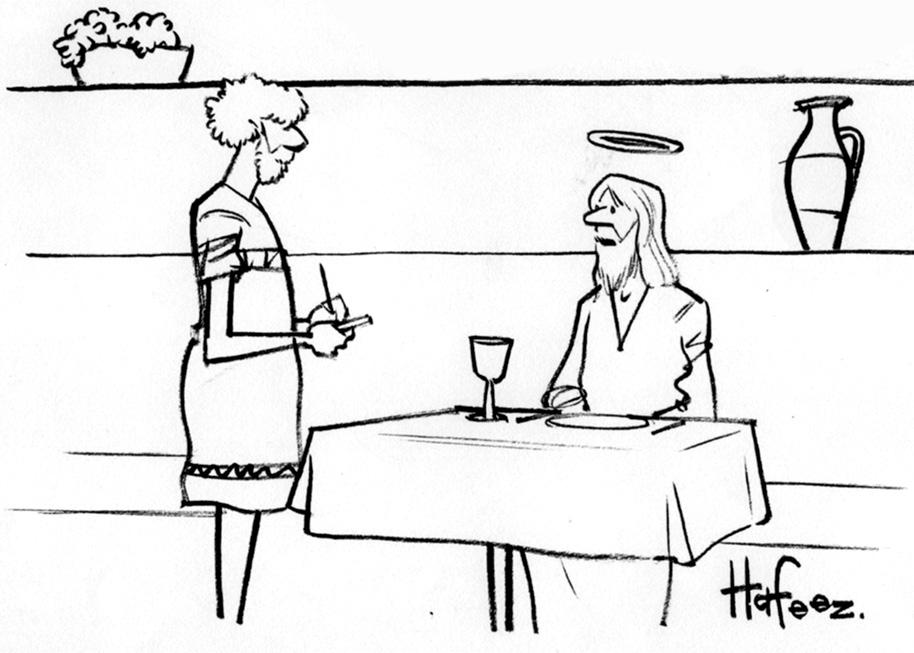 DRINK BILL KNOTT
DRINK BILL KNOTT
He may have been a brilliant poet, but I cannot agree with T S Eliot about April being the cruellest month.
For one thing, I rather like April. For another, January is definitely more miserable. To make matters even worse, a sizeable chunk of the population forswears alcohol for its duration.
I am not going to sing the praises of alcohol-free wines, beers and spirits –partly because I am yet to find any that I like. But there is no harm, after the excesses of the festive season, in a little moderation.
It is becoming difficult to find lowalcohol drinks. Wines are now routinely around 13.5% ABV. American-style IPAs are often more than 5%.
But the quest is not entirely fruitless. Take Small Beer, a London brewery that takes its name from the low-alcohol beer widely produced and consumed in Britain from medieval times onwards: usually less than 2% alcohol, it was safer to drink than water and was even served to children.
Production declined sharply in the
19th century, but Small Beer have revived the style. All their beers weigh in at less than 2.8%, and some – their pilsner-style lager, for instance – are as low as 2.1%. All are available in various formats –bottles, cans, kegs – from their website.
Waitrose stock a selection of 350ml bottles for £2.20. I especially like the bright, hoppy Session Pale. Those looking to shed some seasonal ballast should note that a 350ml bottle contains a mere 101 calories.
The Belgian tradition of making sweet-sour fruit beers – kriek (cherry), framboise (raspberry) and cassis (blackcurrant), for instance – also offers plenty of drinking pleasure for very little alcohol. The Lindeman’s versions hover around 3%: beermerchants.com stocks a wide range.
Finding low-alcohol wine is trickier. You might try Lambrusco Pruno Nero. It’s a fruity, frothy joy, perfect with cured meats (especially cotechino). It’s just 11% ABV (waitrose.com, £11.99). Or try Moscato d’Asti (once known as Asti Spumante), which is typically around 5% and is perfect with afternoon tea. Try Elio Perrone’s peachy Moscato d’Asti Sourgal 2021, a steal at £8.50 from thewinesociety.com.
Undoubtedly the greatest low-alcohol wine is Tokaji Essencia. It’s a wine so syrupy and viscous that it’s reluctant to leave the bottle, and best served from a spoon, not a glass. I was fortunate enough to sample it a few years ago, and it was extraordinary. It’s a riot of honey, dried fruits, grapefruit and nuts – incredibly sweet but still miraculously well balanced. I swear I could still taste it an hour later.
The 2007 version is a trifling 1.62% ABV, but the price less trifling. Farr Vintners (farrvintners.com) are offering it for £458.33 in bond … for a half-bottle.
But you do get a free spoon.
Join Bill Knott at Château Beychevelle next June See page 83
This month’s Oldie wine offer, in conjunction with DBM Wines, is a 12-bottle case. It comprises four bottles each of three wines, all of which contain gratifying amounts of alcohol: a fresh, zesty, great-value Spanish white; a splendid curiosity from Bordeaux; and a deliciously complex Malbec from the south of France. Or you can buy cases of each individual wine.
Celler de Capcanes, Sense Cap Blanc, DO Montsant 2021, offer price £9.99, case price £119.88

An old Oldie favourite: Garnacha Bianco and Macabeu from the Catalan hills combine to produce a focused, medium-bodied white.
Vin Orange ‘Bel a Ciao’, Olivier Cazenave et Château, IGP Atlantique, France 2021, offer price £13.50, case price £162.00


Quirky, delicious ‘orange’ wine: prolonged maceration with the grape skins lends it both character and colour.
Mont Rocher Malbec, Vieilles Vignes, IGP Pays d’Oc, France 2020, offer price £9.99, case price £119.88

Savoury, complex, spicy Malbec from the Languedoc; perfect with roast lamb.
Mixed case price £133.92 – a saving of £24.95 (including free delivery)
Mon-Fri, 9am-6pm; or email info@dbmwines.co.uk
Quote OLDIE to get your special price. Free delivery to UK mainland. For details visit www.dbmwines. co.uk/promo_OLD
NB Offer closes 31st January 2023.
‘What wine do you recommend I turn this water into?’
Fifty-seven years ago, an annual institution died.
Nobody realised it at the time, but on 25th December 1965 an English football league match was played on Christmas Day for the last ever time. After Blackpool beat Blackburn Rovers 4-2 at Bloomfield Road, only in Scotland did Yuletide fixtures remain, staggering on for another decade.
It was a rapid decline in tradition. In 1957, there had been a full schedule of 38 matches played on 25th December. Back then, Christmas didn’t last for several weeks as it does now; most workers were lucky to get two seasonal days off.
Football clubs realised that if they wanted to attract bumper crowds, they needed to play when everyone was at home. But by 1959, as public transport workers too were allowed to join the festive lay-off and buses and trains no longer ran on the 25th, there was just the one game remaining of the old full schedule: Blackpool’s.
And they did their best to maintain the convention on the Lancashire coast; there they kept at it, ploughing their lone furrow for a further six years. They carried on because going to Blackpool for Christmas was a thing people did. And the football club hoped that if they staged a game on Christmas Day, holidaymakers would clack through the turnstiles in numbers.
The last match was not a particularly festive event. There were no marching bands to celebrate it; no one asked the dame from the North Pier Theatre panto to come along and lead the crowd in carol-singing. The most visible Christmas element came in the welcome the players received when they ran out on to the pitch. Fans came along with their pockets stuffed with peel from the tangerine that was then a staple stocking-filler, which they threw in the vague direction of the players. Most of the peel just hit the back of the person in front.
The Christmas Day game at Blackpool had long been a Lancashire derby against Blackburn, with the reverse fixture played on Boxing Day at Ewood Park. In the years before games on the 25th were done away with, many clubs followed that pattern: play at your place on Christmas Day, then at theirs the day after.
The quick swap produced some of the oddest results in the history of the game. On Christmas Day 1926, Luton Town beat Millwall 6-0. The reverse fixture the following day produced a score of Millwall 7 Luton Town 0. On Christmas
Day 1933, Doncaster hammered Crewe 4-0. On Boxing Day, it was Crewe 4 Doncaster 0. That same year, the Christmas Day result was Halifax 4 Barrow 1. The Boxing Day score? Yes, you’ve guessed it: Barrow 5 Halifax 2.
It seemed that the players of the home side would go home immediately after the game and enjoy a robust Christmas dinner with their families, leaving them in no fit state to play the following day. For the travelling side, their delayed return meant there was less time for festivities. They were fully fit and up for it the next day, knowing they could have a drink or three on Boxing Day night.
As it happened, that last year of Christmas fixtures, when Blackpool headed to Blackburn on Boxing Day, their heads perhaps a little fuzzy, they found the game had been abandoned. The Ewood Park pitch was frozen solid. So the Rovers players didn’t have the chance to take advantage of hungover opponents.
The fixture was finally played in May, by which time Blackpool had consumed sufficient Alka-Seltzer to win 3-1. By 1966, it was all over: a perpetual Christmas truce was called on football matches. Still, that year, English fans had plenty else to celebrate.
Stephen Vizinczey’s bestselling novel In Praise of Older Women was published in 1965. It hasn’t spawned successor volumes praising older men. Understandably –and I’m not going to attempt one now.
But I do think we should praise older cars. Not because they performed better, lasted longer or were more reliable, safer, more comfortable or more economical than their descendants.
They rusted away within ten years, wouldn’t start on cold mornings, overheated at speed and needed new plugs and points every 3,000 miles – or an engine rebuild after 50,000.
How often now do your valves burn out or your ‘big ends’ go – remember that sickening knock on deceleration?
But ‘older cars’ now include those of recent decades – the internationally-agreed definition of a classic is one that’s at least 30 years old – and many are still in fine fettle.
The 1980s saw major improvements. Rustproofing, fuel injection, electronic ignition, effective braking, heating and cooling became standard, with ECUs (electronic control units) widespread from the mid-1990s.
Electronics, despite the rage and
bafflement they cause when they go wrong, are generally very reliable.
For the first decade of this century, those in mass-market cars remained reasonably straightforward and fixable.
They still are. The horror stories of untraceable electronic gremlins arise mostly from the complex electronics of contemporary cars. But a vehicle aged 15-20 years will have simpler electronics and, if looked after, will likely prove reliable.
And perhaps environmentally beneficial. The BBC’s John Humphrys worked out that he could drive his 1994 Volvo for another nine years before the environmental cost equalled that of a new car.
An outfit called loopagency.co.uk recently calculated that the UK’s 874,083 registered classics (pre-1992) are responsible for just 0.22 per cent of transport-sector emissions.
The annual emissions of one of these cars apparently equate to the carbon footprint of three lattes a day. Autotrader reckons that by 2027 there’ll be 15.4 million cars aged over 10 on our roads, up from 11.8 million last year.
Meanwhile, the number of drivers unable to afford new cars is increasing. Fortunately, there are plenty of reliable 10-15-year-olds to choose from.
The first thing to consider in buying older cars, unless you’re set on a particular model, is not brand but condition, condition, condition. A well-maintained example of a brand that comes low in the reliability charts is better than a poorly maintained allegedly unbreakable machine.
So check the service history and ask to see any repair bills. Go to the DVLA website and check the car’s MOT history – regular failures suggest neglect. Check whether it’s been an insurance write-off; they can be OK if properly repaired, but you need to know about it and accept that their value will always be discounted.
Check obvious things, such as tyres – will they need replacing within a year? If so, you want money off.
Japanese and Korean cars tend to be more reliable. Ignore the exotic outliers and go for the everyday – the Honda Jazz, Nissan Micra or whatever. Ditto Fords, Vauxhalls, bread-and-butter VWs and Fiats. Spares for everyday cars are usually cheaper and more available, while cars that cost more to buy new usually cost more to run throughout their lives. Don’t be put off by high mileage if the car has been properly looked after.
Be clear about what you want, decide your budget in advance and stick to it. Or don’t change at all – repairing the current car is nearly always less expensive than the cost to change.
It just doesn’t feel like it.
You might think that if two countries are at war, the fighting would always be pretty obvious.
This isn’t the case online. Plenty of online guerrilla warfare takes place, and virtual armies are being raised which don’t even have to cross borders to engage the enemy.
The key to this is, inevitably, the internet.
Online cyber wars are not new, but activity has stepped up since the Russians invaded Ukraine.
At their most visible, these attacks often use a technique called a Distributed Denial of Service (DDoS). This involves overloading a website with a huge flood of simultaneous requests to look at the
For my latest tips and free newsletter, go to www.askwebster.co.uk
Follow Father Christmas Google offer a tracker, with lots of games: santatracker.google.com. Or www.noradsanta.org/en/ for the American military version.
White Christmas www.askwebster.co.uk/whitechristmas
An annual treat – Father Christmas and his reindeer singing the only version of White Christmas worth listening to.
I will happily try to solve your basic computer and internet problems. Go to www.askwebster.co.uk or email me at webster@theoldie.co.uk
same page. All websites have this Achilles heel. They can handle only a certain number of viewers at any one time. If that is exceeded, the website collapses or grinds to a halt.
It’s a blunt but effective weapon. There are more subtle means of attack (spyware, viruses and the like). But the DDoS is one of the easiest to arrange, provided you can simultaneously mobilise thousands of computers all over the internet – which is not as hard as you might think.
In Russia, there is an online group called Killnet, which co-ordinates pro-Russian computer-users and seems to have well over 100,000 members.
It doesn’t claim Russian government support, but it certainly supports the Russian government. It arranges and encourages attacks on Ukrainian websites, and those of any other country that it deems to be working with Ukraine or against Russia.
In June 2022, it declared ‘war’ on ten nations (including Britain). Since then, it has been actively supporting attacking the websites of governments and key business sectors in each of them.
In June, Lithuania blocked coal and metal being moved through the country to Russia. Ten days later, more than 100 Lithuanian government websites were subjected to a DDoS, co-ordinated by Killnet.
Norway has reported similar attacks. All NATO countries have probably had their fair share. We know this because Killnet boasts about its efforts and has raised what they impertinently call a
‘Legion’ named the Cyber Special Forces RF (Russian Federation). It is made up of thousands of volunteers who perform DDoS attacks on demand and are provided with the knowhow by Killnet.
It would be naïve to assume there is no similar activity taking place in the other direction. The IT Army of Ukraine was formed in February. It is perhaps the world’s first official governmentsupported band of volunteers who operate in much the same way as Killnet but with Russian targets in their sights.
I find this invisible combat unsettling. Give me an enemy I can see, please.
I should not despair. Protection from DDoS attacks is big business, as you might imagine, and is becoming ever more sophisticated.
What’s more, large industrial and public-sector organisations have finally begun applying enough money to their cyber defences. It always used to be a bit of an afterthought, but is now central to all planning. As it should be.
It may also reassure you to learn that all three military services (Royal Navy, Army and RAF), together with services from other countries, take part in an annual exercise to test their skills in stopping potential cyber attacks on the UK, and reacting to those they can’t stop. NATO has run similar training schemes for years.
Surely it can be only a matter of time before there is a regiment devoted to this kind of thing – perhaps His Majesty’s Cyber Guards, known colloquially as the King’s Keyboards.
They may be our first line of defence.
People’s attitudes to money – whether spending, saving or borrowing – are as diverse as human nature.
We notice people being profligate or stingy, charitable or greedy. We readily spot gambling addicts, spendthrifts and those in denial about out-of-control debt. It’s harder to recognise excessive behaviour in ourselves, yet anyone who has a distorted attitude to finance has a money disorder. They probably just don’t realise it.
This includes compulsive shoppers who spend money they don’t have, and people who use money to control others; those who lie about how much they have spent, or keep debts or savings secret from a partner. It extends to people who already have more than enough for a comfortable life but are never satisfied because they cannot explain how much is enough and remain workaholics who keep on making money.
Another money disorder older people might identify with is feeling guilty about the amount of money they have. Houseprice inflation has made many of us immoderately rich.
This is known as money dysmorphia – a distorted view of how well-off you are. You are financially comfortable, but avoid buying things you can afford because you believe you still need to be careful – or feel you don’t deserve them.
You can identify this in yourself if you don’t buy things you want, even though the money is there. Money dysmorphia can be caused by insecurity and anxiety or stem from low self-esteem. You were brought up to save for a rainy day and are still waiting for the downpour to dip into your savings. Friends might regard you as frugal, penny-pinching or miserly, but you aren’t. You just don’t like being wasteful – and you worry you might need your savings in future.
Any money concerns are exacerbated by today’s confusing and costly economic situation clashing with a traditionally expensive time of year. Right now, how can you even start to decide what to do about money?
Should you fix your mortgage rate, commit to fixed-term savings, come out of the stock market or buy foreign currency? Should you delay retirement or, if you have stopped working, go back?
Overthinking will lead to another money disorder – financial paralysis, a known condition affecting any decision you have to take involving spending, saving or borrowing, which is heightened in these precarious times.
People with financial paralysis become obsessed with and then
overwhelmed by minor details. When it comes to buying specific products, there is now simply too much choice. They try to come to a correct conclusion, worry that they will make a wrong decision and end up doing nothing.
The best approach is to accept you will never make the perfect decision but you can still make a good one.
Money disorders, of whatever type,
often stem from childhood experiences. They are self-destructive and affect your personal relationships. You do not have a money disorder if you have a savings nest egg for emergencies, keep debt to a level that will be manageable even when interest rates rise, and keep a budget that allows you to spend money on yourself.
Then you should go ahead and spend the kids’ inheritance.


Bill Knott writes: ‘My first real introduction to the wines and cuisine of Provence was in the mid-1990s from Keith Floyd, who was living near Avignon and had once owned a restaurant in L’Isle-sur-la-Sorgue. Floyd loved nothing better than a long lunch on the shady terrasse of a bistro, and I look forward to following in his footsteps once again.’

Bill has already chosen Mr Floyd’s favourite restaurants. The holiday will offer a variety of markets, wineries, sites and museums but we will mainly be in search of pleasure. We will stay at Ménerbes, at the Domaine de la Suzonière (www.location-avec-piscine-provence.com) which we will have entirely to ourselves, complete with cook and swimming pool. There will be plenty of time to relax at the villa, in the afternoons, looking up at the mountains.
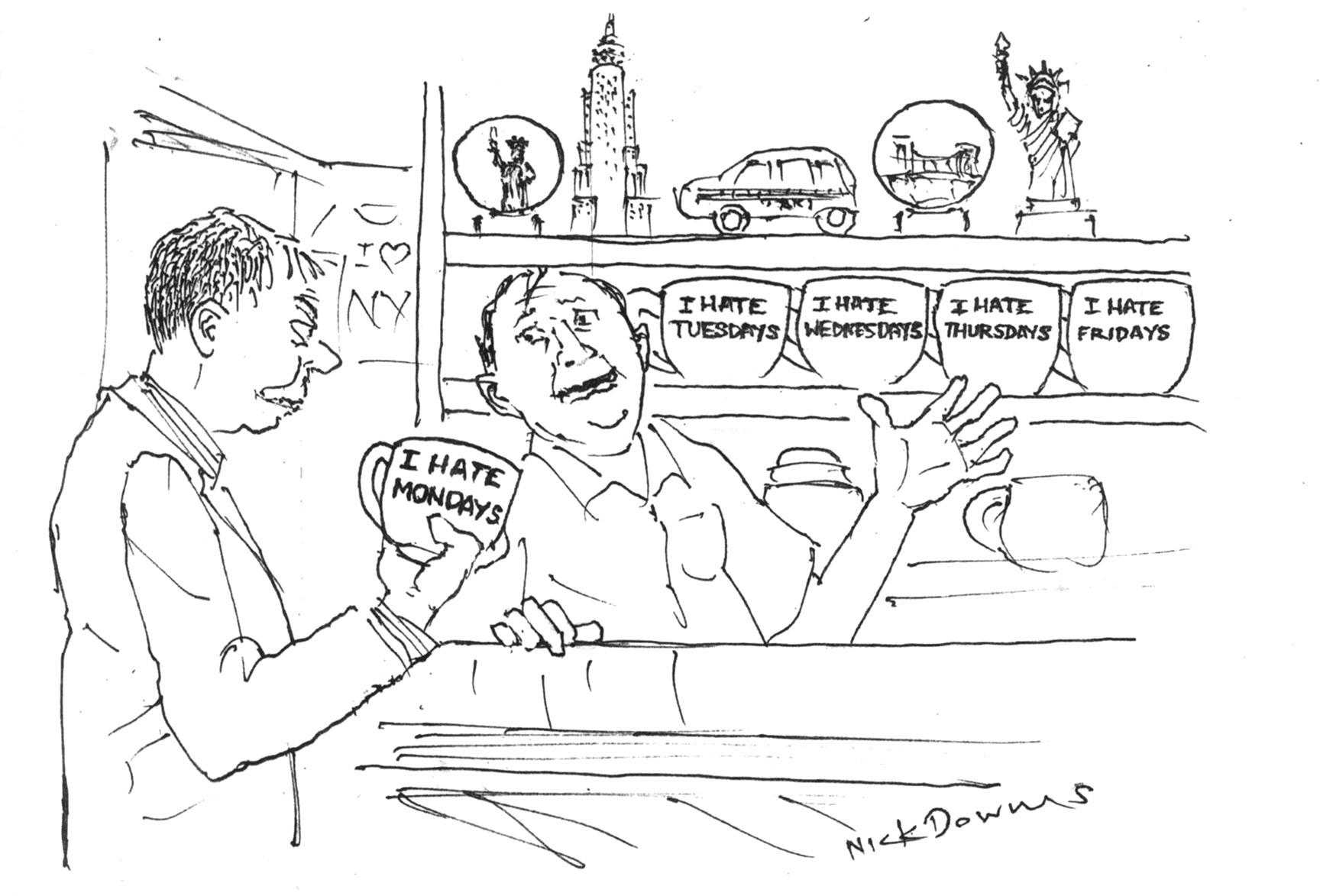
Saturday 2nd September Depart Gatwick on EasyJet at 1335; arrive at Marseilles at 1630. Transfer to the domaine in time for drinks and dinner.
Sunday 3rd September – L’Isle Sur la Sorgue Antiques market. Lunch at Le Vivier (Michelin star, willows by the river…).
Monday 4th September – Lacoste and Bonnieux Morning tour of the garden of La Louve, which has been described as ‘probably the best garden in France’. Lunch at L’Arôme. Earlyevening wine-tasting at Château la Canorgue.
HOW TO BOOK: Please email Katherine at reservations@theoldie.co.uk or call 01225 427311. Price per person: £2,750 which includes all meals, all drinks at the house and great wine with meals, transport and entrances. You need to book and pay for your own flights.
Single supplement: £200. A non-refundable deposit of £750 will be required, with the full balance due on 1st June 2023.
Tuesday 5th September –Gigondas and Vacqueyras Morning wine-tasting at Maison Gabriel Meffre in nearby Gigondas; lunch at Café de Cours.
Wednesday 6th September – Arles Guided tour including a visit to Van Gogh’s home and the Roman amphitheatre; lunch at L’Escaladou for the very best fish soup.
Thursday 7th September – Colorado Provençal Walk through the surreal ochre country, followed by lunch at Le Chapeau Rouge at pretty Simiane-la-Rotonde. Dinner at Café du Progrès, in Ménerbes, as featured in A Year in Provence
Friday 8th September – quiet day at the domaine
Optional morning visit to the nearby Musée Tire-Bouchon and Musée de Lavande in Gordes.
Saturday 9th September Depart Marseilles airport at 1130; arrive Gatwick at 1220.
‘Maybe you'd like the complete set’

You ruffled black blossom, You glossy dark wind.
Your sort of gorgeousness, Dark and lustrous And skinny repulsive And poppy-glossy, Is the gorgeousness that evokes my most puzzled admiration.
D H Lawrence, from Turkey-Cock
Bird of the Month is confined to wild birds in Britain. Celebrating Christmas with the turkey is, we hope, an acceptable exception.
In North America, its native land, the wild turkey (Meleagris gallopavo) thrives. Unlike its 40 domestic hybrids, it is an agile flyer in its natural habitat of woods and wooded grassland. It needs trees for roosting, which for safety it does communally.
Habitat loss reduced numbers to 30,000 by the 1930s. Conservation has reintroduced it to Canada and it now flourishes in the previously alien western states of the USA. A population of seven million means it can be legally hunted in every state of the Union, except Alaska.
In England, George II tried to introduce turkeys as a game bird in Richmond Park, but they were poached to extinction. I remember talk of introduction in postwar Berwickshire.
Benjamin Franklin lamented the choice of the bald eagle as the USA’s emblem. It was a cowardly scavenger, whereas the turkey, ‘a true, original Native of America’, was ‘a Bird of Courage and would not hesitate to attack a Grenadier of the British Guards’.
It was revered and domesticated by the continent’s first tribal settlers. Thanksgiving – an official USA holiday since 1863 – dates back to 1621, when the Mayflower pilgrims celebrated their first harvest with a three-day feast, shared with the local Wampanoag tribe. Turkey was its central feature.
Tribes had their own names for the bird. The English name derives from
the trade in Mesoamerican turkeys from Mexico via Spain to the Levant – hence Turkey. In Scotland, they are bubbly-jocks.
William Strickland (d 1598) is credited with first bringing one to a British table. Granted a coat of arms in 1550, he chose as his crest ‘a turkey cock in its pride proper’. A wooden-lectern turkey cock in St Andrew’s Church, Boynton, Yorkshire, is a memorial to a 20th-century Strickland of Boynton Hall.
The tradition of the Christmas turkey was popular by the 1720s. Some 250,000 were annually shepherded from Norfolk to London in manageable flocks, stopping at feeding stations on the way. In 2021, 11.3 million turkeys were slaughtered in the UK, ten million for Christmas.
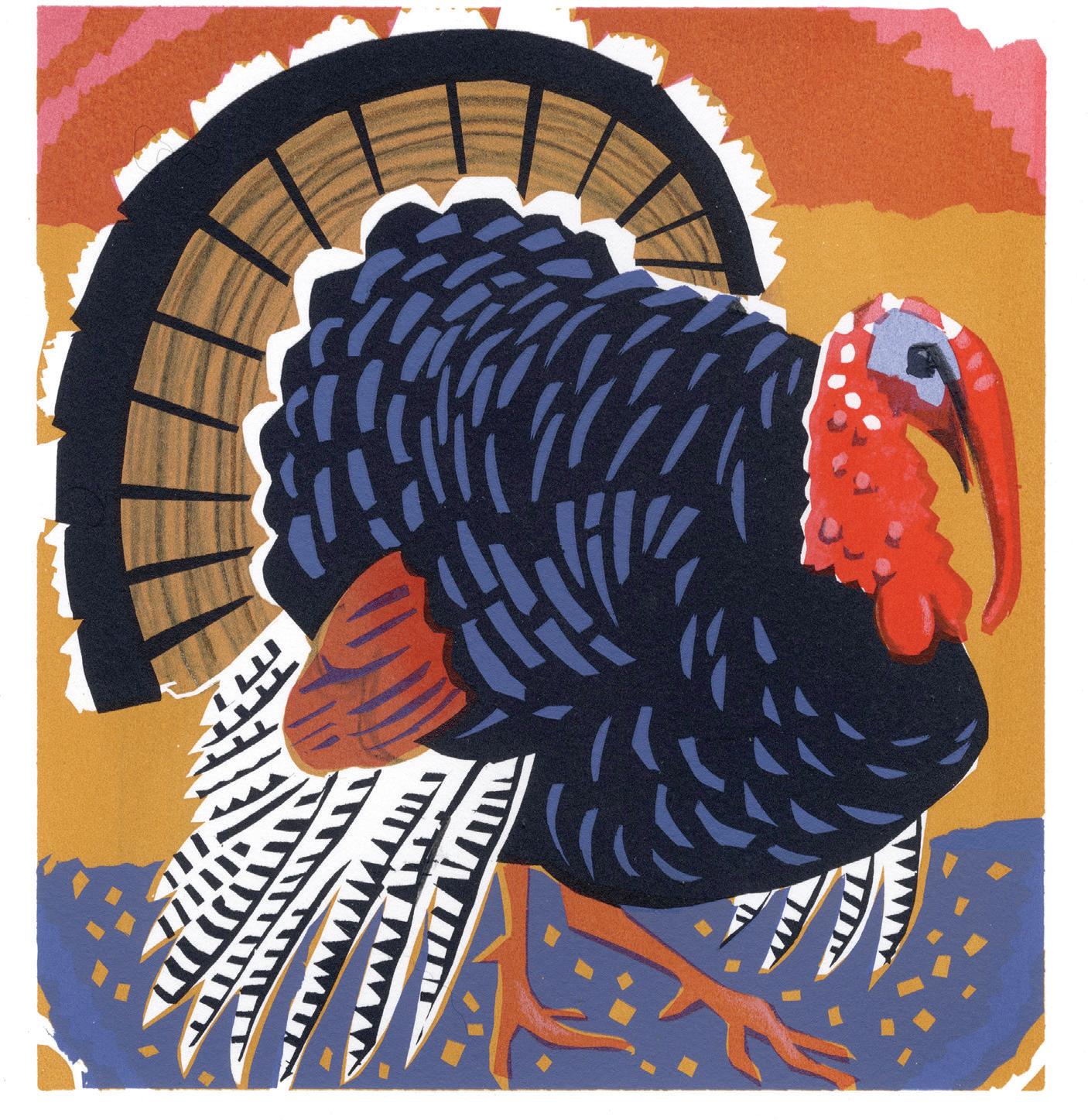
Farmer Kim Courtauld is known for
excellent turkeys. He says they are more closely related to the pheasant than to the chicken. Like a dead pheasant, they should be hung for the best flavour. He never refrigerates and, in mild Argyll, kills no later than 15th December.
The narrow-breasted Norfolk Black is the most pheasant-like turkey farmed in Britain. On his Argyll estate, Courtauld farms broad-breasted whites: Wild White, Attleborough Small White and Holly Berry 91.
He says, ‘Turkeys are inquisitive and intelligent but also laid-back and friendly and will make good pets if people want them for that.’
The 2023 Oldie Bird of the Month calendar is available from carryakroyd.co.uk

Iwonder what Paddy Leigh Fermor would have made of it.
The doyen of travel writers, a dedicated pedestrian who trudged across Europe from the Hook of Holland to Constantinople and always embraced St Augustine’s creed of solvitur ambulando – it is solved by walking – might not have had much truck with a 6,000-mile classic car tour to the remoter regions of Turkey.
Here was a Hellenophile for whom Constantinople – never Istanbul – was his true north. Visiting him at his home in the Peloponnese in 2007, I asked him whether he shared the Greek regret at the loss of Constantinople to the Ottomans in 1453.
‘Only in a romantic sense,’ he replied. ‘You can’t just forget 2,500 years of history and call it Istanbul. I deplore the Turkish role in Eastern Europe, but of course you can’t blame them. It would be like blaming the laws of hydrostatics for
flood damage. And I’ve liked every Turk I’ve ever met.’
But, then again, even if Turkey was never really his thing, perhaps he would have been tickled by the idea of a madcap motor across the continent and far beyond in his honour – and partly in his footsteps.
If the sun-parched days of driving were not to his liking, the long, bibulous evenings in the hotels, bars and restaurants of Europe and Turkey would surely have been right up his strasse.
And so it was that, earlier this autumn, eight Bristols, mostly from the 1950s, and one Bristol-engined AC Greyhound (immediately nicknamed the A C Grayling by my wife and chief navigator), set out on the road to Istanbul and our Ultima Thule – Gaziantep on the Syrian border.
The journey was the brainchild of Geoffrey and Hilary Herdman, Leigh Fermor fans, intrepid travellers
and long-time owners of 10 DPG, a Bristol 405 drophead which is surely the best-travelled Bristol on the planet.
What could possibly go wrong? The answer was everything – and ultimately nothing. What is an adventure without the possibility of ruin? We could have attempted this journey in a modern VW Golf – but what would have been the point?
Bristols are superb, hand-built cars, beautifully put together by highly skilled aeronautical engineers retained after the war.
Their cooling systems, however, are of their time. In my 13 years of ownership, Frieda – my 1956 405 – has often had to pull over onto the hard shoulder, or be pushed off the road altogether.
Onwards to Istanbul, a frantic flash down French, Italian and Greek motorways. Where Paddy trudged, we charged. He might have managed 20 to 30 miles a day. We had to knock off 200,

300 and, a couple of times, more than 400, in a blur of high-speed, high-decibel motoring under a persistent threat of overheating and breakdown. The footloose, footsore, 18-year-old Paddy took a blissful, life-changing 13 months to reach Istanbul. We took five days.
Onwards again towards Eskişehir, and Byzantine Dorylaeum, then south-east to Göreme, in the heart of Cappadocia – a world of fairy chimneys, cave hotels and seething tourist crowds.
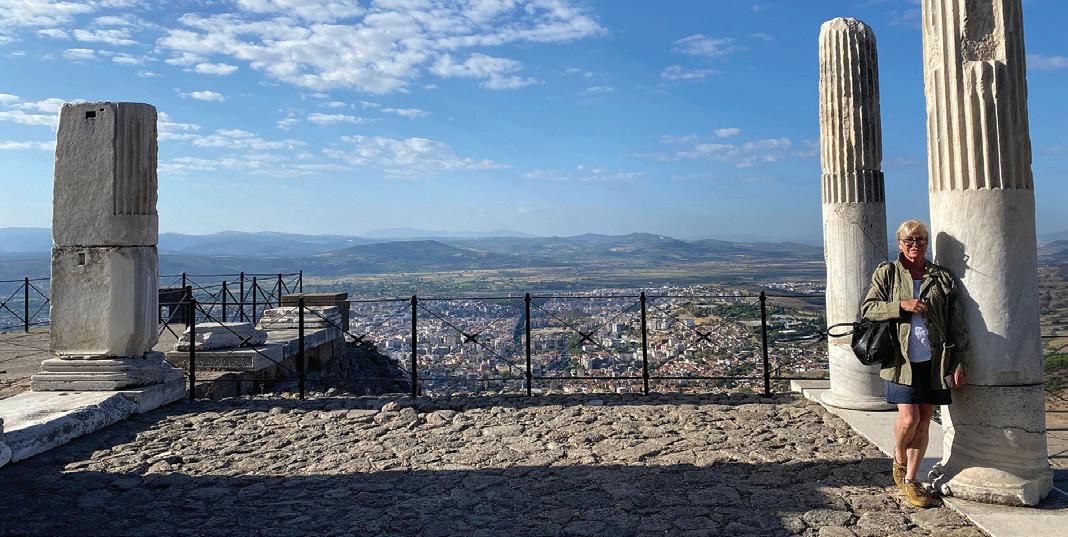
We hammered the roads by day and, in homage to Paddy, the wine by night. Days of grey, molten ribbons pasted across a sun-frazzled landscape. Days on tenterhooks, as we watched the oil and water temperature gauges rise pitilessly towards motoring nemesis. Neckshattering days climbing steep Turkish passes, dreading the encounter with a slow-moving juggernaut which would force us into first gear, overheating, loss of power and breakdown.
Sometimes, as at Gaziantep, we managed some cultural sightseeing, immersing ourselves in the glorious Zeugma Mosaic Museum, the world’s largest.
At other times, technical challenges –our only fan packing up at 37°C, for instance – meant that stopping off to see the sublime Roman theatre at Aspendos on the Antalya coast was not an option.
On to Bodrum, ancient Halicarnassus, where we paid our respects to the home-town boy Herodotus, before whizzing north to Ephesus, Pergamon and Troy. Now we were homeward bound.
Mani and Roumeli, Paddy’s books on southern and northern Greece respectively, were hailed by the FT as ‘two of the best travel books of the century’.
In the latter, he wrote admiringly of the Cretan quality of leventeia: ‘It is universal zest for life, the love of living dangerously and a readiness for anything.’
These words rang in our ears as we tore across Europe’s motorways at up to 80mph, steering wheel shaking disconcertingly, slightly regretting Frieda’s lack of seat belts and wing mirrors.
In The Broken Road, the posthumously published final volume in Paddy’s Great Trudge trilogy, he wrote of Bulgarians as a ‘rough-hewn and tough’ people. The description does justice to their abominable pot-holed roads, too.
After blasting through Bulgaria in a chassis-testing frenzy, we hurtled through Romania in a day.
Paddy sashayed across it in months, throwing himself into high-society
Bucharest – not to mention the female population of the countryside – con brio, with ‘the zest of a barbarian padding wild-eyed with longing for luxury and corruption through the palaces and fountained courtyards of Diocletian, or of a Parthian in Antioch’.
In Sibiu, former capital of enchanted Transylvania, we made our pedestrian pilgrimage to the august Imparatul Romanilor Hotel, where Paddy is said to have stayed. Disinterring fact from fiction in his travel writing is never easy and probably inadvisable. Best to enjoy the prose and not worry about the details.
We roared on north-west, Frieda in fine form now in cooler climes.
Almost a century earlier, Paddy’s fortunes had also taken a turn for the better on his arrival in the Hungarian capital after a night or two sleeping rough – and dew-sodden – with swineherds.
‘When a mid-morning sunbeam prised one eyelid open a few days later, I couldn’t think where I was. An aroma of coffee and croissants was afloat under a vaulted ceiling; furniture gleamed with beeswax and elbow-grease; books ascended in hundreds, and across the arms of a chair embroidered with a blue rampant lion with a forked tail and a scarlet tongue, a dinner jacket was untidily thrown… Then, suddenly, illumination came. I was in Budapest.’
So were we, for an evening. While Paddy had been ‘back among barons’, ligging his way around the city in black-tie splendour, we lorded it up in the Budapest Hilton, perched high in Buda alongside the 18th-century castle.

My cousin, who has lived here for
20 years, took us to Café Kör, a homespun restaurant, where we did all we could with a barrage of Hungarian rosé.
The evening reminded me of Paddy’s lifelong fondness for retsina: ‘One of its secrets is drinking it with unstinted abundance. It seems to have an alliance with the air in the promotion of wellbeing. Many people think that it bestows the gift of bodily health as well; a belief I accept at once without further scrutiny.’
In Austria, an unexpected Nazi interlude. Paddy crossed Europe in the winter of 1933/4, several years before the war, but early enough to detect – in Munich’s Hofbräuhaus, seething with beer-swilling, Jew-hating Storm Trooper Brownshirts – impending violence (he was also writing up his travels decades later). We diverted to Mauthausen, one of the most notorious concentration camps, to witness some of the legacy of that savagery. At least 90,000 were killed behind these high walls.
In Heidelberg, all roads led inevitably to Zum Roten Ochsen (the Red Ox), the city’s most venerable inn, still owned by the same family who welcomed the shivering Paddy through its doors, into ‘an entrancing haven of oak beams and carving and alcoves and changing floor levels’ in the last days of 1933.
‘This was the moment I longed for every day. Settling at a heavy inn-table, thawing and tingling, with wine, bread, and cheese handy and my papers, books and diary all laid out; writing up the day’s doings, hunting for words in the dictionary, drawing, struggling with verses, or merely subsiding in a vacuous and contented trance while the snow thawed off my boots.’
A couple of days later, heads still reverberating with Frieda’s six-cylinder boom, we returned home to Walsingham, a place of pilgrimage for a thousand years, our adventure over.
Paddy Leigh Fermor, and Bristol motor cars, we salute you.
Justin Marozzi is author of The Man Who Invented History: Travels with Herodotus (John Murray)
The architects Humphry Repton, John Nash and William Porden were three of the greats who drew up brilliant plans for the Prince of Wales’s oriental schemes in Brighton.
Some were built, others were not and many were neither acknowledged nor paid for. After both Henry Holland and James Wyatt had also attempted to design a palace for the prince, it was Nash (1752-1835) who won the plum prize of the Pavilion. Porden (1755-1822) built his stables, but poor old Repton (1752-1818) got no commissions at all, despite his exquisitely exotic efforts.
Repton had produced a folio of 12 watercolours, including schemes for transforming the prince’s Marine Pavilion into a Mughal palace. It was in fact so similar to Nash’s that it is difficult to judge one superior to the other.
His watercolours, as was Repton’s habit, were displayed in one of his leatherbound Red Books. ‘Before’ paintings of scenes as he first saw them were painted on paper flaps which, when lifted, would reveal how things would look after he had carried out his plans.
What cries of ‘Abracadabra!’ would have greeted the sight of Repton’s proposals for an aviary and a pheasantry as part of an exotic garden walk.
An ornate Flower Passage would enable a royal progress to be made from the Pavilion through the gardens to the stables in the worst of weathers. Arched and wrapped with blooms and trellises, the glazed walls were to be decorated with arches in various scalloped Moorish styles, giving a particularly festive air.
With the occasional dome-topped tower and small pavilion, as well as a 50ft-long hothouse and an orangery that opened up as a draped ‘chiosk’ in the summer, Repton’s most extreme dreams of the Picturesque could be realised.
Best and most exotic of all were the Indian aviary and pheasantry that formed part of it.
To cap it all, it was suggested that
there should be an orchestra perpetually playing as the prince and his party progressed along their way. According to Repton, this was an essential part of the state and pleasure of such a garden.
Both the pheasantry and the aviary were inspired by, if not directly copied from, Thomas and William Daniell’s six volumes of aquatints, Oriental Scenery, published between 1755 and 1808.
The uncle and nephew, aged 36 and 16, went to Calcutta in 1785. For eight years, they produced what would, on their return to Britain, become electrifyingly influential watercolours and oil paintings of India’s architecture. They weren’t strictly accurate. Their Taj Mahal of 1791 has no living being in sight for miles around, save for three men and two elephants.
Each volume contained 24 aquatints of Indian scenes, hand-coloured to look
like the watercolour originals. The technique was new and complex. William Daniell’s experimentations and success made him one of the earliest pioneers of aquatint.
Repton’s aviary in Brighton was inspired by the Daniells’ watercolour of one of the Hindu temples at Bindrabund on the River Yamuna.

It was a somewhat risky allusion to the prince in Brighton. Legend has it that Krishna frolicked with milkmaids here and stole their clothes while they were bathing.
As for the pheasantry, its roofed lantern was somewhat plain. But it drew inspiration elsewhere from the exotic Daniell watercolour View of the Palace at the Fort of Allahabad. The lattice works in both are identical.
The prince was delighted with the plans: ‘Mr Repton, I consider the whole of this work as perfect, and will have every part of it carried into immediate execution; not a little shall be altered.’
He even paid the bill – but, nine years later, the folio was discovered to be still at the engravers. They had never been looked at again – and not a brick was laid.
Krishna frolicked with milkmaids here and stole their clothes while they were bathing
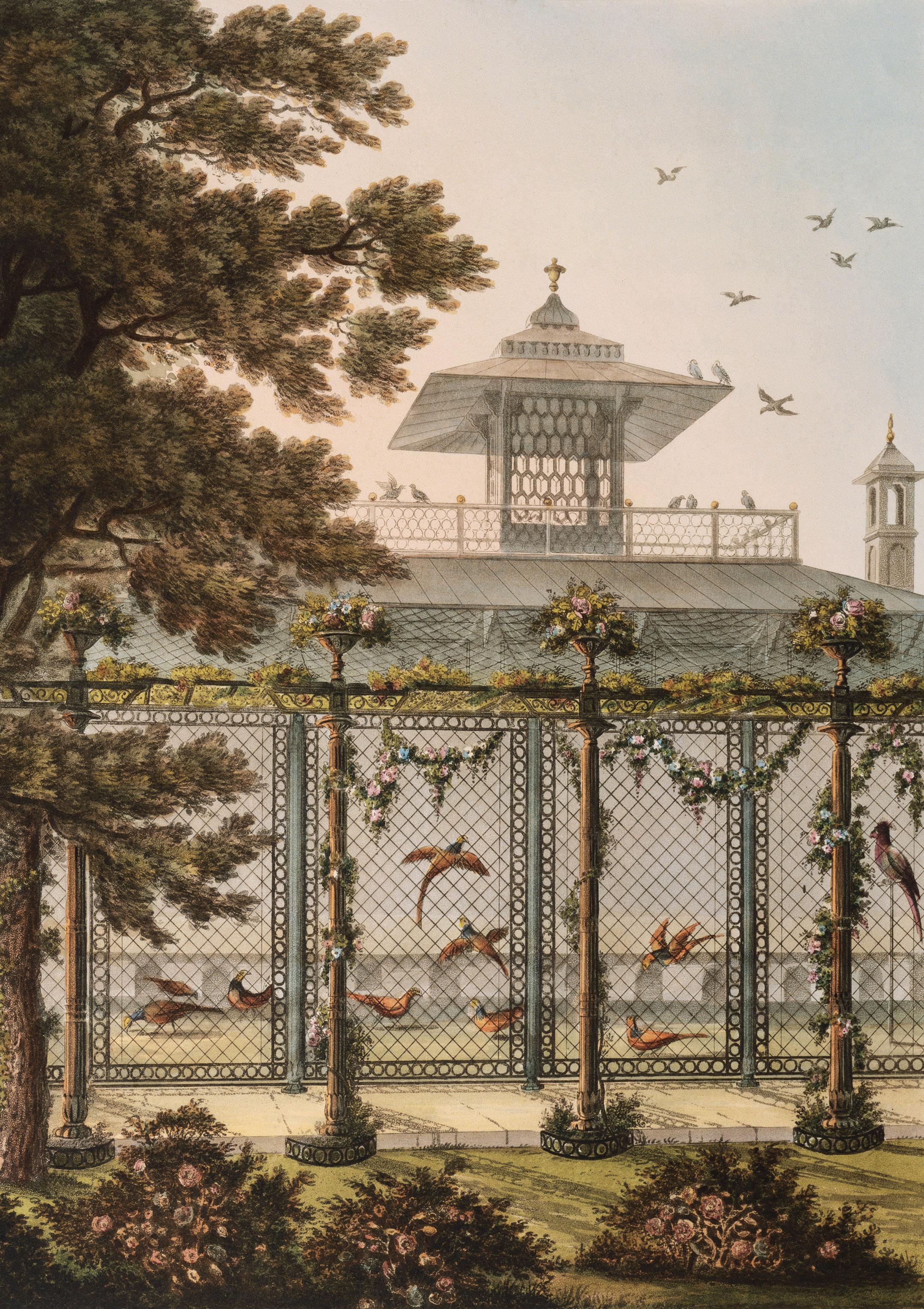

Working with the darling bear from darkest Peru was a joy – until he hit the orange stuff, says co-star Hugh Bonneville

Paddington is our Oldie of the Year for 2022. What’s it like acting opposite Paddington – presumably you don’t actually see him?
Oh, I saw him – absolutely. And I get very cross with people who claim that he doesn’t exist. It’s like saying Father Christmas doesn’t exist.
It’s true that sometimes he didn’t come out of his trailer – if he had a headache brought on by having hit the marmalade a bit hard the night before.
So sometimes an actress who was the same height as Paddington would walk through his scenes, and sometimes a stick with a bit of sticky tape at the height of his eyes would have to suffice.
But by lunchtime it was usually the bear from darkest Peru gracing us with his presence.
Where was Paddington filmed?
Largely at Leavesden Studios and at Elstree; also on location in London.
Why is Paddington so high in the country’s affections, particularly since the Queen’s death?
Paddington first emerged in the late ’50s and has been a staple of British childhoods ever since. Her late Majesty bought into the joke of another national treasure coming to have tea with her, and the charm of the sketch gained poignancy with her passing.
Anything
The universal travel plug is something I shouldn’t leave home without, but always do.
Returning to the UK from filming in Ireland recently, I waited longer at Heathrow’s baggage reclaim than I had spent in the air. So in publicising my book, I’ve resolved it’s carry-on only: one suit throughout the tour, plus a selection of shirts, bras and knickers.
My wife Lulu has a men’s-shirt business, Indigo Island, and she does photoshoots in Ibiza. It’s beautiful and peaceful and
Lulu’s convinced the ley lines help us to sleep better. I think it’s the rosé.
Camping in France. My parents had an enormous canvas tent and they lugged it around on top of an old Volvo. I remember having an afternoon nap and a wasp planting itself in my ear and me screaming and a guy in a tent two doors down coming to the rescue. He turned out to be a Belgian physician who had industrial quantities of antihistamines. He and his family became lifelong friends.
I always enjoyed acting, from childhood, but it was never something I considered as a profession until I got to university. I thought I would just give it a couple of years, see whether I could get my Equity card and otherwise get a proper job. That was 35 years ago and I’m still waiting for the tap on the shoulder.
My brother and sister were both very good amateurs. I used to love watching them in their school plays, and my dad was a wonderful piano player. So I guess my interest was nurtured rather than genetic.
I did plays in our echoey school hall and then joined the National Youth Theatre when I was 16. Spending the next few
summers putting on shows with kids from all over the country was a meltingpot of excitement for me. And I did a lot of acting at Cambridge.
Do you prefer theatre or TV and film?
The collaborative experience and the bonds you make in a theatre rehearsal room are usually longer-lasting, and the live experience is infinitely preferable. Film sets are about hurry up and wait. Then again, the pay’s better.
How was it being in Downton for all those years? Had you had enough?
Julian Fellowes kept the characters alive and the stories fizzing for six seasons, but we all agreed the time had come to end the television version. The two movies were the icing on the cake.
What’s the most exotic location you’ve filmed in?
I love being paid to go abroad. Ouarzazate in the desert in the south of Morocco was fairly exotic, when we were filming a TV version of Ben-Hur, and the Drakensberg mountains in South Africa for Man to Man
What’s the worst place you’ve filmed in? There was a period in the ’90s and the 2000s when the Isle of Man had generous tax breaks. So every rotten cowshed was turned into a film studio.
Where did you go on your honeymoon? We went to Venice for four days in November. The sky was piercing blue –the most beautiful weather.
Do you have a go at the local language? I can ask the whereabouts of a post office in France and I can understand where the post office is in Germany.
What are your top travelling tips?
Arriving in a country you’ve never visited before, be prepared to look a nitwit and be ripped off on your first day.
Playing Under the Piano by Hugh Bonneville (Abacus) is out now




Across
1 Cast the girl lead in drama (4)
3 One supporting struggle of American GP in trouble (10)
9 Measure part of mountain chain (4)
10 Homeless forever? Without doubt (10) 11 Swimmer using 1ac. to hold a party (7) 13 Realize that is five in pain (7) 14 Hesitates, losing cover with natural substitute (11) 18 All but finished - her team lost badly (6,5)
21 Worker’s bitter remedy? (7)
22 Pirate broadcast by my son (7)
23 Dropped off chaps bound to be heard? (4,6)
24 PM needing answer for people in central America (4)
25 Rarely do so badly as ahead of the game (5,5)
26 Girls gathering there’s drink (4)
1 Sort of person unhappy about family when losing protection? (8)
2 Key article on recent increase (8)
4 Head off a review involving leader of rebels (5)
5 Prudish stars together for elections (9)
6 I will support Hibernian pet! (5,6)
7 Relations in bits with new leader (6)
8 What go with flow does for a poet? (6)
12 Office colleague’s first blue giving excess of paperwork (11)
15 Fleet docked with sick old animal (9)
16 Individual copies raised charge (8)
17 Prepare raising, for example, step and finally fly (3,5)
19 Talk vaguely about breakfast in Brussels? (6)
20 Older Spanish gentleman drinking tea, say with beer (6)
22 Acquit Conservative writer of literary nonsense (5)
How to enter Please scan or otherwise copy this page and email it to comps@theoldie.co.uk. With regret, we are temporarily unable to accept postal entries. Normal procedure will be restored as soon as possible. Deadline: 11th January 2023. We do not sell or share your data with third parties.
First prize is The Chambers Dictionary and £25. Two runners-up will receive £15. NB: Hodder & Stoughton and Bookpoint Ltd will be sent the addresses of the winners because they process the prizes.


Bonce (4)
Frank, reliable (6)
Recreational, unpaid (7)
Priest (5)
Thick (5)
Obsequious (7)
Twee (6)
Verse form (6)
Beg, entreat (7)
Electric car maker (5)
Wear away (5)
University administrator (7)
Flee, get away (6)
Boo (4)
Down
Squirrelled away (7)
Encore (5)
Bother, pester (6)
At no time (5)
Subdivision; segment (7)
Conquer (6)
Sea eagle (4)
Lacking reverence; profane (7)
Alternative (6)
Betrayer (7)
Place of worship (6) 18 Notion, thought (4) 19 Greek letter (5) 21 Blasphemed (5)
Winner: Ann Leftley, Carnforth, Lancashire Runners-up: Gerald Usher, Woodcote, Oxfordshire; Katherine Gwynne, Topsham, Devon
Moron 419 solution: Across: 1 Bellows, 5 Tears (Below stairs), 8 Get up, 9 Sincere, 10 Shapeless, 12 Ill, 13 Enlist, 14 Hot air, 17 Low, 18 Garrulous, 20 Pending, 21 Exact, 23 Event, 24 Totally. Down: 1 Bogus, 2 Let, 3 Oppress, 4 System, 5 Tends, 6 Americano, 7 Stellar, 11 Allowance, 13 Eclipse, 15 Opulent, 16 Fright, 18 Guilt, 19 Satay, 22 Ail.


It was very considerate of Mr and Mrs Eddis to have four children – the perfect number for our game. Charlie (South), Hugo (West), Harry (North) and Johnny (East) all play to a high standard – witness this deal from an online game. North ♠ Q 8 4 ♥ 8 4 2 ♦ 10 3 ♣ K 10 6 5 4 West ♠ A 10 5 ♥ J ♦ A K Q 7 4 2 ♣ 8 7 2
East ♠ 9 ♥ K 10 9 7 5 ♦ J 9 8 5 ♣ Q J 3 South ♠ K J 7 6 3 2 ♥ A Q 6 3 ♦ 6 ♣ A 9 The bidding South West North East 1 ♠ 2 ♦ 2 ♠ 3 ♦ 3 ♥ 5 ♦ pass pass 5 ♠ end
West led the singleton knave of hearts versus 5 ♠ , declarer winning the queen. By leading declarer’s second suit, West had telegraphed his intentions. He planned to win the ace of spades, put his partner in with a diamond and score a heart ruff. Declarer needed to pull off a Scissors Coup, or as Ely Culbertson termed it in his Contract Bridge Red Book (1934), the Coup without a Name.
At trick two, declarer cashed the ace of clubs. He then crossed to the king of clubs and led a third club, hoping he could lose the trick to West while he discarded his diamond from hand, thereby preventing West from reaching his partner for the heart ruff.
It was not to be – East following to the third club with the queen. Declarer now had to ruff the club and lead a spade (the jack). However, West won the ace and gambled the diamond-underlead – his only chance of scuppering the game. East won the jack (Charlie suggested he may have been a tad surprised) and soon worked out his partner’s cunning plan. He led a heart (the nine), West ruffing out declarer’s ace. Although declarer could ruff West’s top-diamond return, cross to dummy’s queen of spades (drawing trumps) and cash the two long clubs discarding his two low hearts, that was one down.
As Charlie put it to me, ‘After giving Hugo [West] due credit, I said that, had he held queen and two small clubs, he would obviously have continued his fine defence by dropping the queen on the second round. The brief pause before he agreed was, I’m sure, due to delay in Zoom transmission…’ ANDREW ROBSON
IN COMPETITION No 287 you were invited to use given rhymes to make a poem in a game of bouts-rimés, popular since the 17th century and popular with you. The rhyme words came from ‘Death lies in wait for you, you wild thing in the wood’ by John Masefield, published in his collection Sonnets in 1916. They really provoked your imagination. Max Ross cleverly reworked Robert’s Frost’s snowy poem. John McTavish described a Lancaster bomber crashing. Sue Smalley told of a couple who, after a woodland encounter, shared a cigarette that started a forest fire. Commiserations to them and to Iris Bull, Judith Green, Anthony Young, Con Connell, Paul Elmhirst, Sue Dickie, Dorothy Pope and Teresa Charman, and congratulations to those printed below, each of whom wins £25, with the bonus prize of The Chambers Dictionary going to Peter Wilson.
Remember Tommy Spottiswood? He seemed to feel misunderstood. That day he climbed the Douglas Fir And fell. Thank God, our minister –Dad used to call him ‘Banksy’ Moon –Picked Tom up, not a jot too soon. With tender strength I’ve rarely seen, Such passion. ‘Lord, my life has been Just for this moment. By Thy grace…’ Then Tom and Banksy face to face… A miracle! Limp body gives One twitch. Another. Spotty lives! Sing Hallelujah! With one breath Moon saved our cat from certain death. Peter Wilson
I wandered in a winter wood Through pathways barely understood, When underneath a standing fir, I met a black-clad minister.
Opal and silver shone the moon; Sharp frosts and snow it augured, soon. A winter such as never seen Would grip the grass where flowers had been.
I asked him, ‘Father, of your grace, Tell me why summer’s fairest face Should pale and die? Why winter gives A blow to all that blithely lives?’
He said, ‘That nature may have breath, She first must bear the wound of death.’
G M Southgate
The school that started in the wood Demanded infants understood That as in Nordic lands of fir There was no need to minister
To Christian gods – just sun and moon. Shocked parents found out all too soon And, much disturbed by what they’d seen, Began to wonder where they’d been. Despite their orders to say grace, Their toddlers burned a carved oak face And danced round chanting, ‘Fire gives Its life so woodland spirit lives.’ But once they’d sung and taken breath Their forest school had burned to death… David Dixon
The boy meanders through the wood. He’s never really understood The night. He passes pine and fir And thinks how they all minister To wren and wood thrush. Now the Moon
Appears. She says, ‘Come, boy. You’ll soon
Escape these hills with me.’ He’s seen Her wholesome nakedness. He’s been Seduced by magnetism, grace, Gripped by the radiance of her face. Dancing, dressed in light, she gives The boy her hand. He soars where lives The golden eagle. In a breath, Moon’s dragged him to the Land of Death.
Martin Elster
Sometimes I walk at night into a wood When feeling fearful or misunderstood. It’s no more than a local stand of fir, Yet seems to have the power to minister To paranoid distress. The flirty moon Winks through the cones and needles. Pretty soon Selene’s gorgeous chariot will be seen, Dispensing empathy where stress has been.
Her wispy veil’s an augury of grace. A mellow glow illuminates her face. I never have to ask myself ‘What gives?’ This wood is where hallucination lives. Let’s bless our altered states while we draw breath.
No cosmic visions happen after death.
Basil Ransome-Davies
I love a great northern city – and Newcastle must be England’s greatest.

It has an abundance of fine stone buildings, a proper river, most shops are bars and the shops that remain sell the cheapest toothpaste ever found on sale in the 21st century. To everyone’s surprise, the city now even has a decent football team.
Newcastle wooed me on a dank autumn day when I took a riverside walk from its big, bustling railway station to its tiny, tranquil city farm.
Streets close to city stations are usually tatty, but Newcastle immediately propels you into avenues of honeyed stone terraces reminiscent of Bath.
On elegant Grey Street and down Dean Street, Newcastle’s thoroughfares buzzed with students – if young people in hoodies can buzz in the drizzle.
I reached the banks of the Tyne, where a footpath followed the river as it flowed east. Glancing back, I admired a layer of colour-coded bridges: a low red bridge, a medium blue bridge and, in the distance, a high beige bridge. In the foreground, most magnificent of all, was the tealpainted Tyne Bridge framed by towers of
Cornish granite, just like a miniature Sydney Harbour Bridge.
In its day, the Tyne Bridge was not so mini. It was the longest-span bridge in the world, and a prototype for Sydney’s bridge, which was designed by the same team and completed four years after Newcastle’s opened in 1928.
The riverside path signposted the North Sea Ferry only eight miles beyond. The sea was more than a rumour.
The Tyne was a swirling brown, its seaward current forming lethal-looking rips in its battle with the tide. On my return, I realised the tide was winning when I encountered the most realistic loggerdile I’d ever seen: a sinister reptile of oak trunk sliding up-river with the incoming tide.
The sinuous white footbridge of the Millennium Bridge linked the north to the south bank, where towered the Baltic, a vast former mill that is now a centre for contemporary art, and the silver armadillo of the Sage Gateshead concert hall.
The only building that didn’t sing with regional pride was a nautical-themed block of flats that could have been transplanted from London’s Docklands.
Before I reached the Free Trade Inn, a river-cliff pub with the best views in the city, I turned left onto a path beside the Ouseburn, a side stream which winds down to the Tyne in a hidden gorge. This little tributary was a muddy-bottomed delight.
It housed a scooter, long dead, lying in the mud and the imprint of tyres slowing sinking in, and then more old tyres strapped together to make a soft base on which an ancient fishing boat called Rosie Too rested at low tide beside a small wharf.
Its hidden valley seemed perfectly balanced on the cusp of gentrification. Attractive new flats were going up and BMW convertibles were driving in, but there was still spray-paint about class struggle, and battered yellow industrial cranes laboured above a scrap yard.
The air sang with a sense of possibility, of newness and oldness side by side, neither yet dominating. In old warehouses were camped new charities and microbreweries, staffed by earnest, moustachioed young men and bespectacled women dressed like young fogeys.

But each gentrifier kills the thing they love, and the view from the Free Trade Inn is threatened because a developer wants to build more riverside flats in front of it. At some point, the luxury flats will win.
Until then, there’s a wonderful climax to this walk: Ouseburn city farm, an oasis of tranquillity, rampant vegetation and a strongly scented pig. Five fecund acres provide food for the local community, with growing opportunities for children and adults, and a cup of tea for walktakers. Then it was back down the Ouseburn to rejoin the Tyne and the bustle of the Geordie nation.
Follow the slope from the railway station down to the Tyne, take Hadrian’s Way eastwards along the north bank, then turn left to follow the first waterway, the Ouseburn, up to Ouseburn Farm
















































QJust after my wife died, I met a widow in the village I live in and, to start with, we got on very well. Sex was great and we had interests in common. But soon she was spending rather too much time round at my house and now she’s talking about selling her house and moving in properly. Everyone in the village assumes we’re a couple and I’m always invited with her to things that I’d quite like to go to on my own. I don’t think I’ve yet really grieved for my wife – and now I realise this woman is very different indeed and I resent her trying to take my wife’s place.
I feel so guilty, though. I’m happy to keep her as a friend, but nothing more.
Frank D, DerbyshireAThis isn’t entirely your fault, by any means, Frank. After a close partner dies, it’s very common for the survivor to become so ravaged with grief that they can’t cope with it, and immediately try to imprint their partner’s characteristics onto a new person. It can be quite exciting to start with – but only for a while. Reality, as it has in your case, soon strikes. As soon as possible, you have to tell this woman what you’re feeling. Say that it’s too soon after your wife’s death for you to be contemplating anything like another partnership and certainly not cohabitation. Go to a counsellor and blame it all on them if that makes it easier – say you’ve only just realised what a fool you’ve been. Go away for a month or so. Change the locks.
Insist on a long time apart before you meet again. It’ll be tricky in a small village, but you’ll work out a way.
Whatever you do, don’t let the relationship drift. It would be unfair not only to her but, in the end, to you, as you
get more and more eaten up with misery and resentment.
QFor one reason or another –COVID, being locked up, illness, family dramas – we haven’t met up as an extended family for years now. But, this spring, we’ve planned a big reunion at a hotel in Dorset. Our children have grown from being 10 and 12 to 14 and 16 and are very different people. My wife’s mother has planned to give her granddaughter a signed edition of The Wind in the Willows for her birthday, which I can’t think will go down very well since our daughter barely reads a book these days. And they’re trying to organise a trip to an adventure park nearby, and a ‘treasure walk’ at a local country house, which will engender groans all round, I know. How can we steer them away from this? I know they’re well meant.
James B, by email
AShow your children all the things available to do in Dorset – for adults and kids. Pick some you agree might be fun and recommend them to your family. Why don’t you all swap photographs – ‘In case we don’t recognise each other after all this time’, you can say in a jokey way. Make sure you pick photos of your children looking their most sophisticated, preferably with their noses glued to mobile phones.
And remember that most things can be fun, even if you’re laughing at them rather than with them.
It just needs a relentlessly cheerful adult to make sure the events go with a swing. Get that jolly laugh out, James, and give it a dusting. You’ll be setting your kids an example.
ISSN 0965-2507. Printed in England by Walstead Group. Distributed by Seymour Distribution Ltd, 2 East Poultry Avenue, London EC1A 9PT; www.seymour.co.uk
To order a print subscription, go to subscribe@theoldie.co.uk or call 0330 333 0195
7PA
Print subscription rates for 12 issues: UK £49.50; Europe/Eire £58; USA/Canada £60; rest of world £69.
I’ve received quite a few letters criticising my answer to Brenda (October issue), who was recommended to have cataract surgery even though there seemed nothing particularly wrong with her sight. Readers complained that they’d had wonderful cataract surgery. They knew people whose lives had been transformed by it. While that is true, there are complications for one in 20 people who have it. I was one of those people, which makes me biased.
Barbara wrote: ‘What a thoughtless piece of advice you gave about cataract surgery. I know several people who have had the operation done successfully. I am 91 and will be pleased to have mine done, so I can see more clearly to finish a cross-stitch picture I am doing. My operation will be done when my optician recommends it and my GP sanctions it.’
But Anni wrote: ‘I thought your reply to Brenda was very sensible, especially in the light of an old friend’s experience.
‘She argued she could see perfectly well, needing reading glasses ONLY –and not strong ones – but underwent the op as advised by her optician, thinking they “knew best”.
Immediately after the op on one eye, she had problems, which continued until she was hospitalised with severe eye pain – and completely lost the sight in this eye. Leave well alone, Brenda, while you can see; don’t risk an op.’
The Oldie has had lots of letters about cataracts and the vast majority are in favour of having the operation done. But it is of course up to the individual.
Please email me your problems at problempage@theoldie.co.uk; I will answer every email – and let me know if you’d like your dilemma to be confidential.

To buy a digital subscription for £29.99 or a single issue for £2.99, go to the App Store on your tablet or mobile and search for ‘The Oldie’.
All rights of reproduction are reserved in respect of all articles, drawings, sketches etc published in The Oldie in all parts of the world. Reproduction or imitation of any of these without the express prior written consent of the publisher is forbidden.
The Oldie is available in audio and e-text format for the benefit of blind and partially sighted readers through RNIB Newsagent. Telephone 0303 123 9999 or visit www.rnib. org.uk/newsagent for further details.

